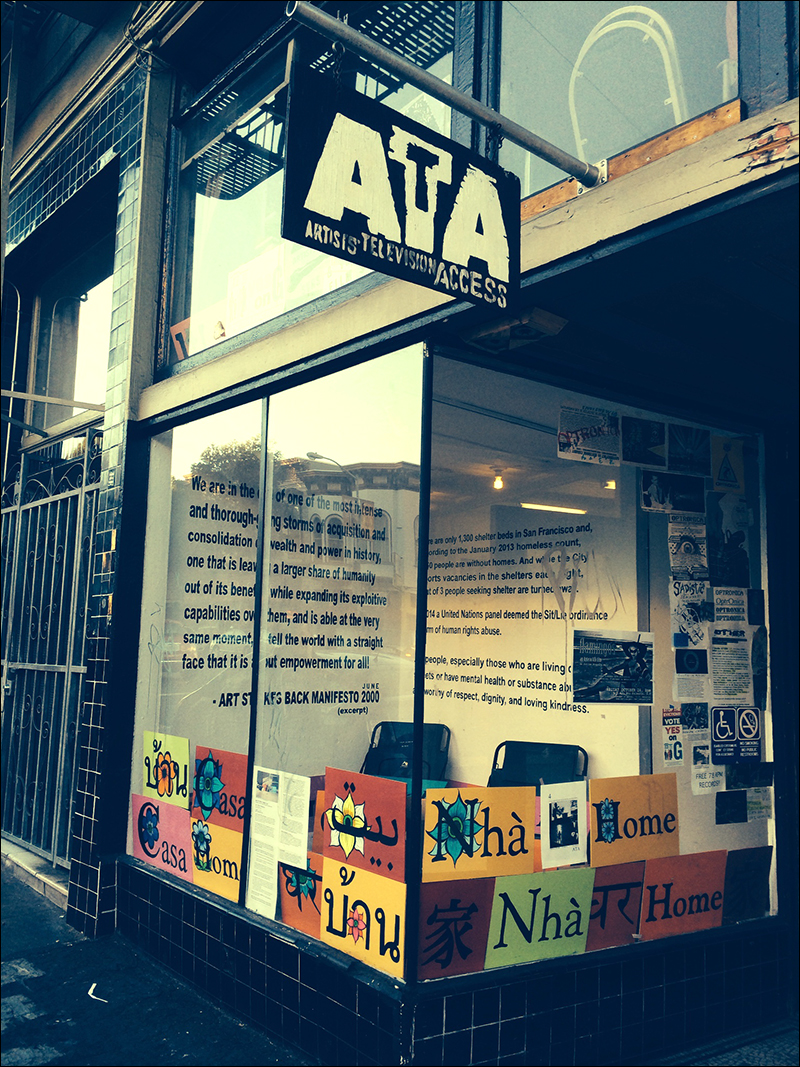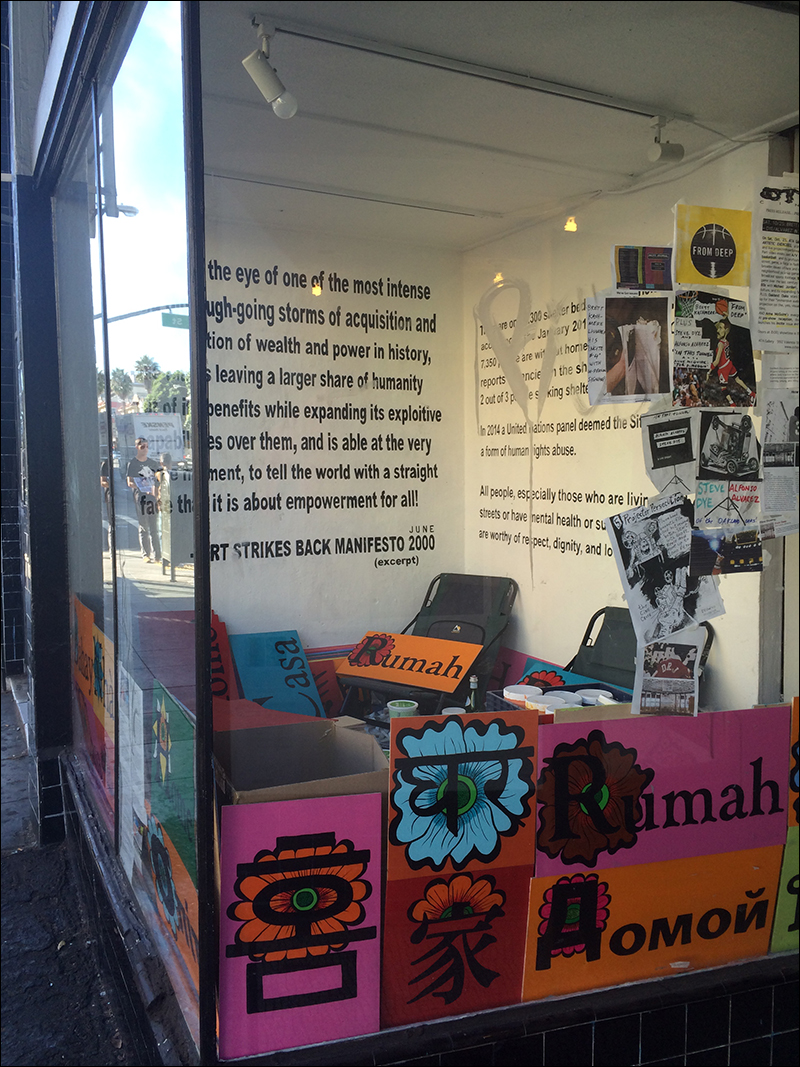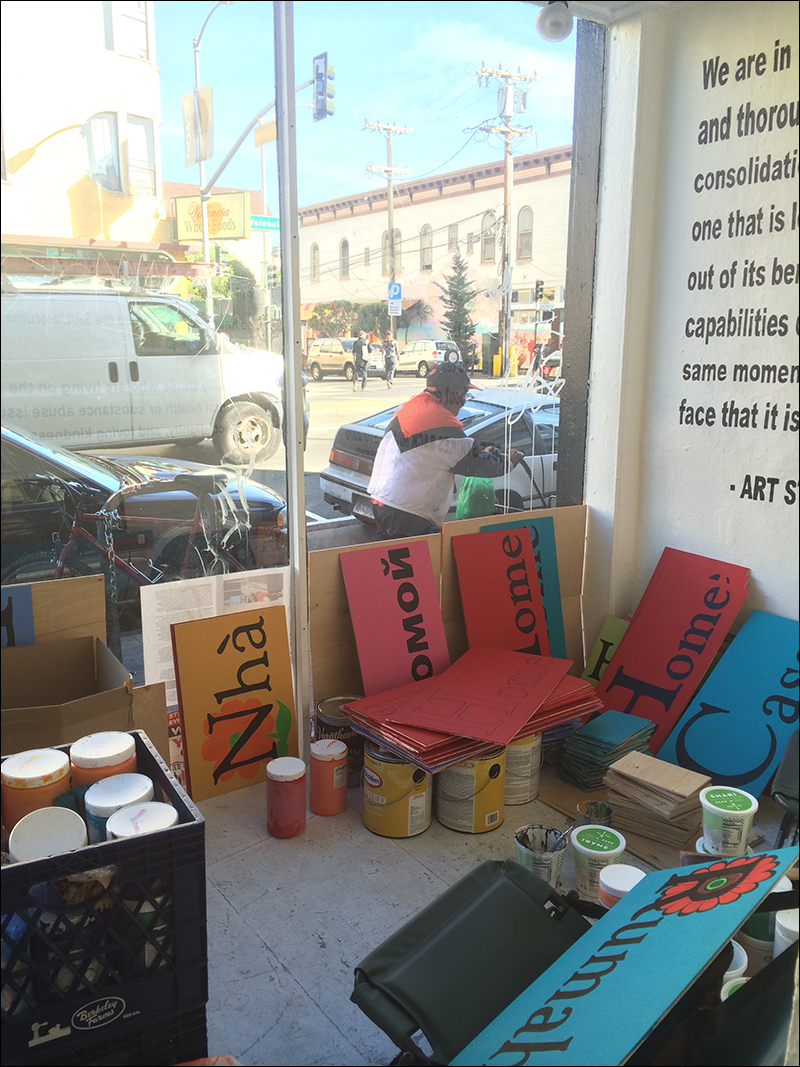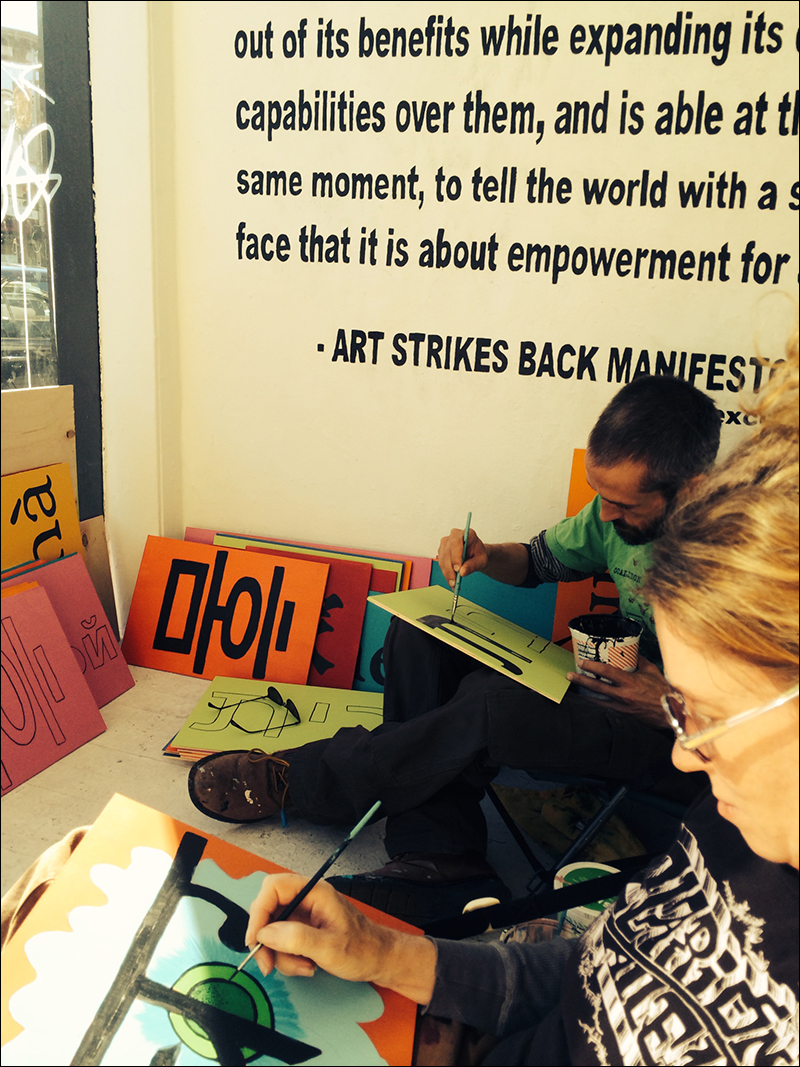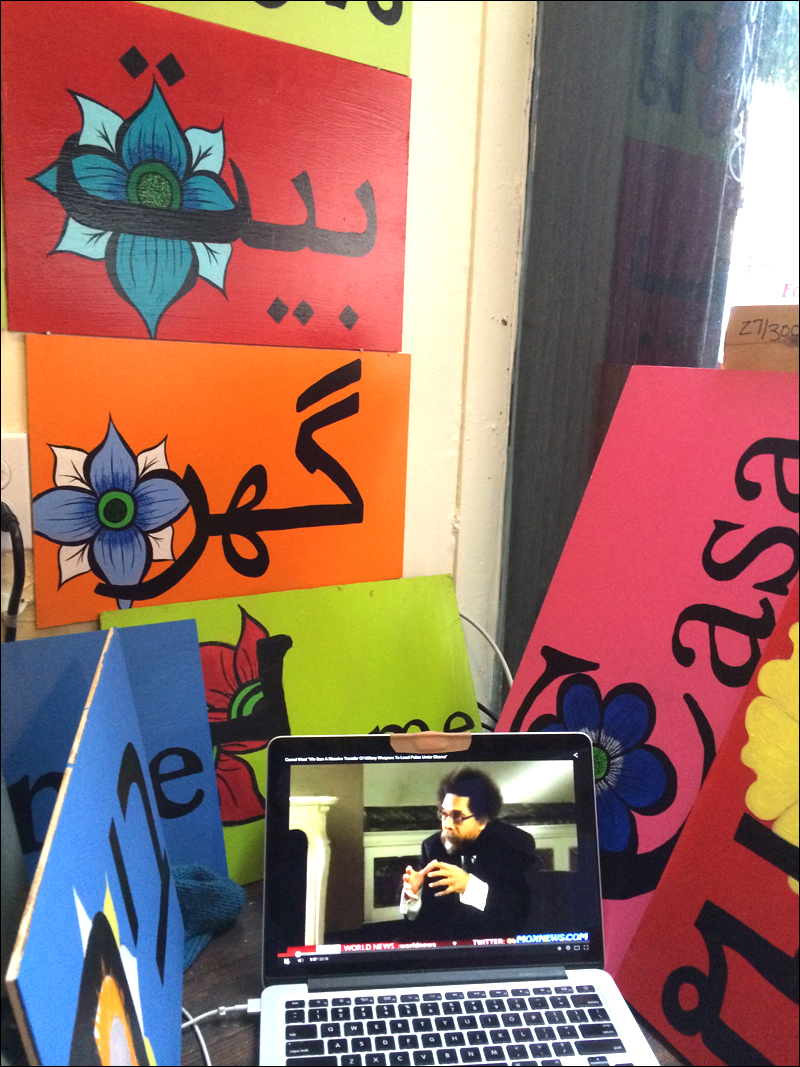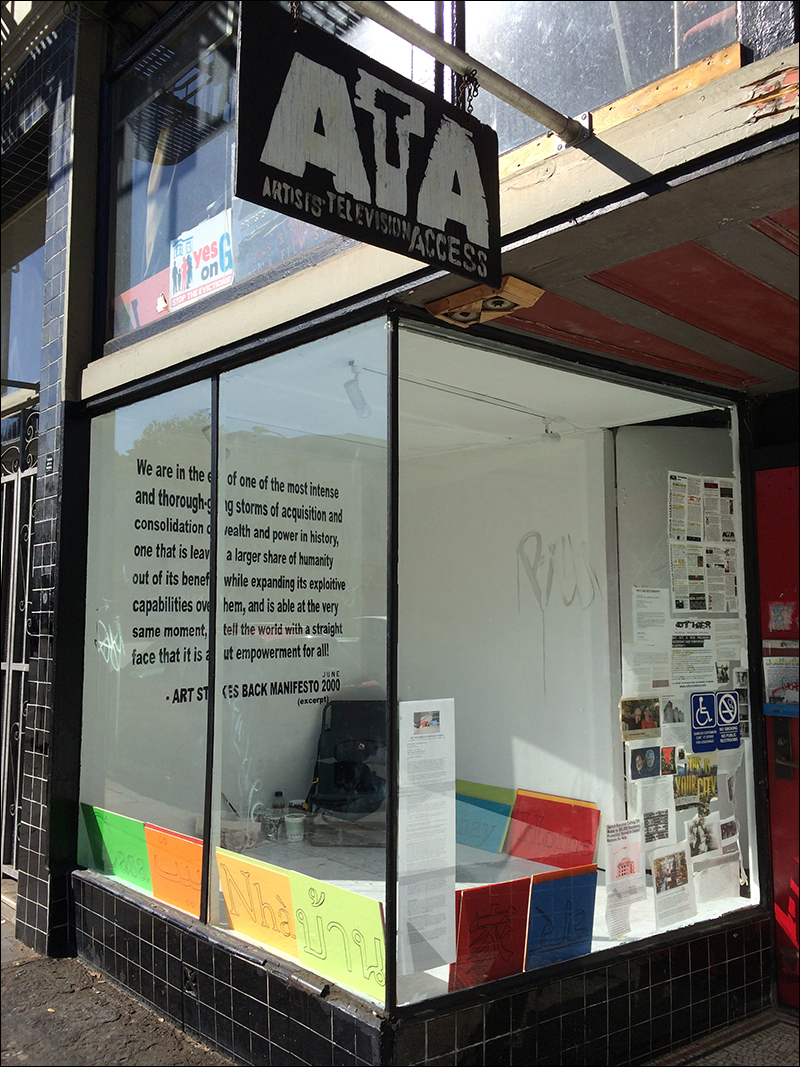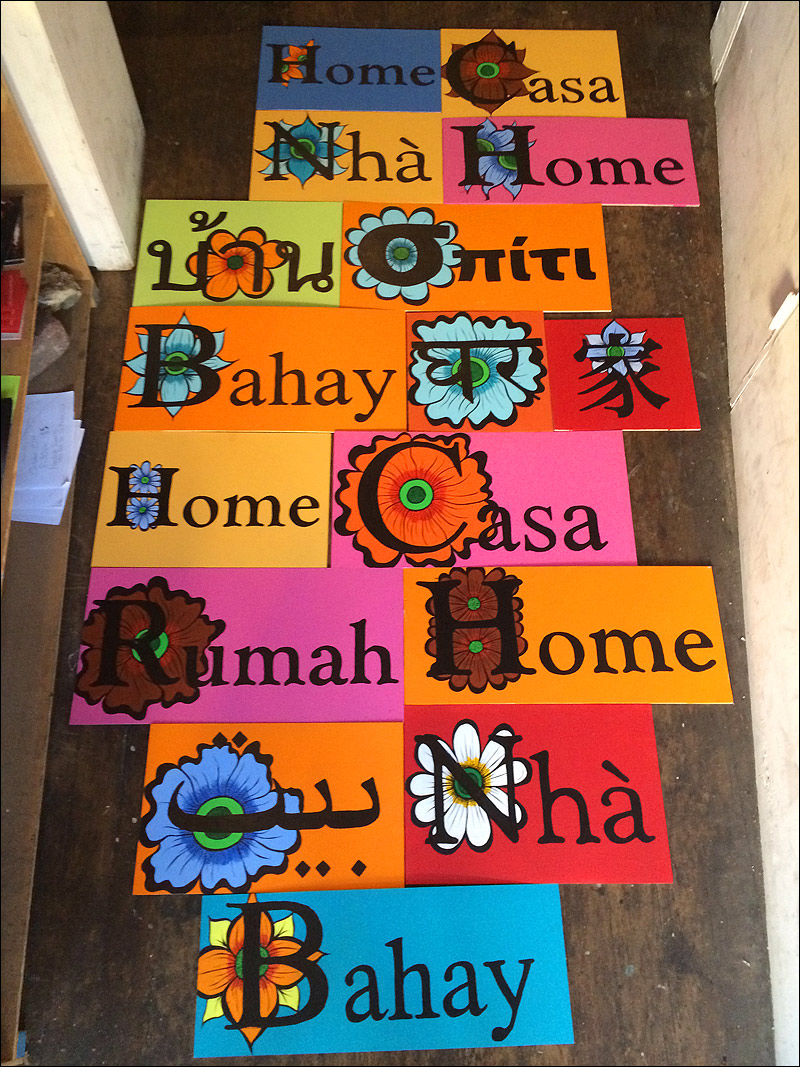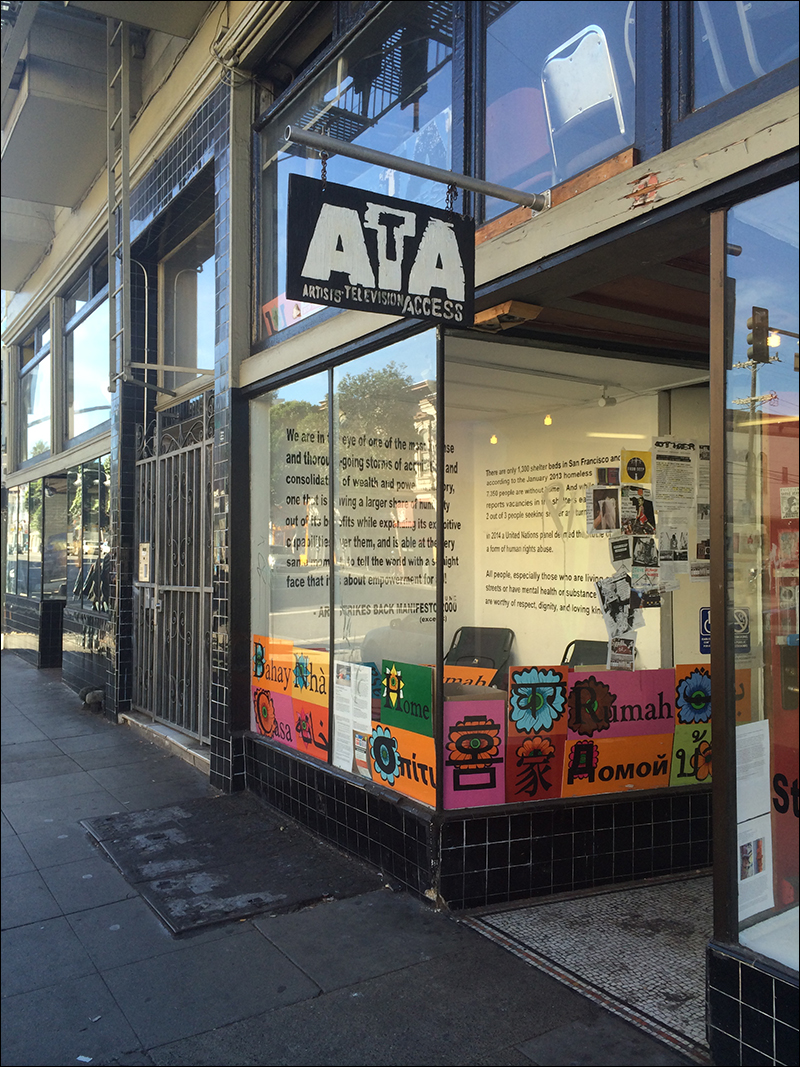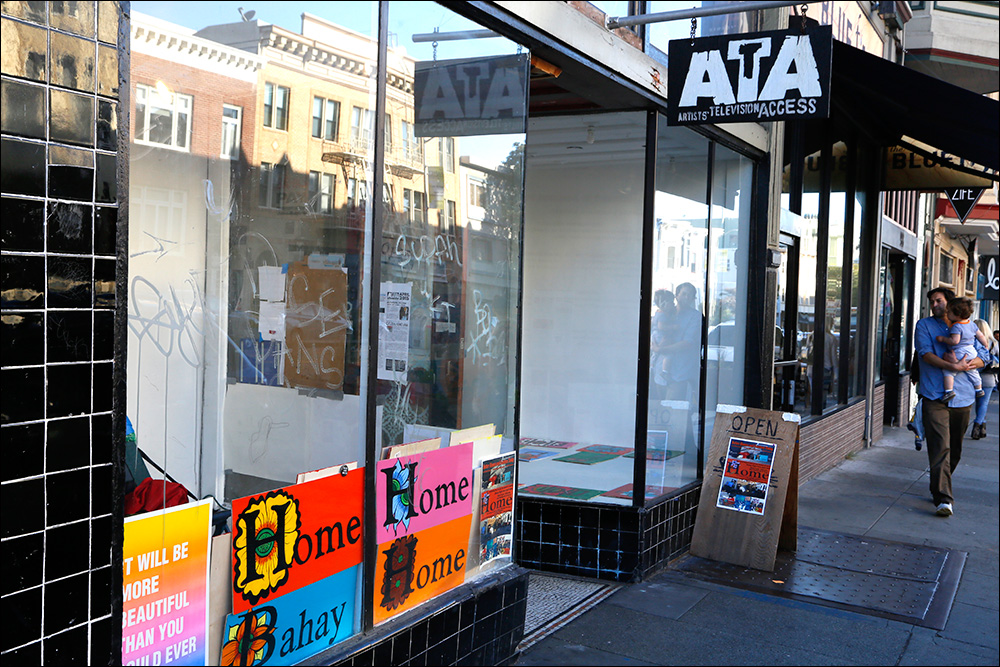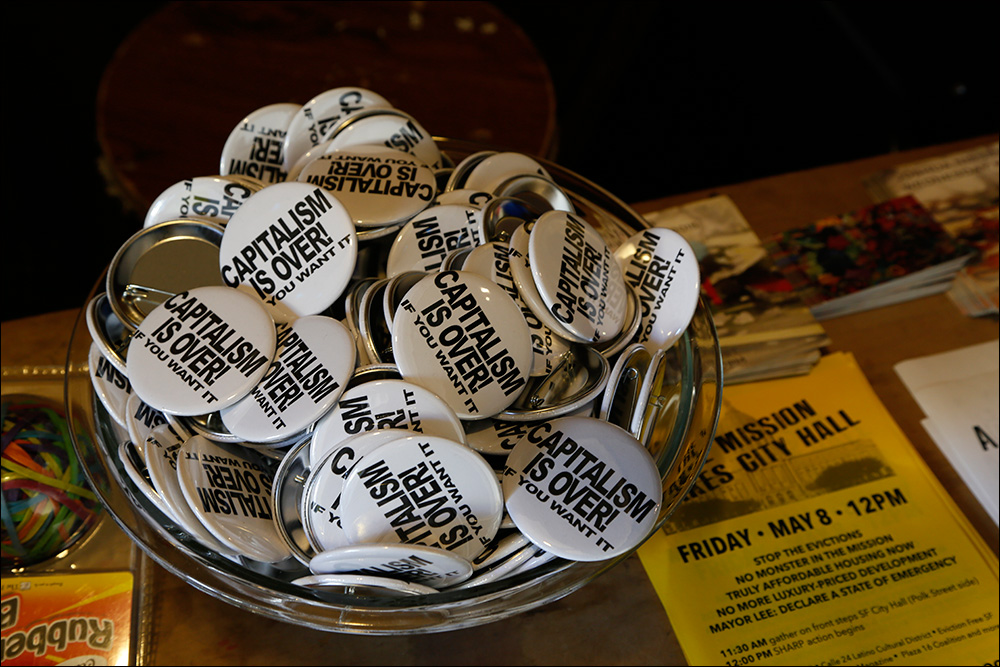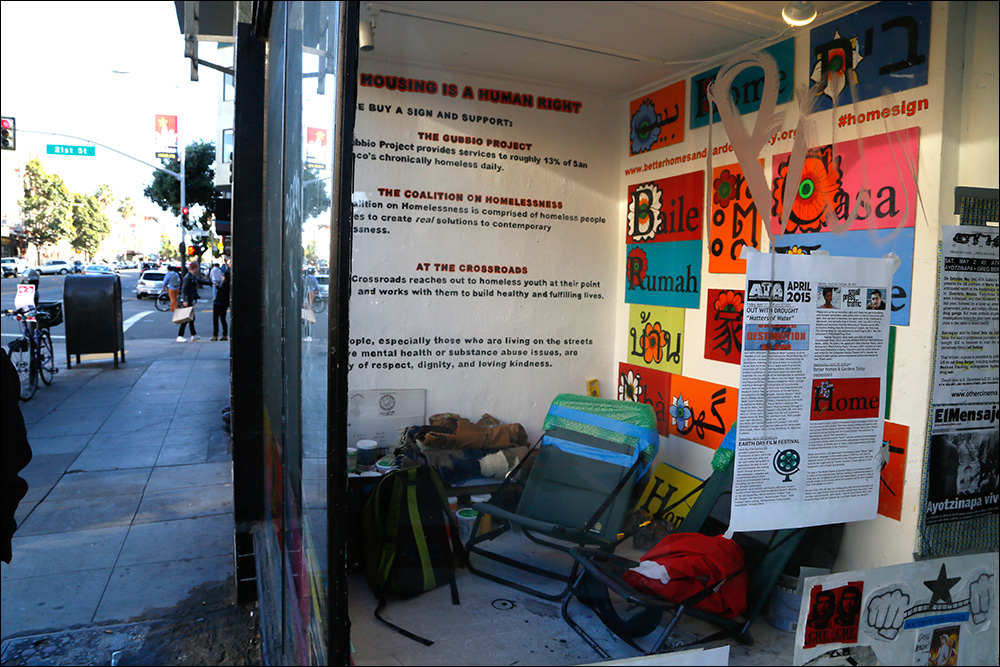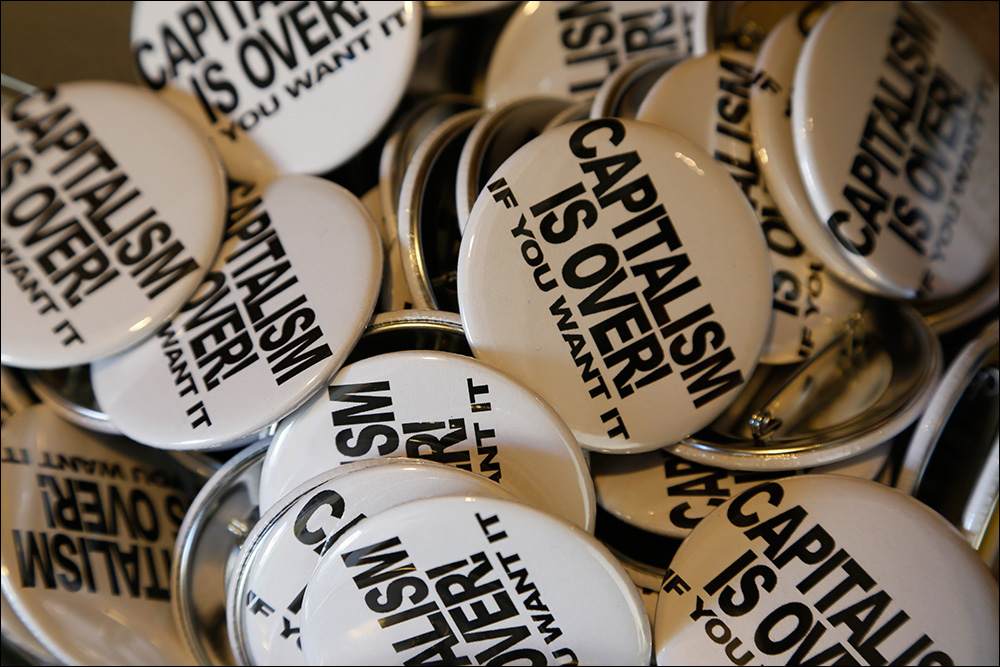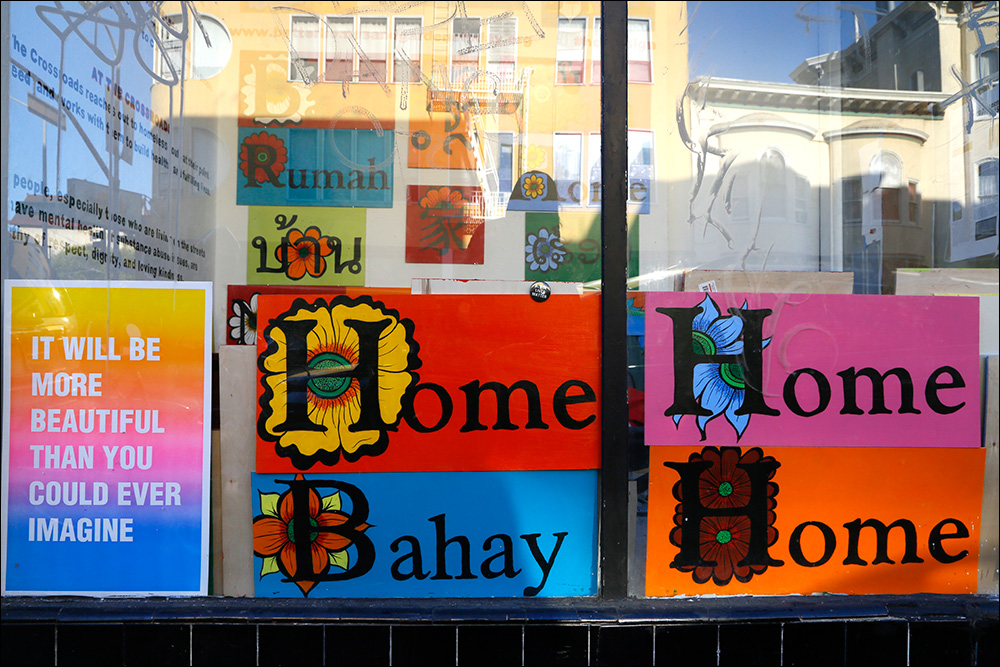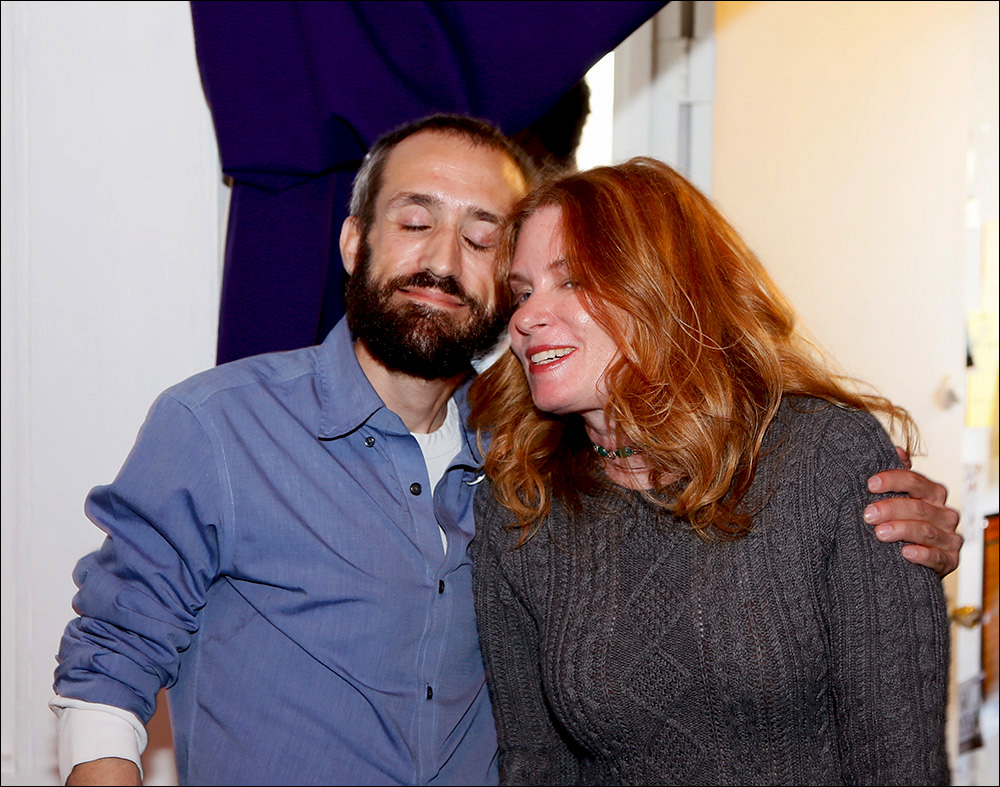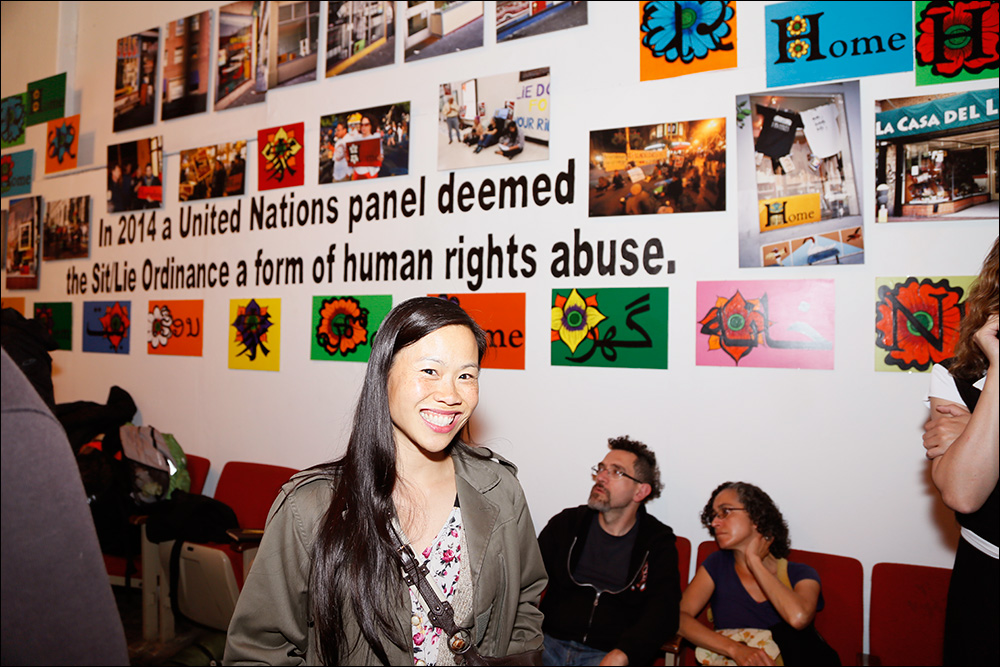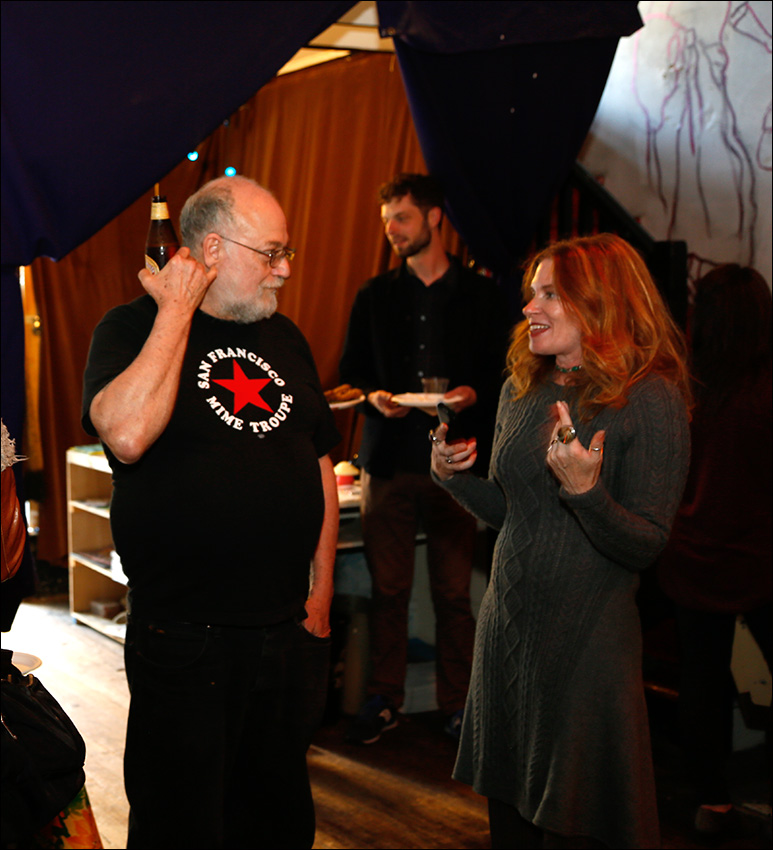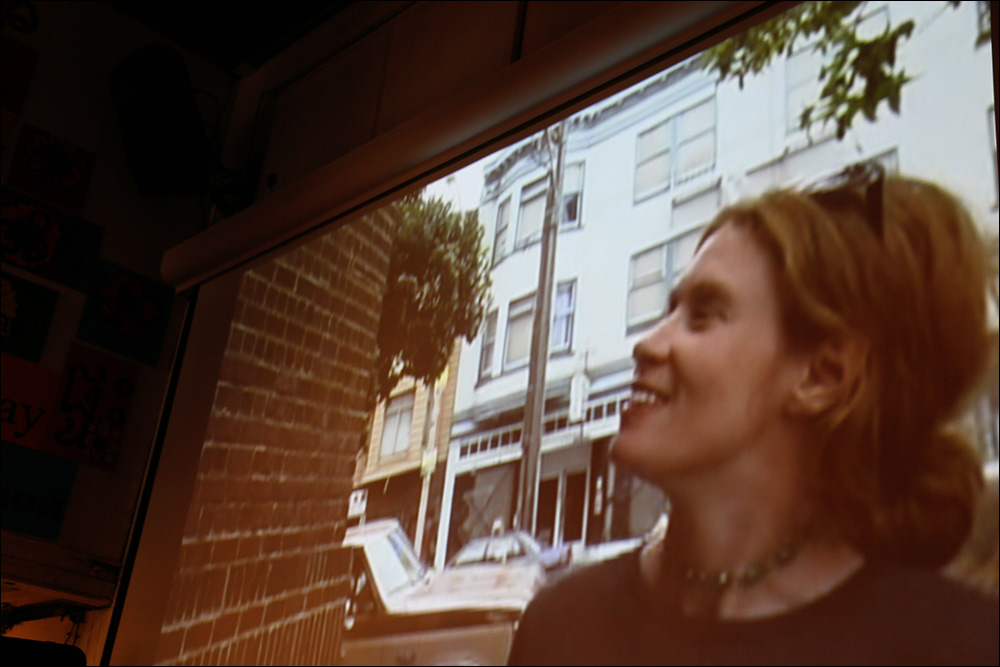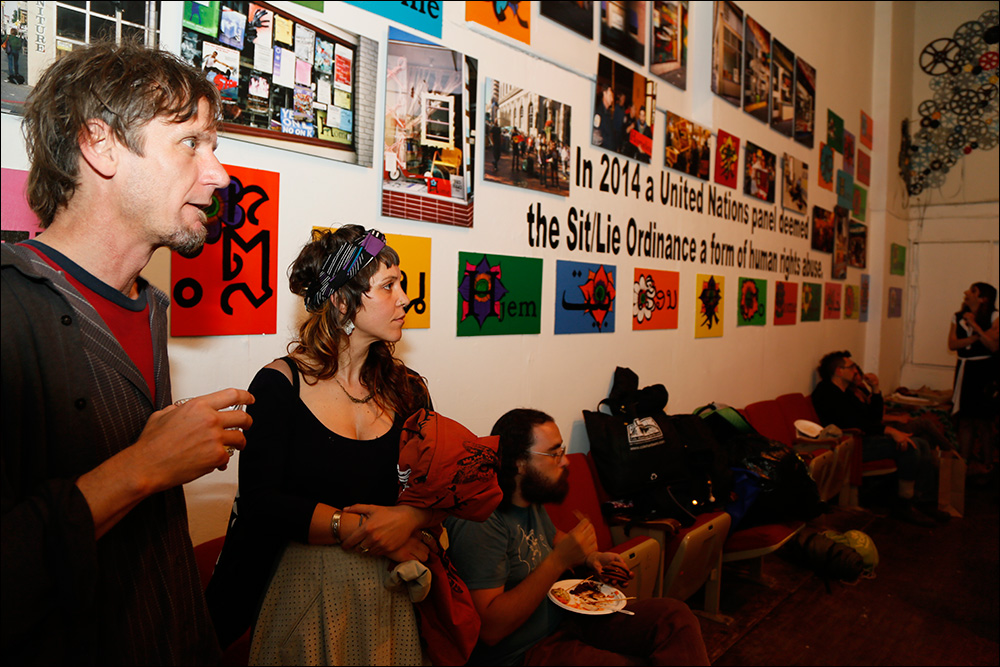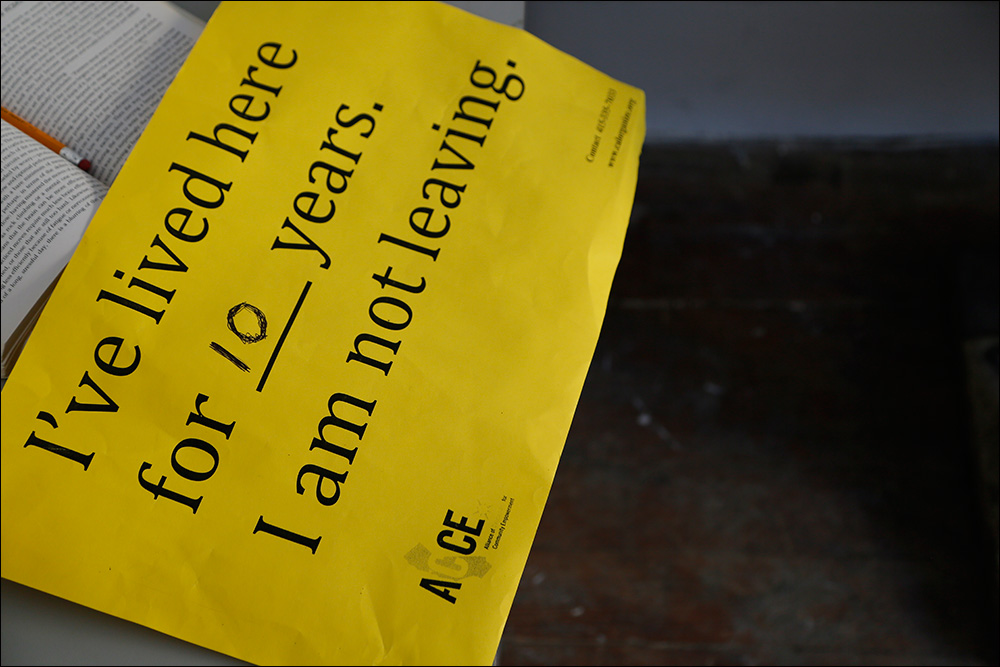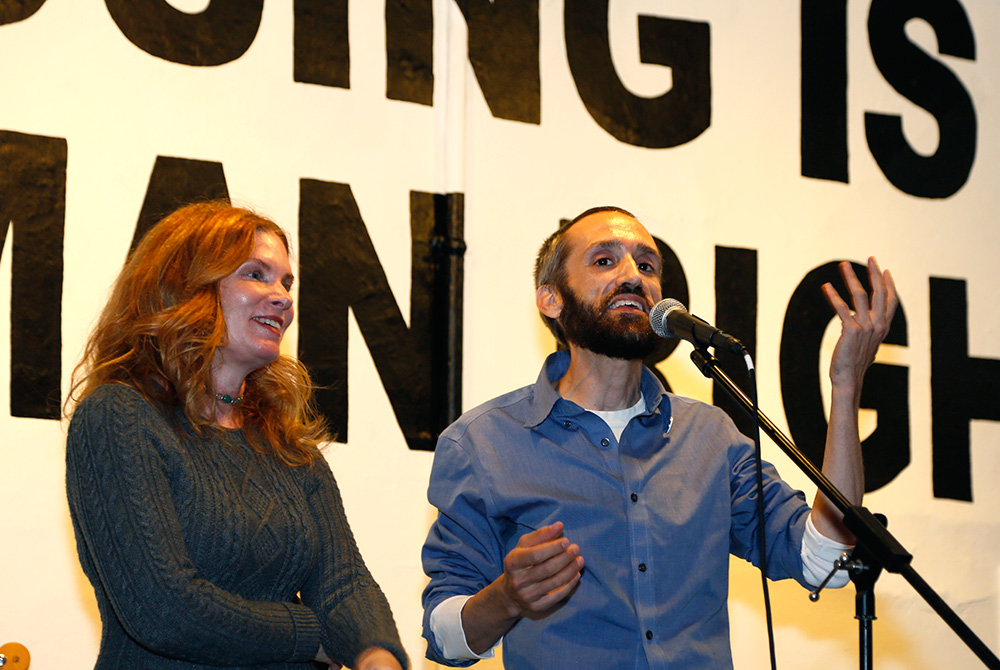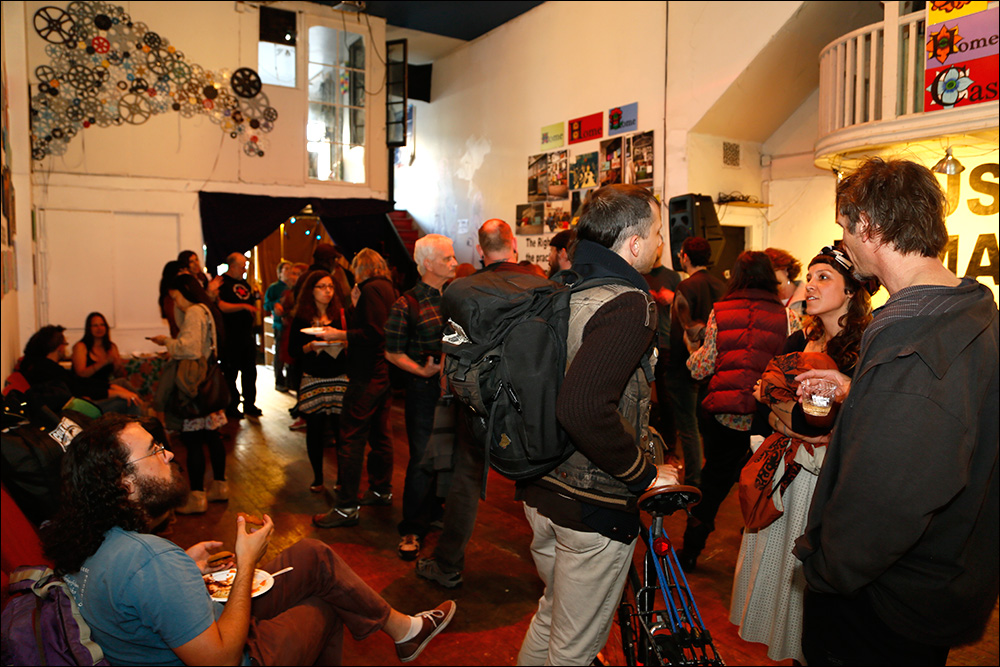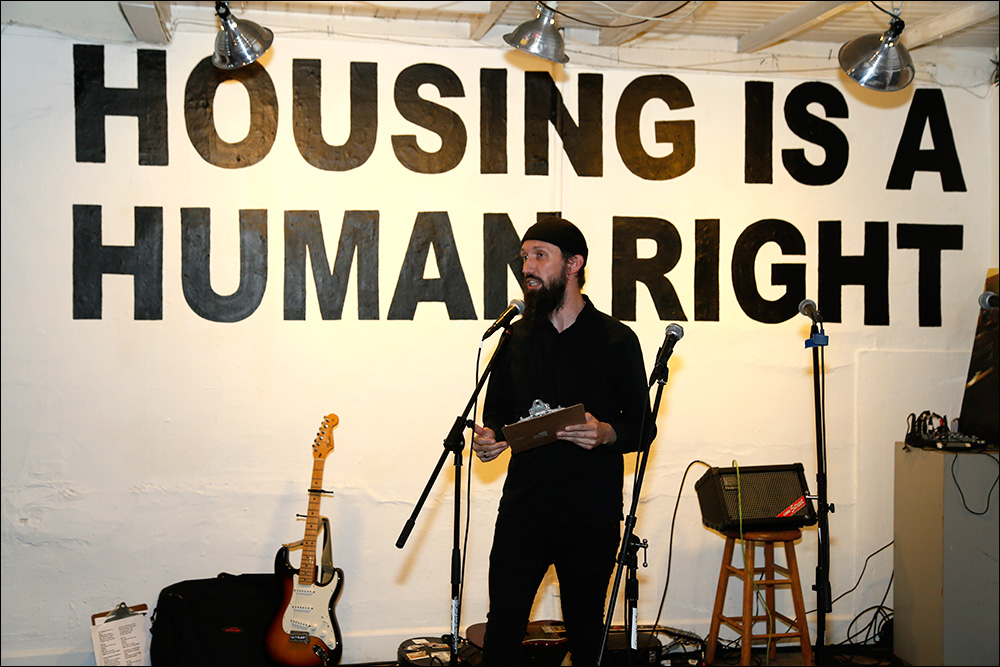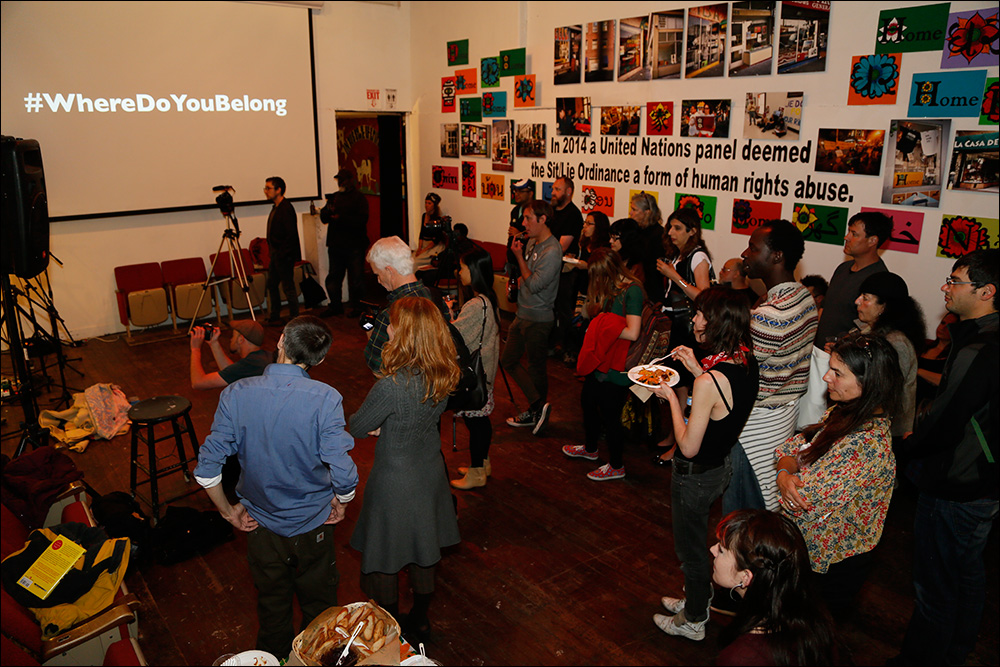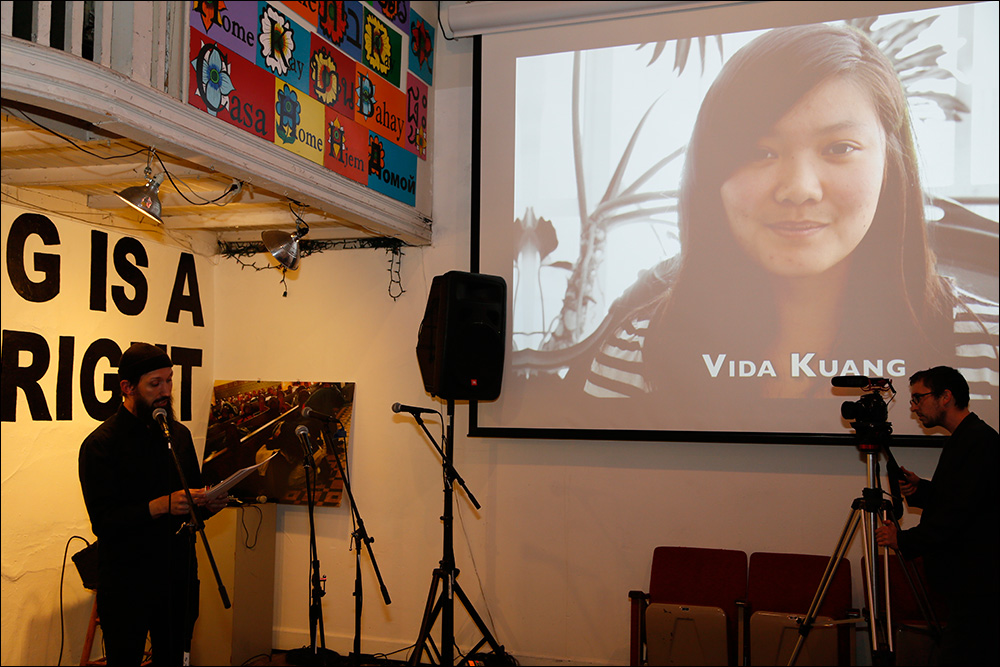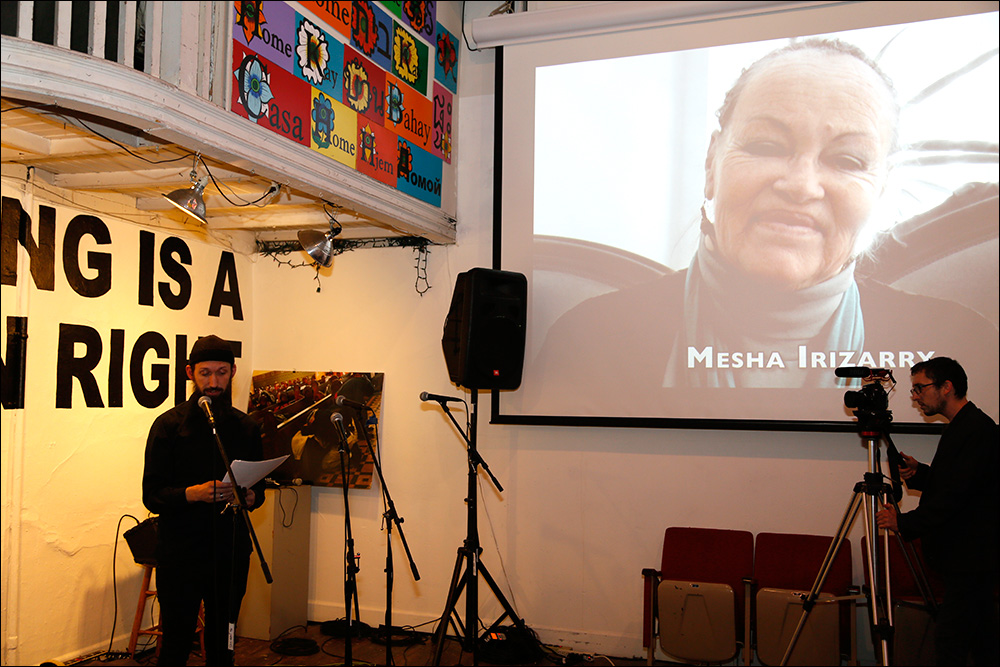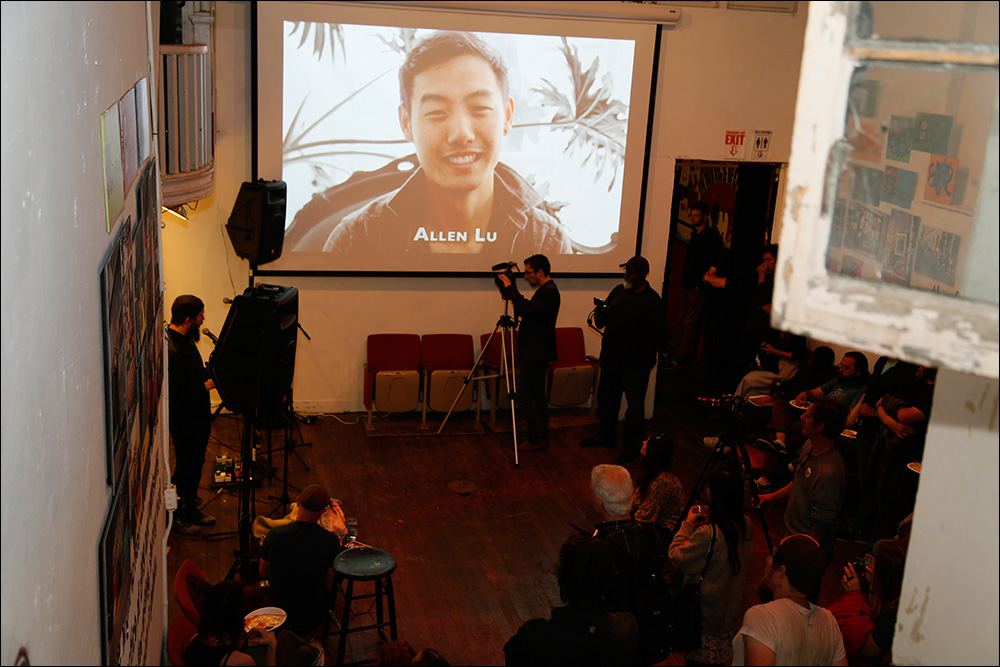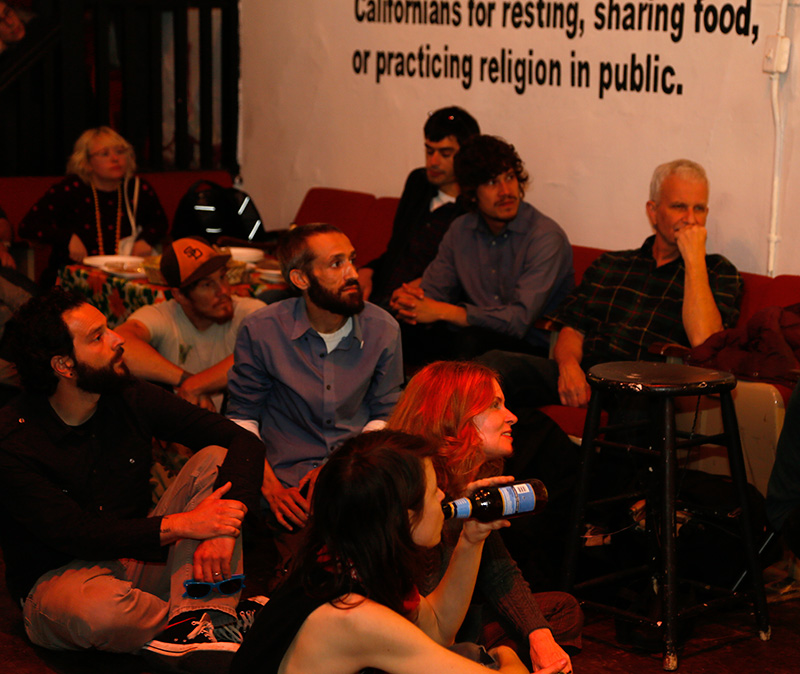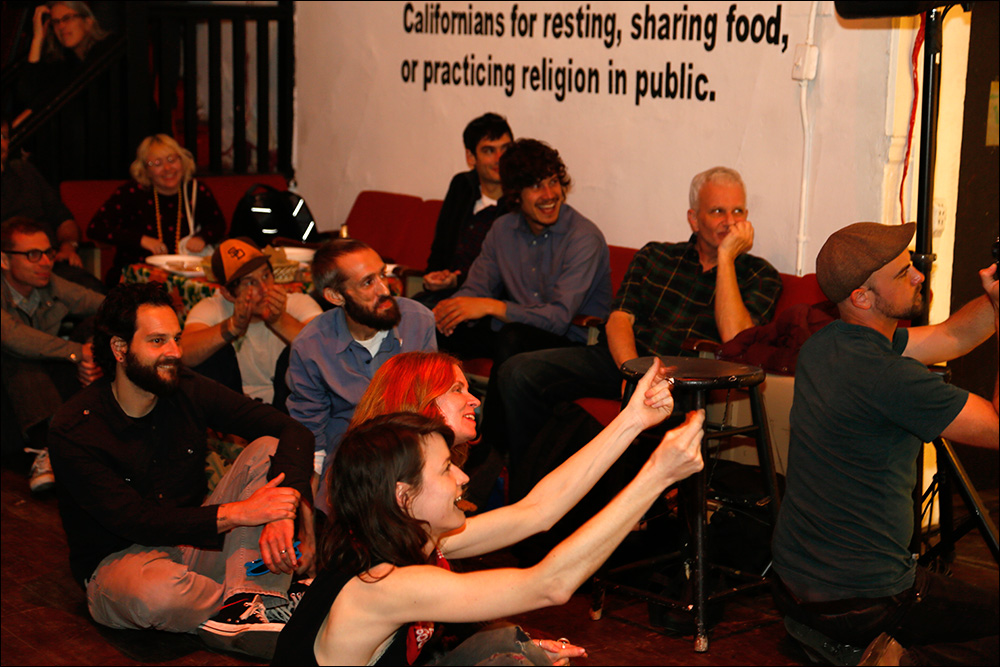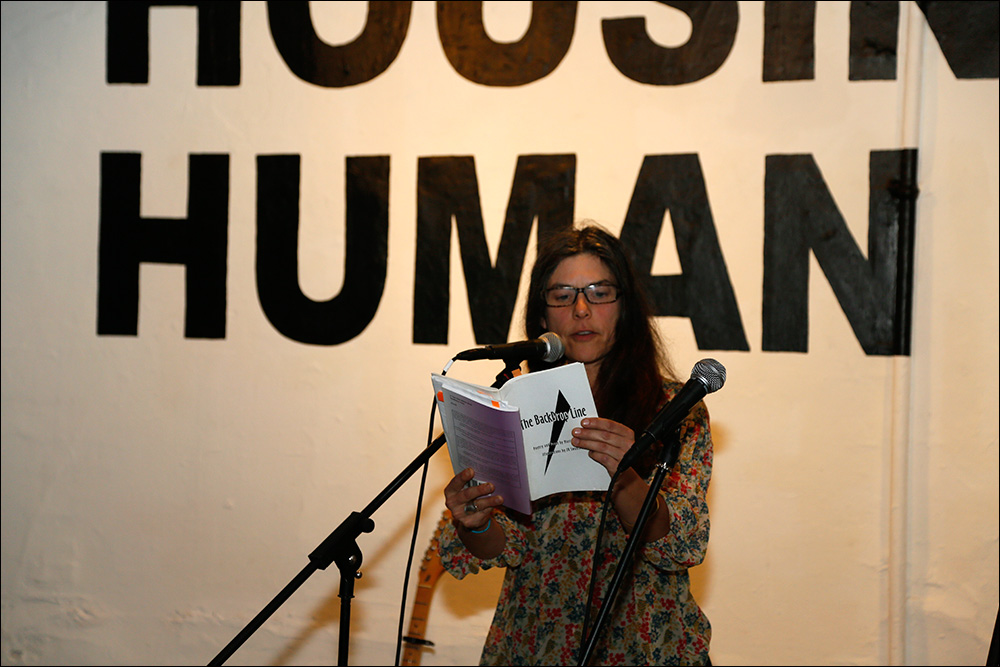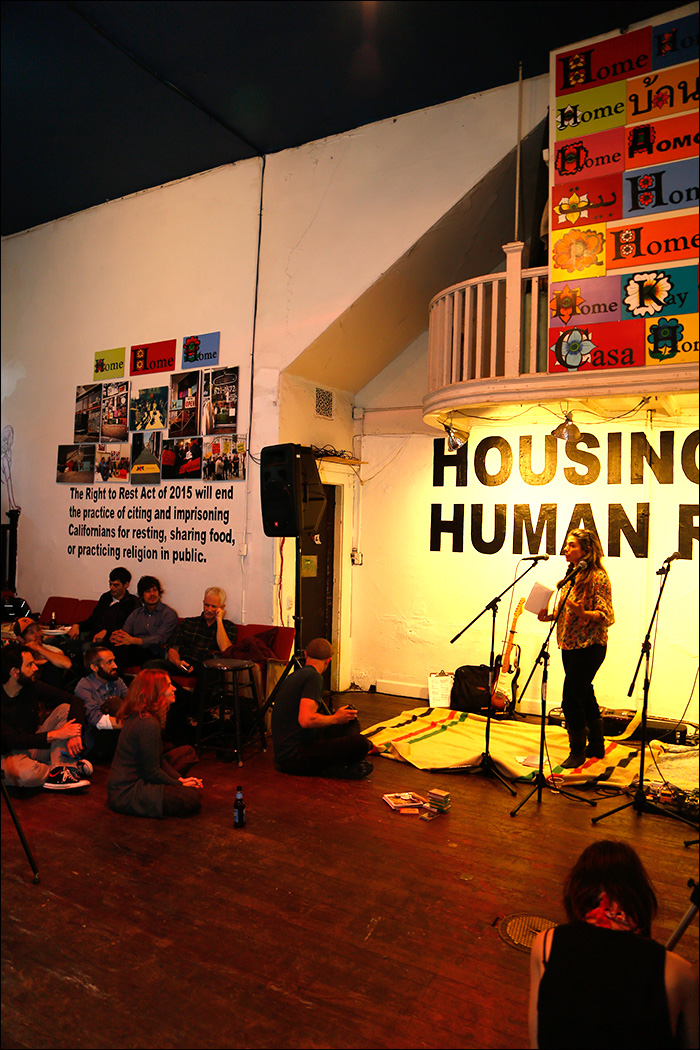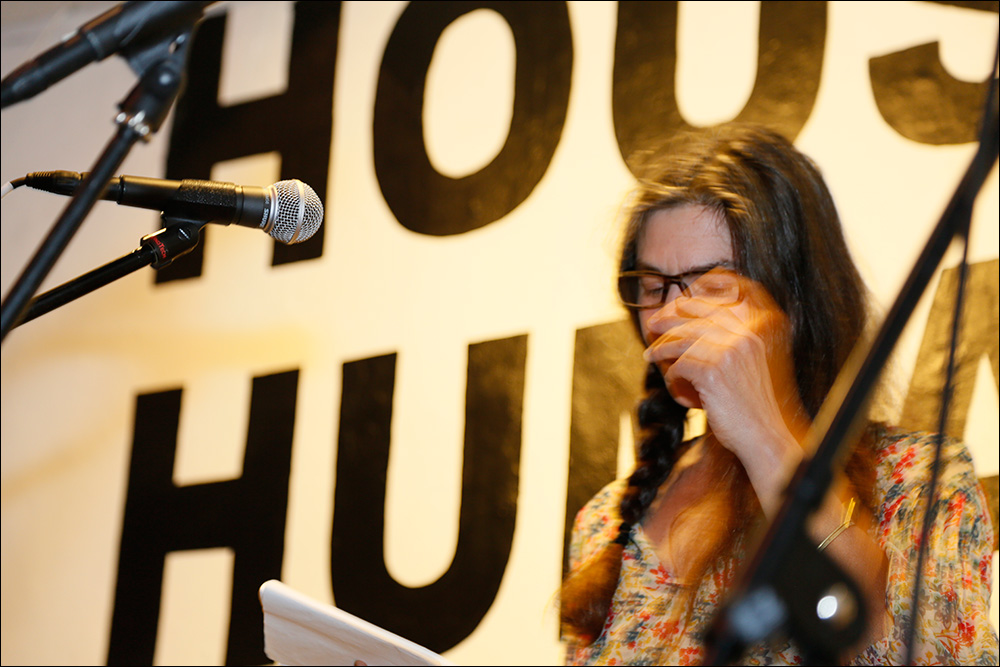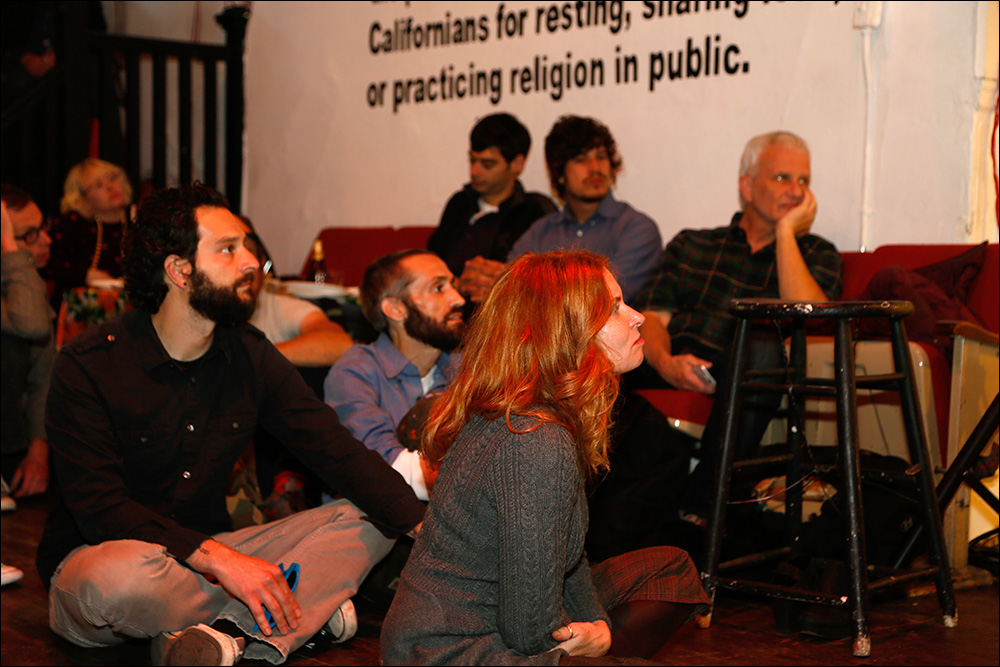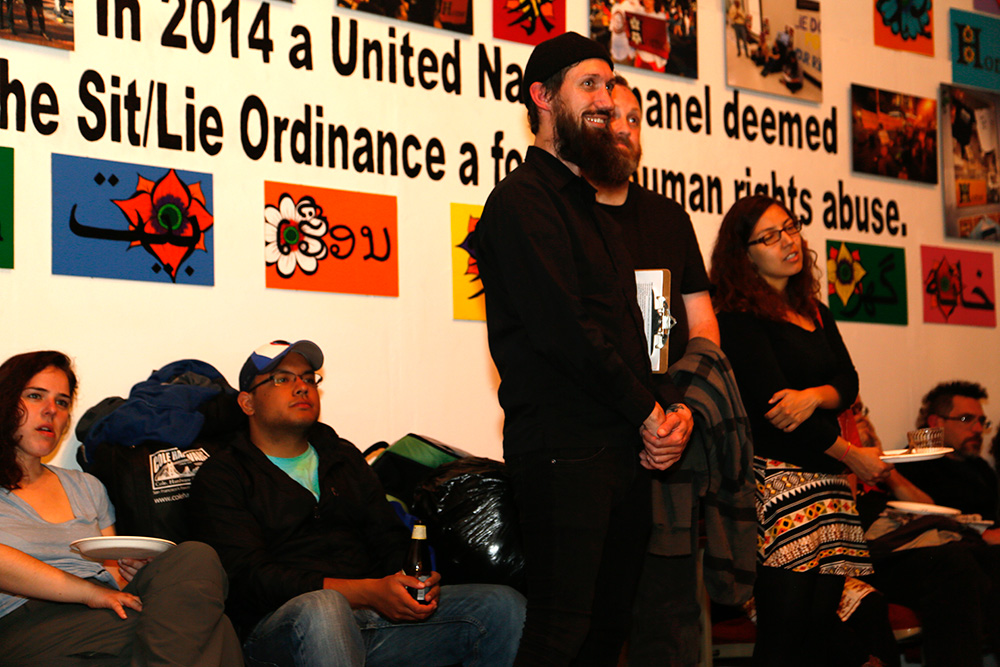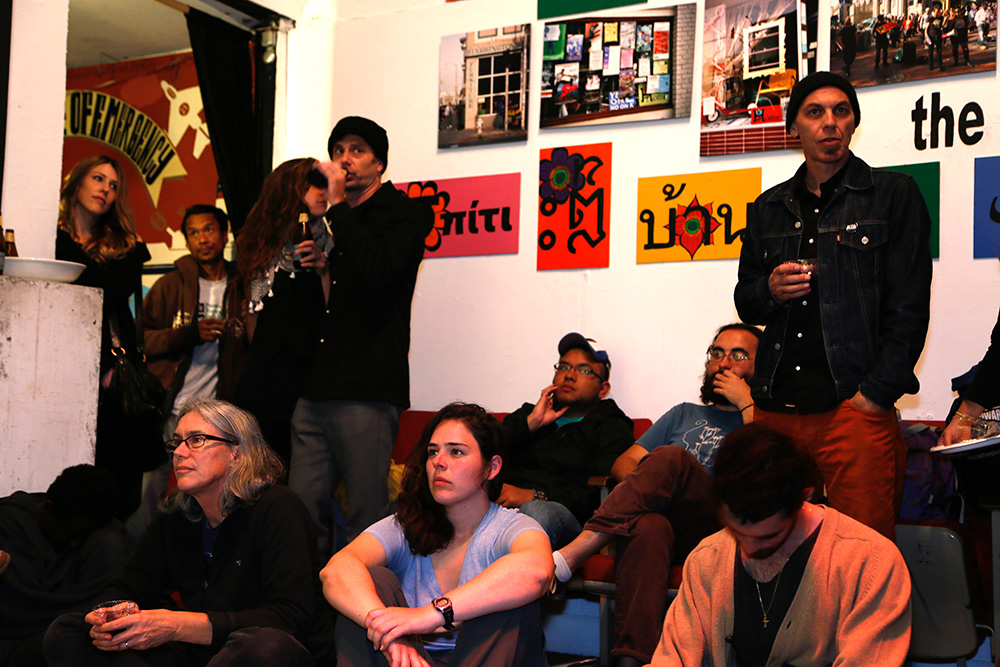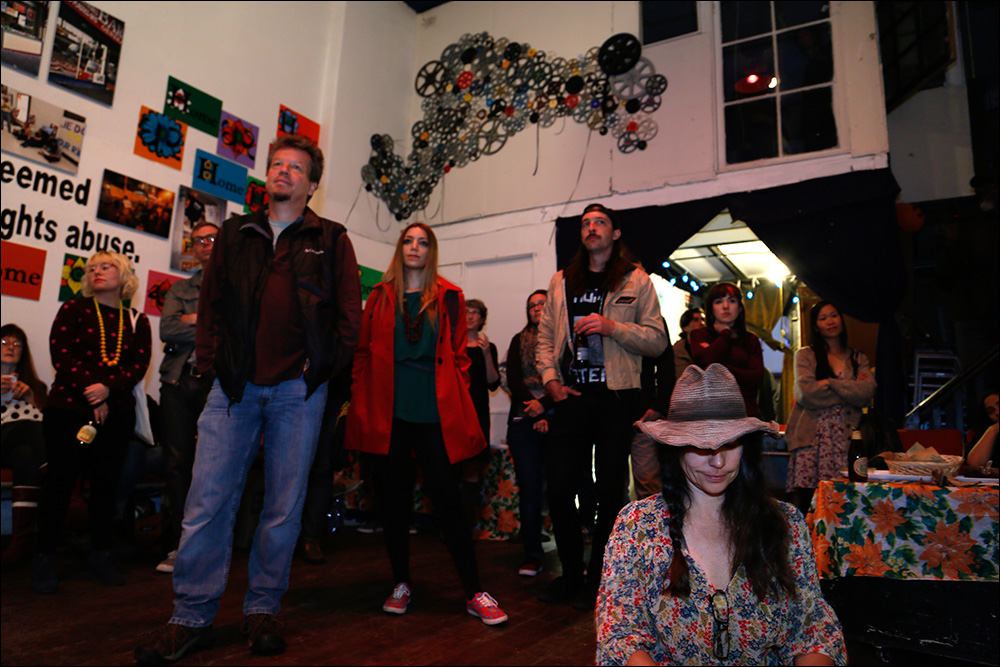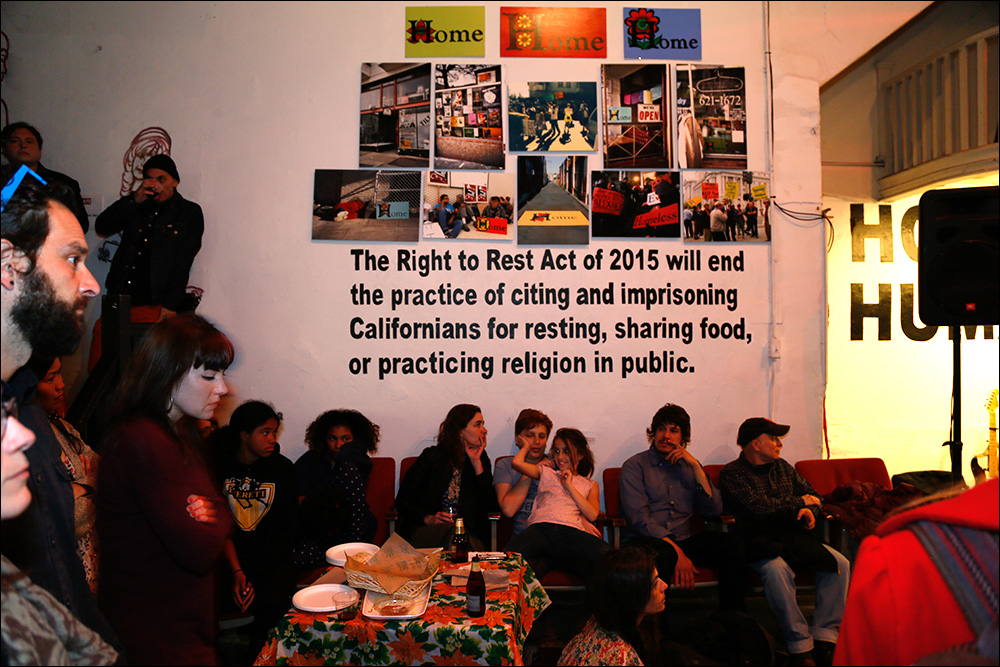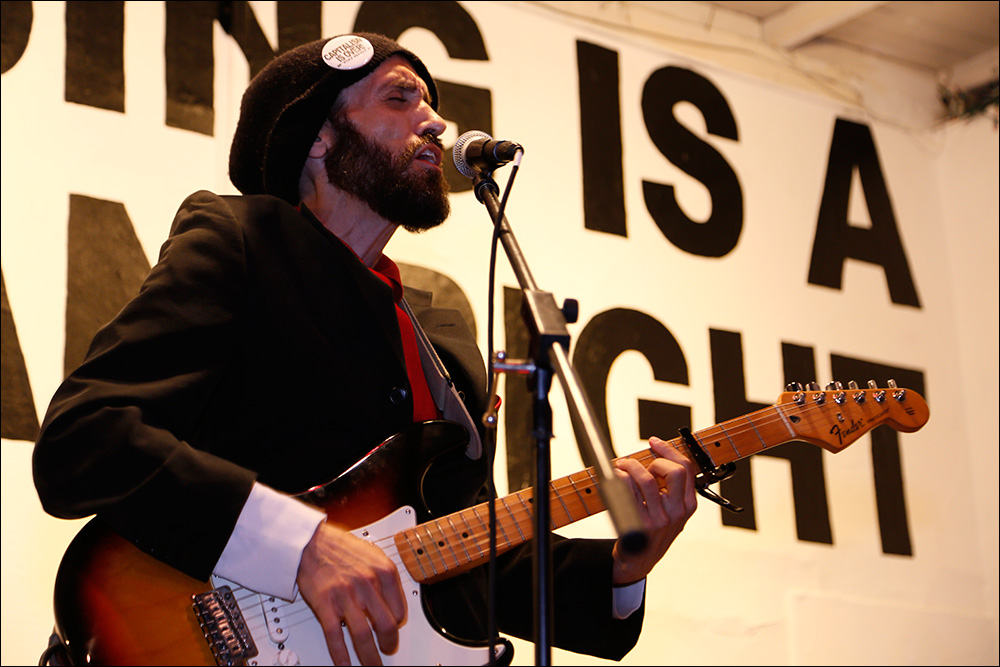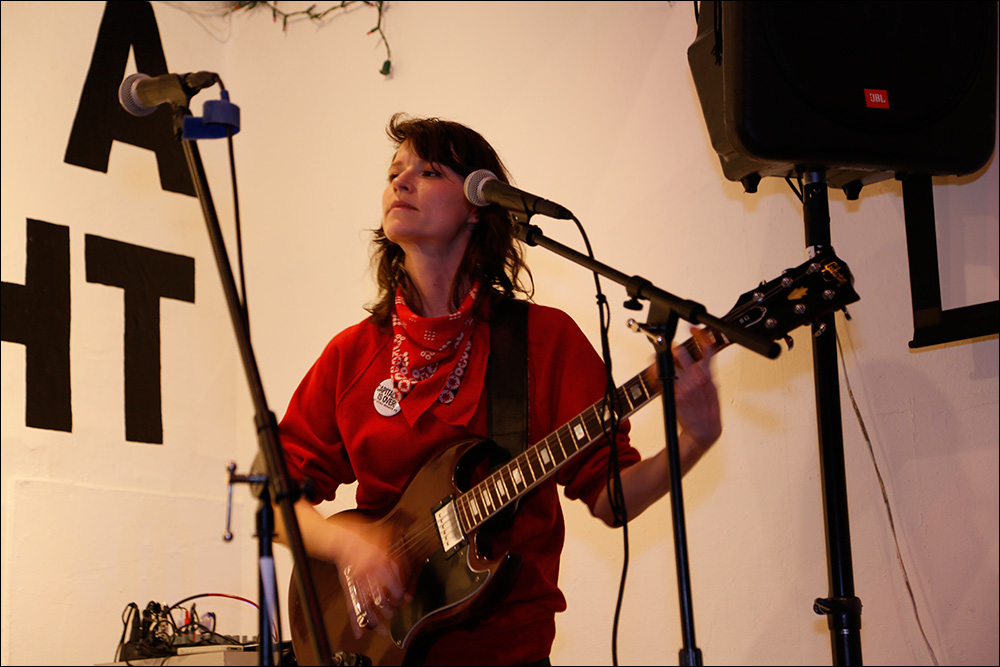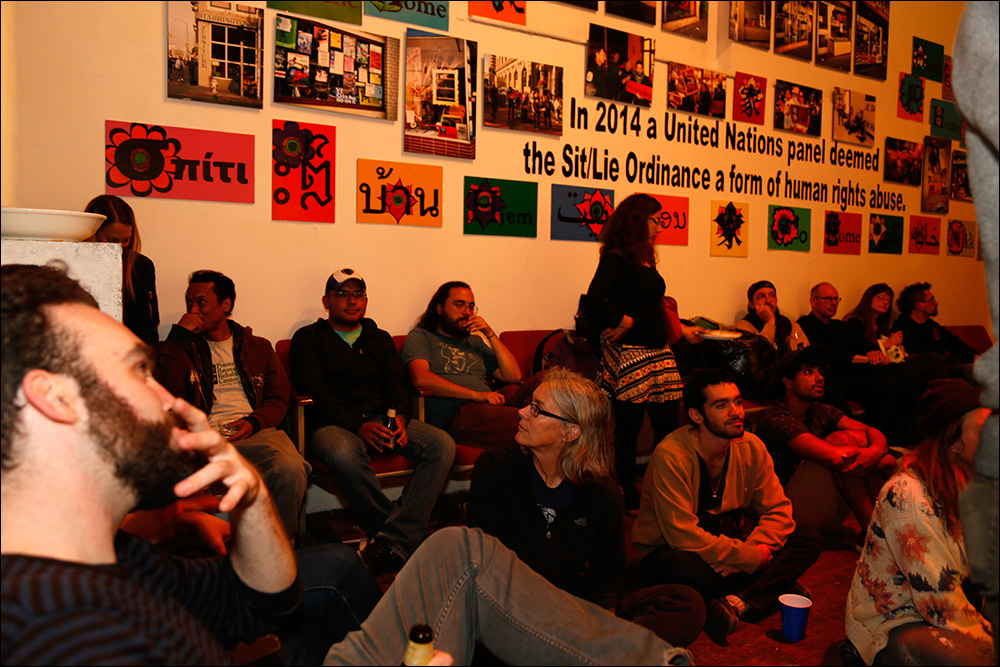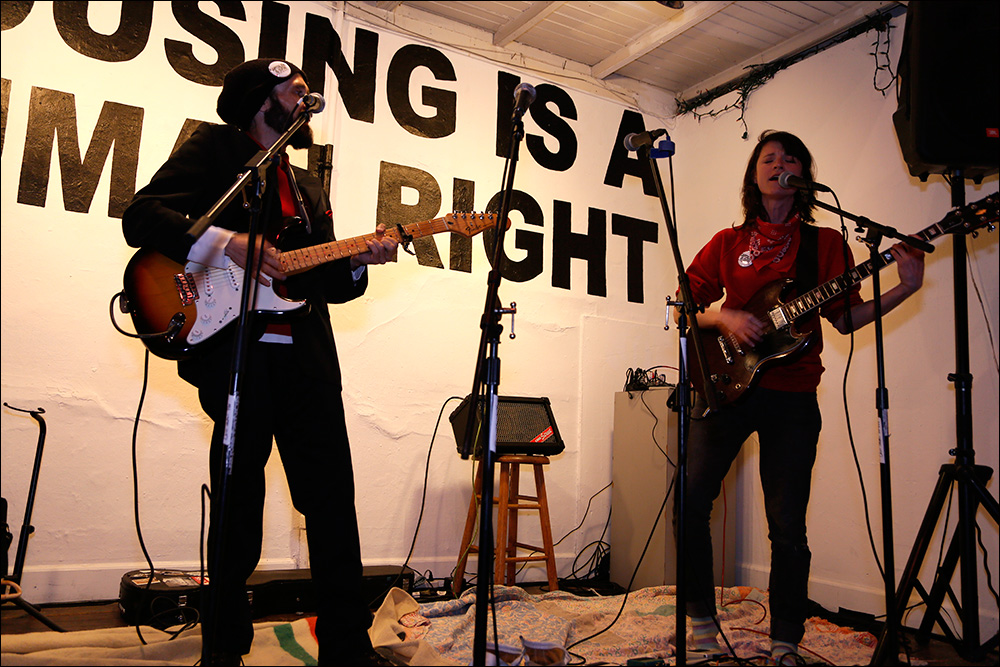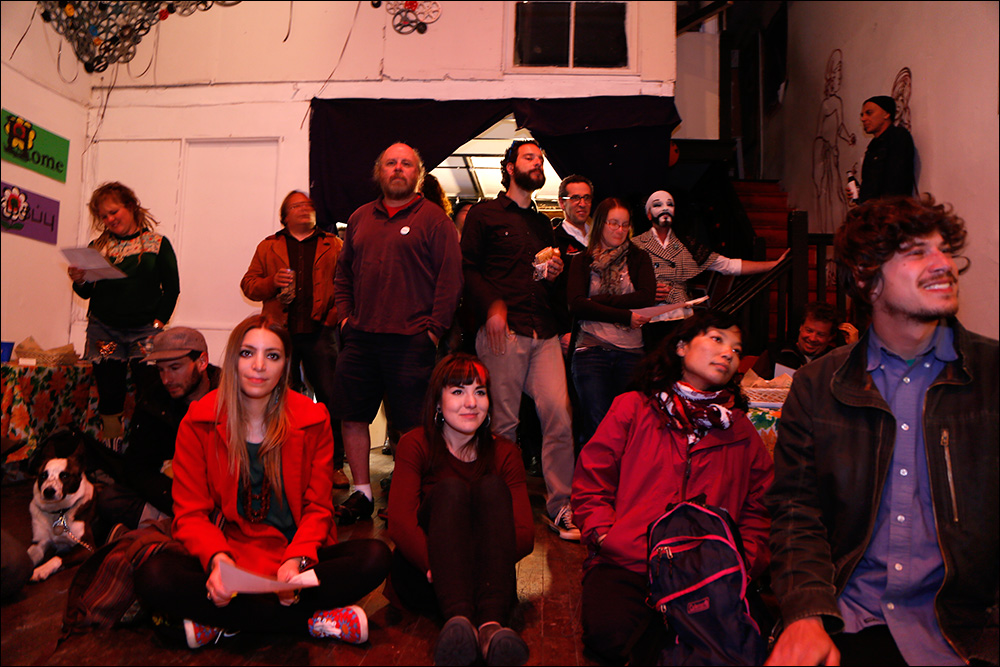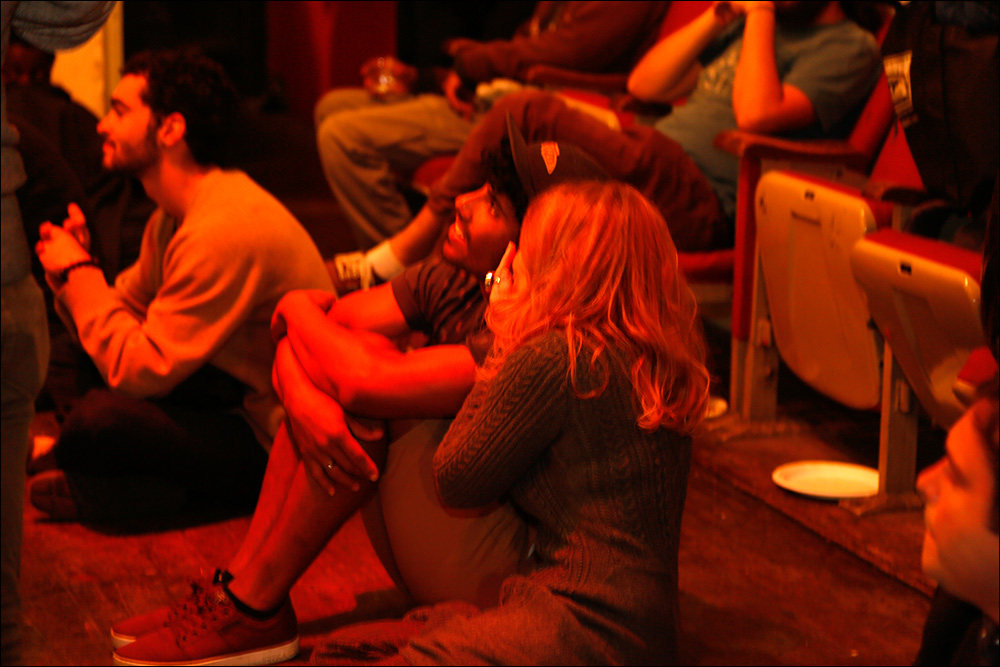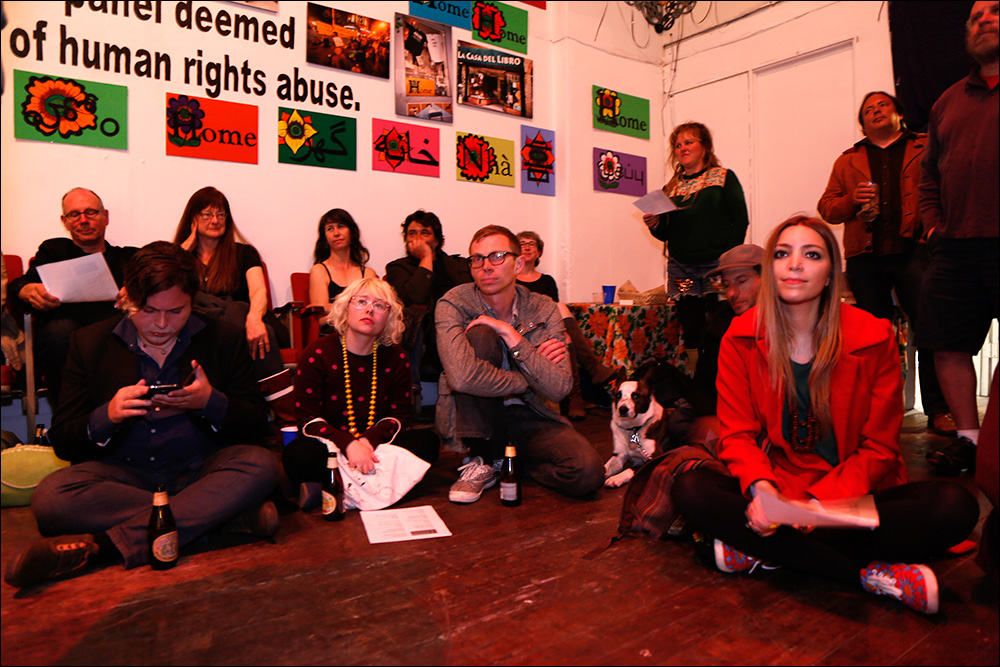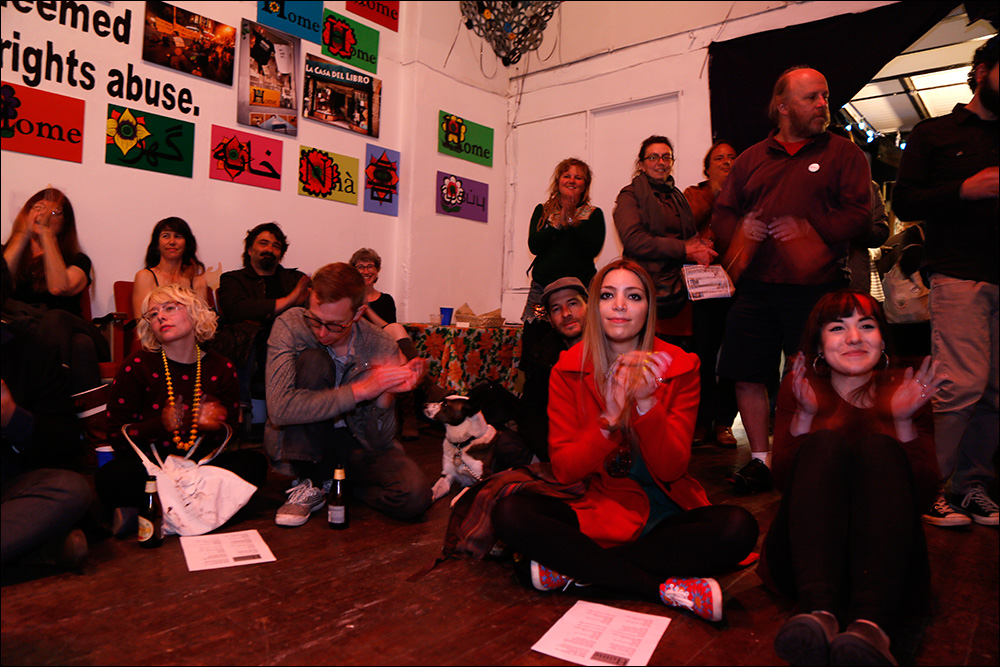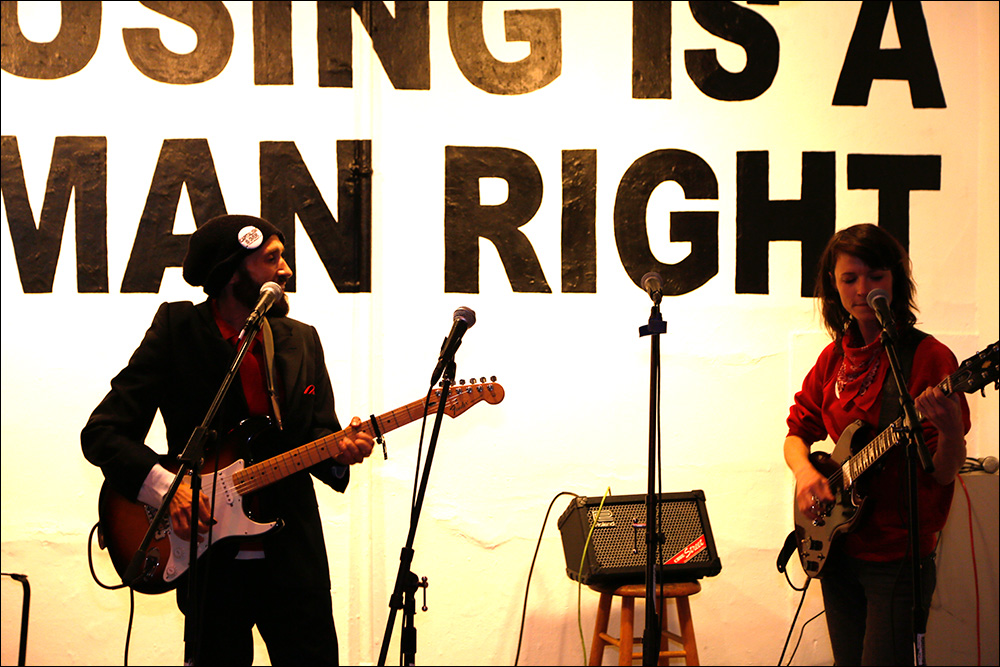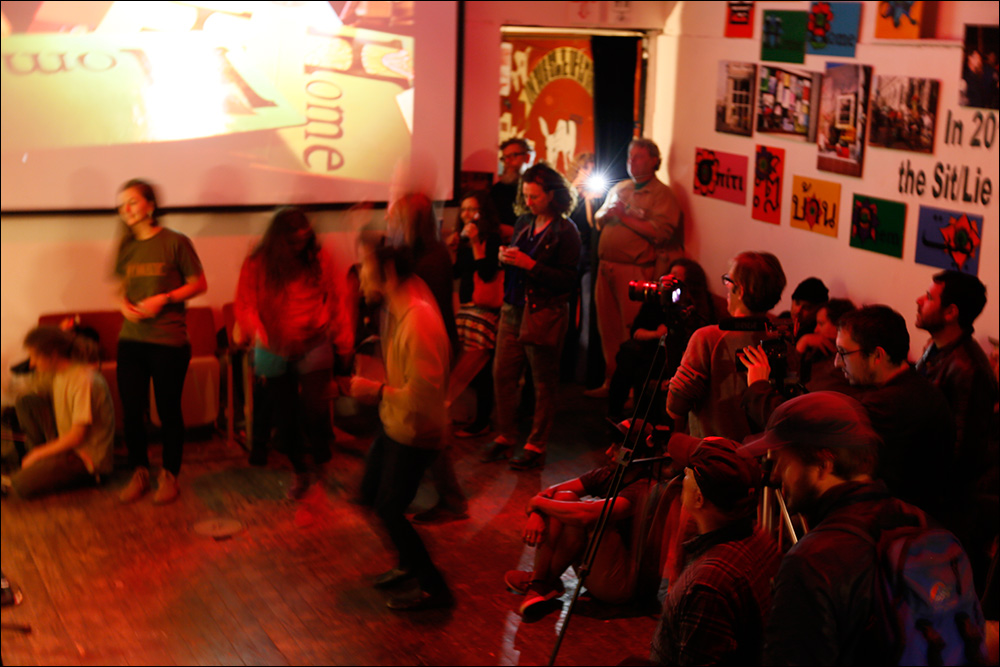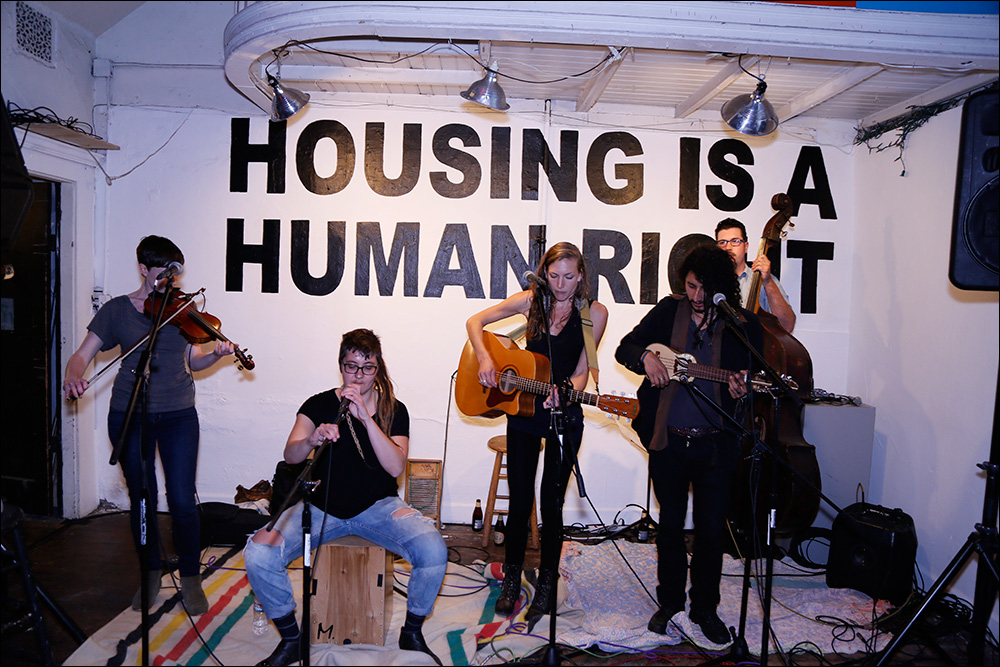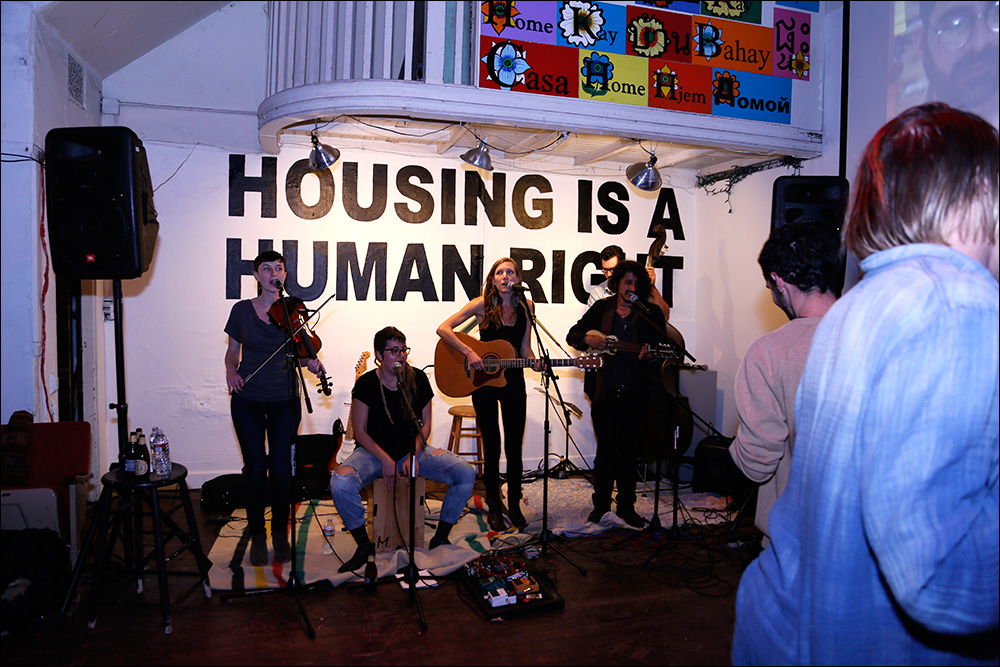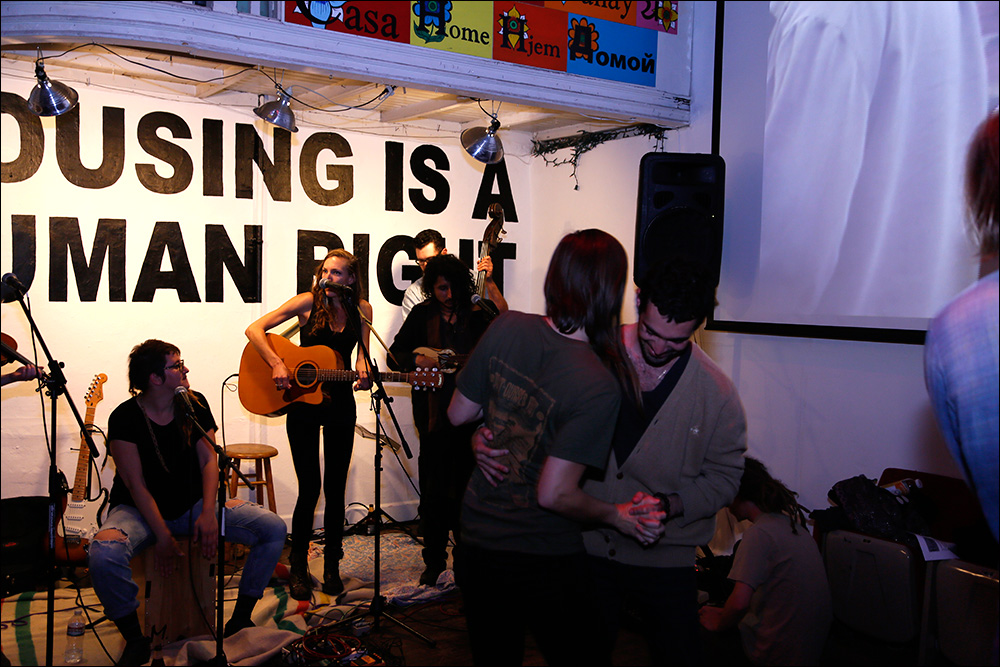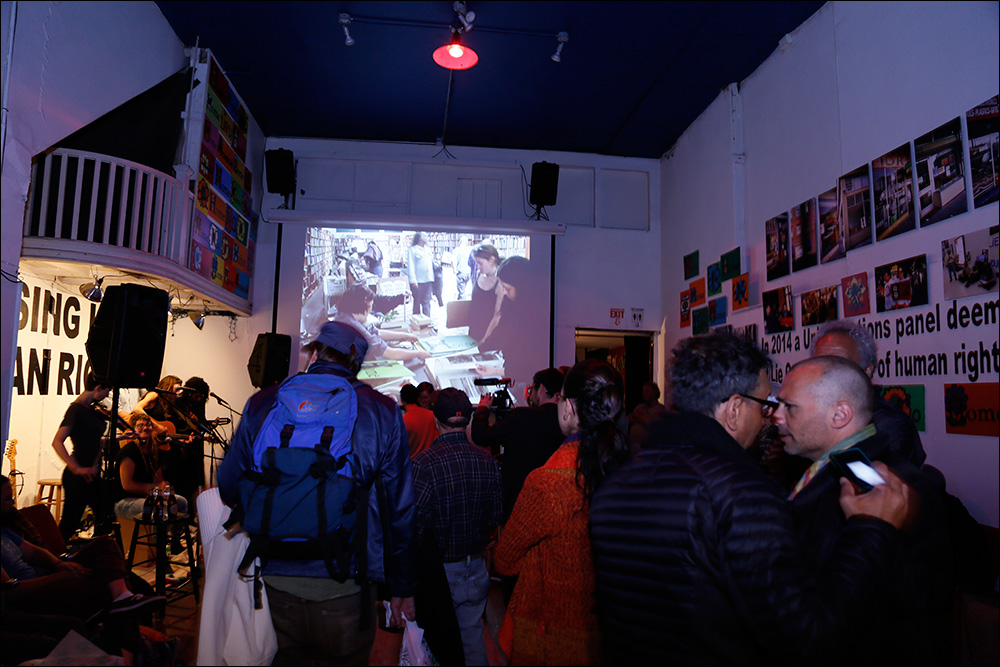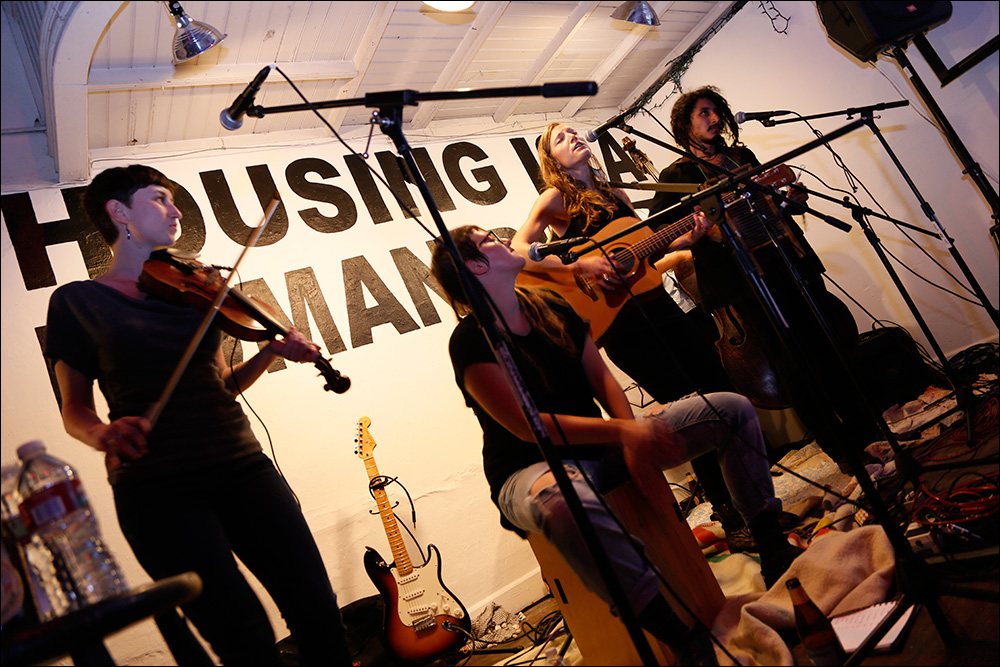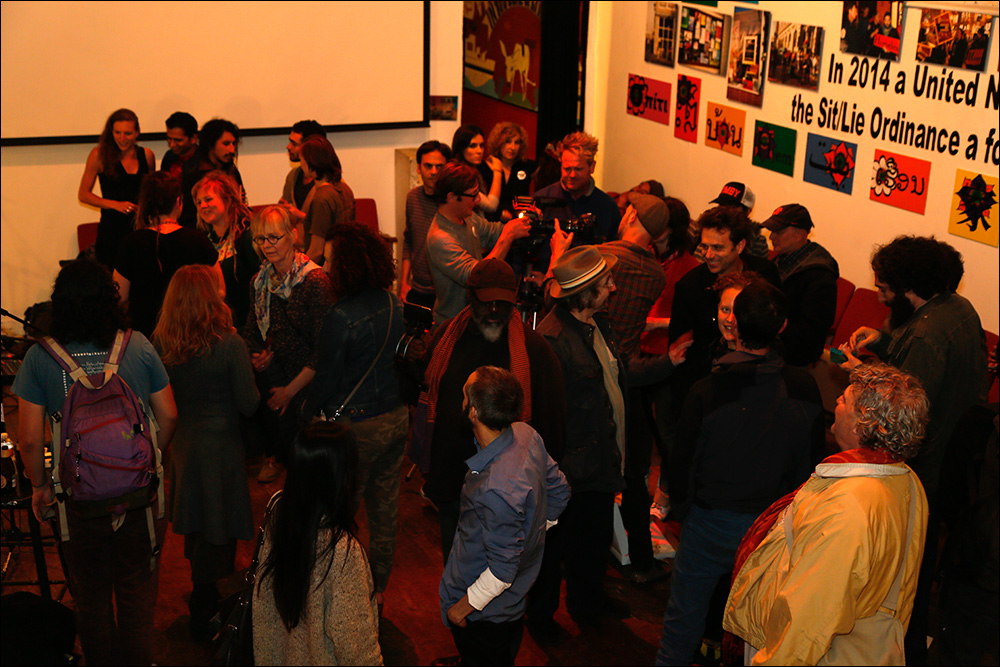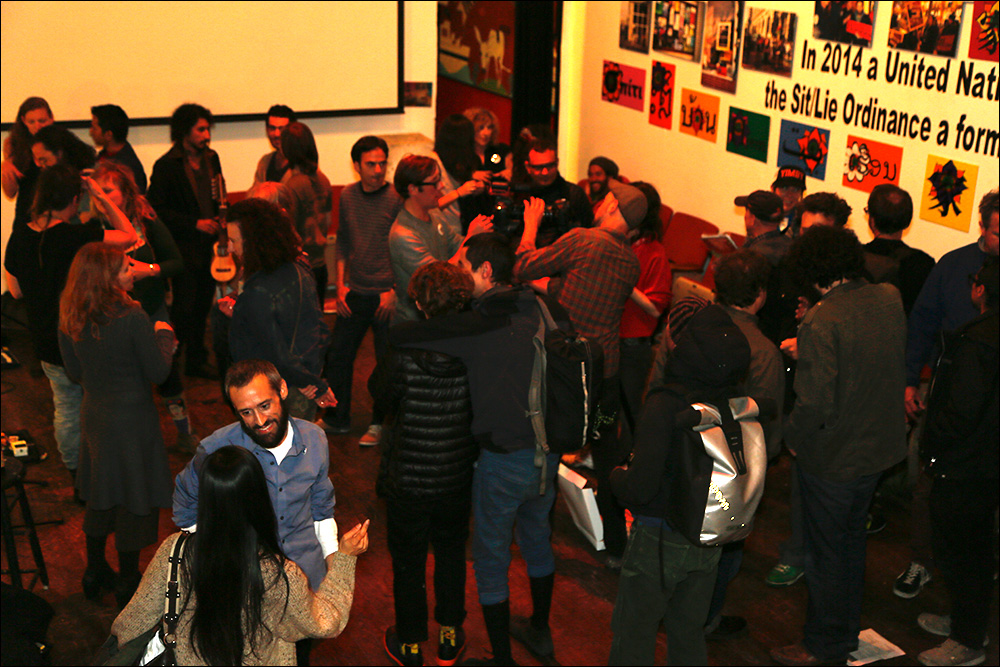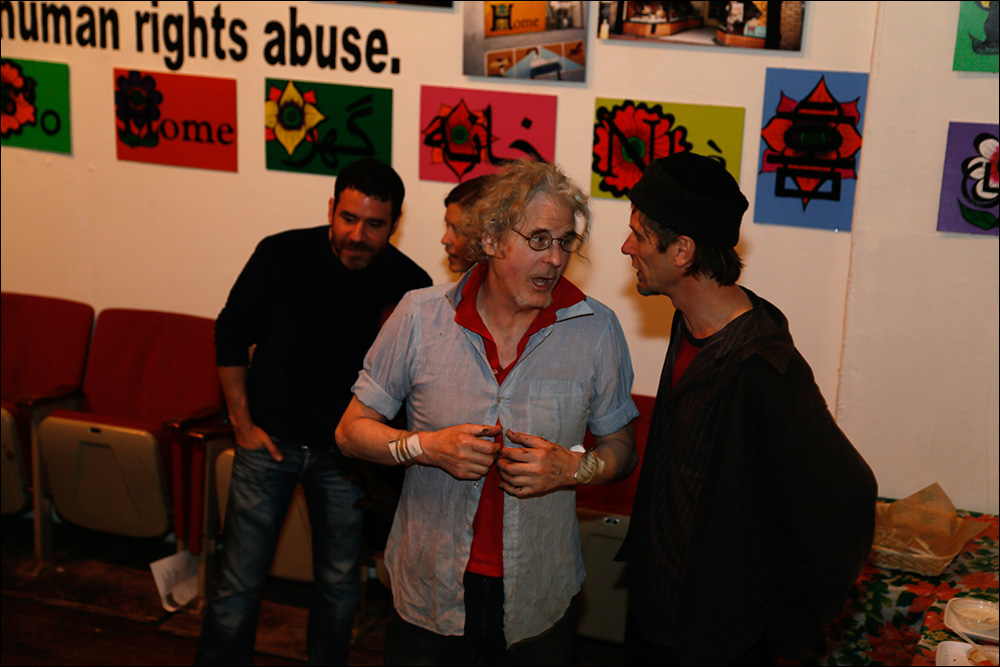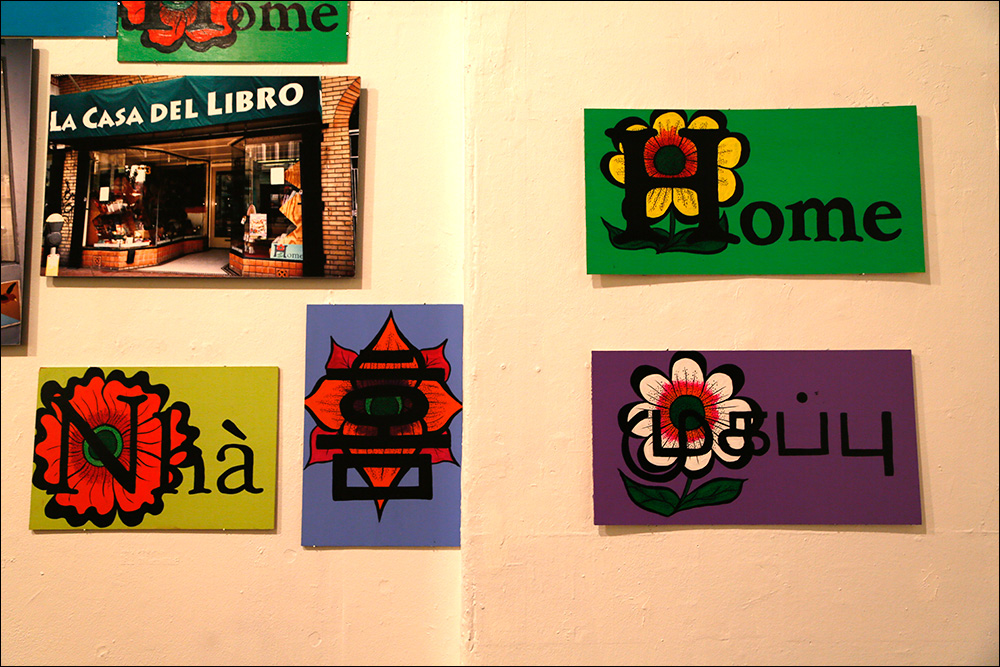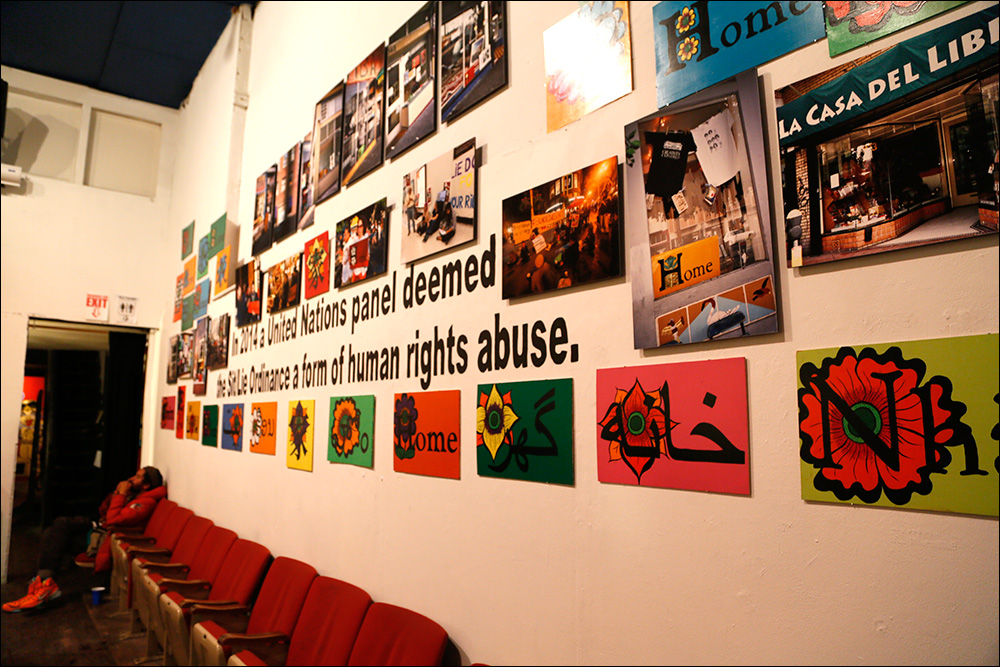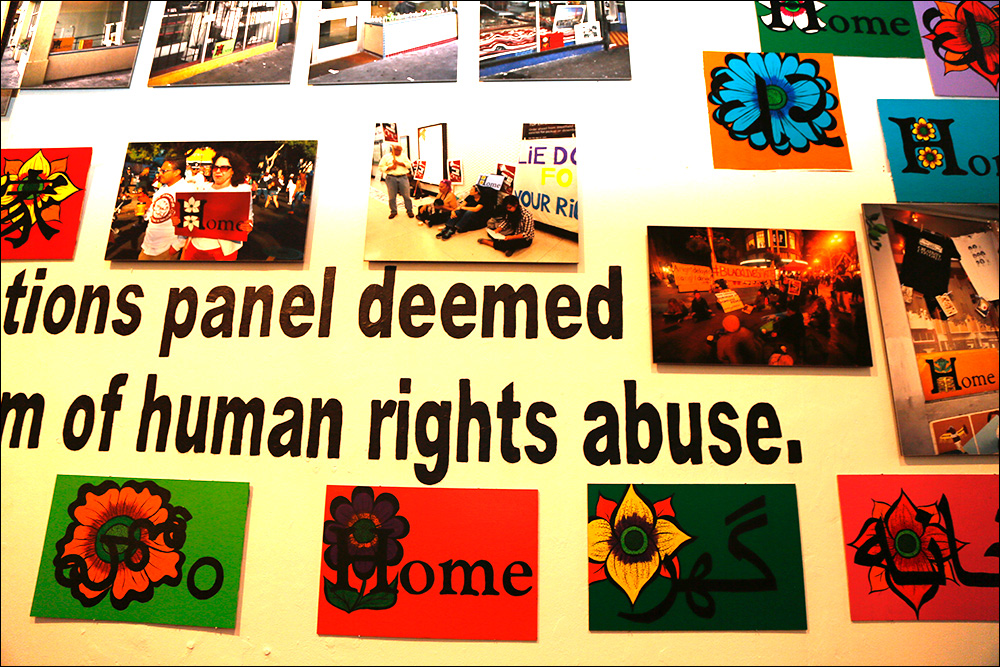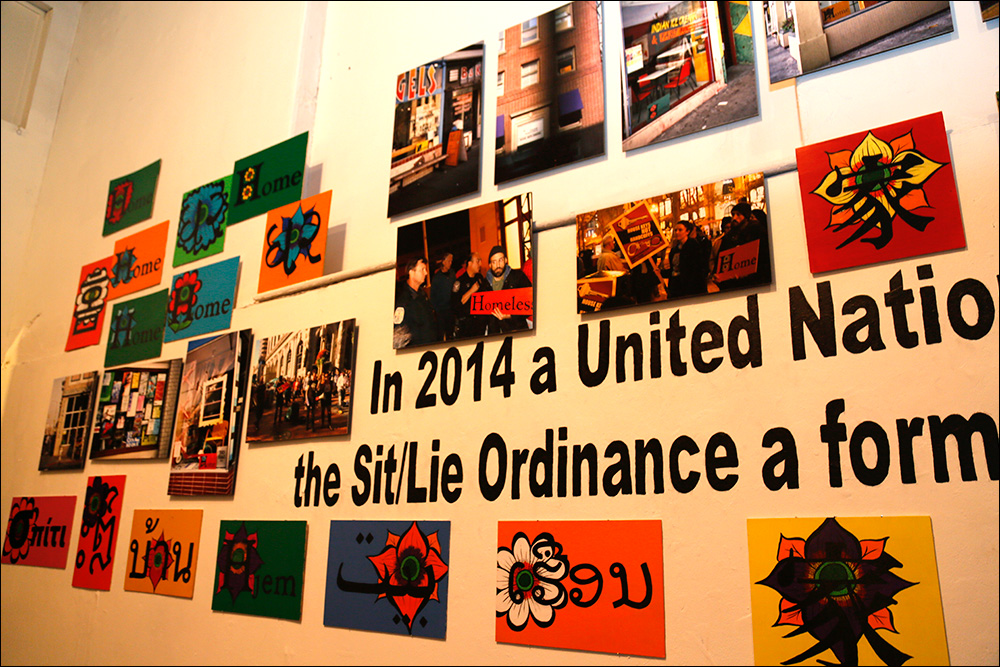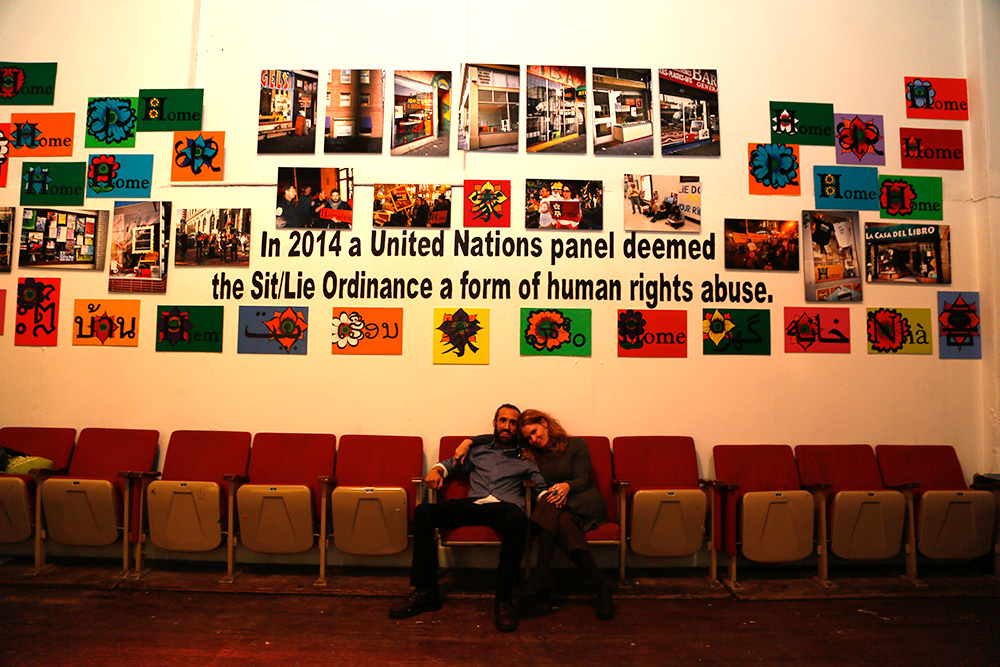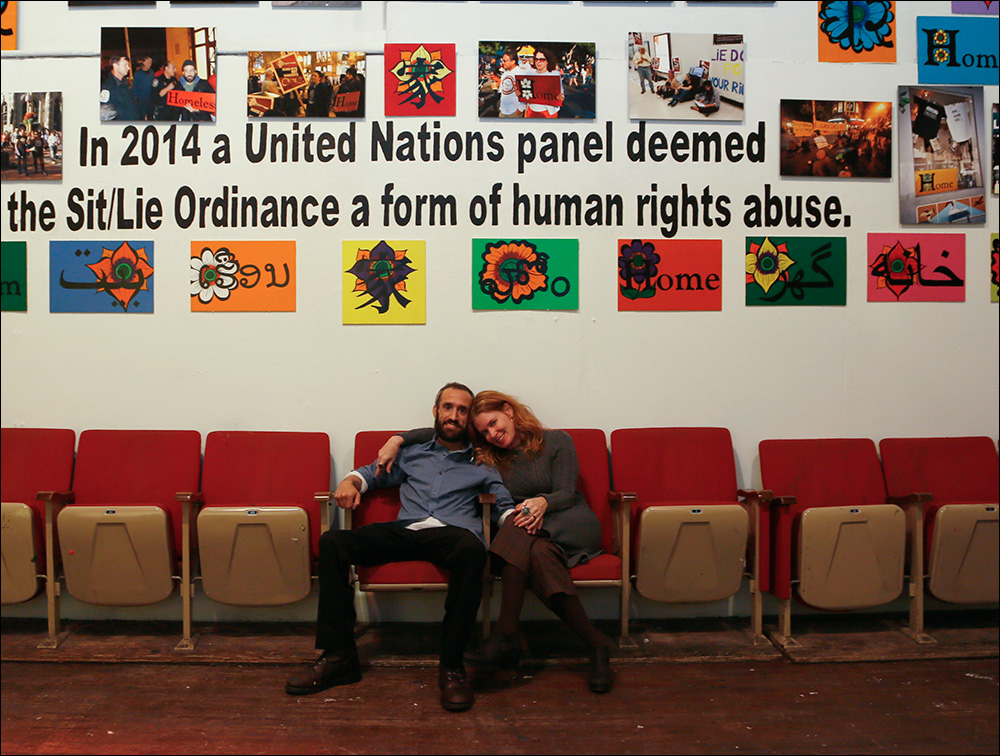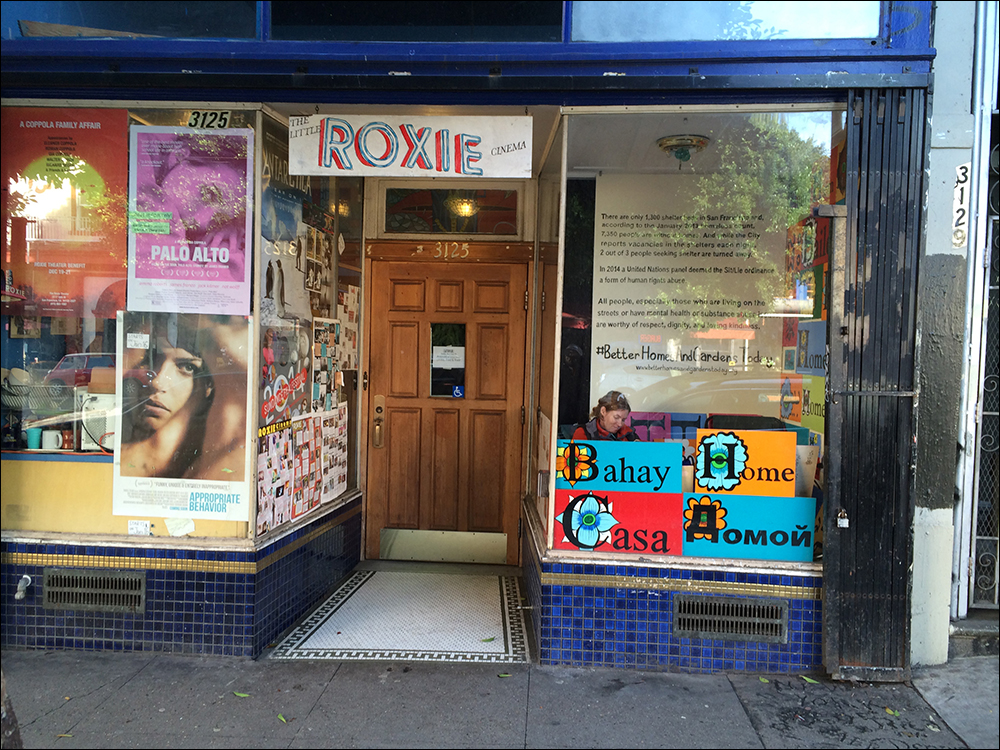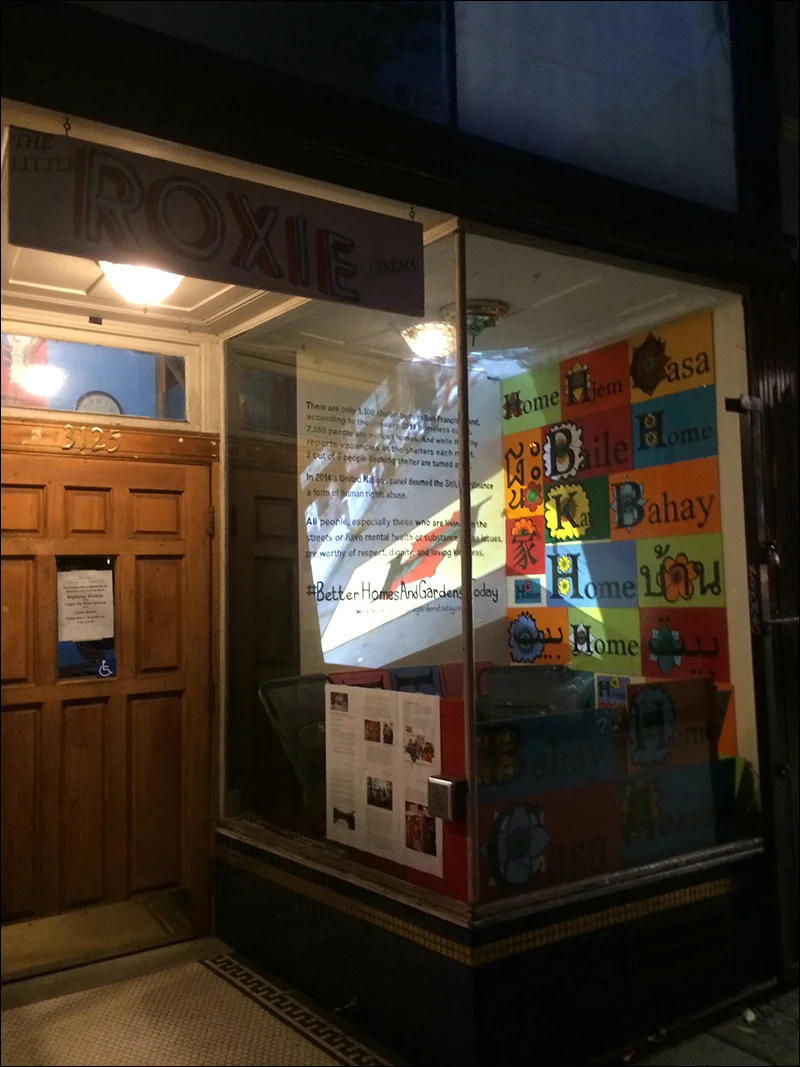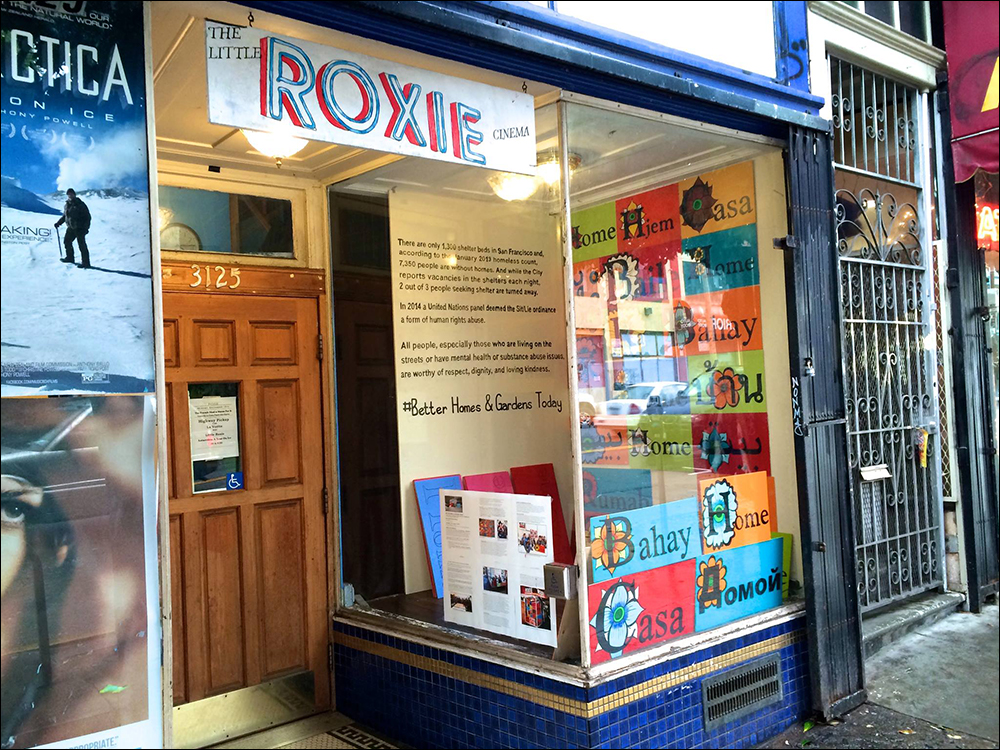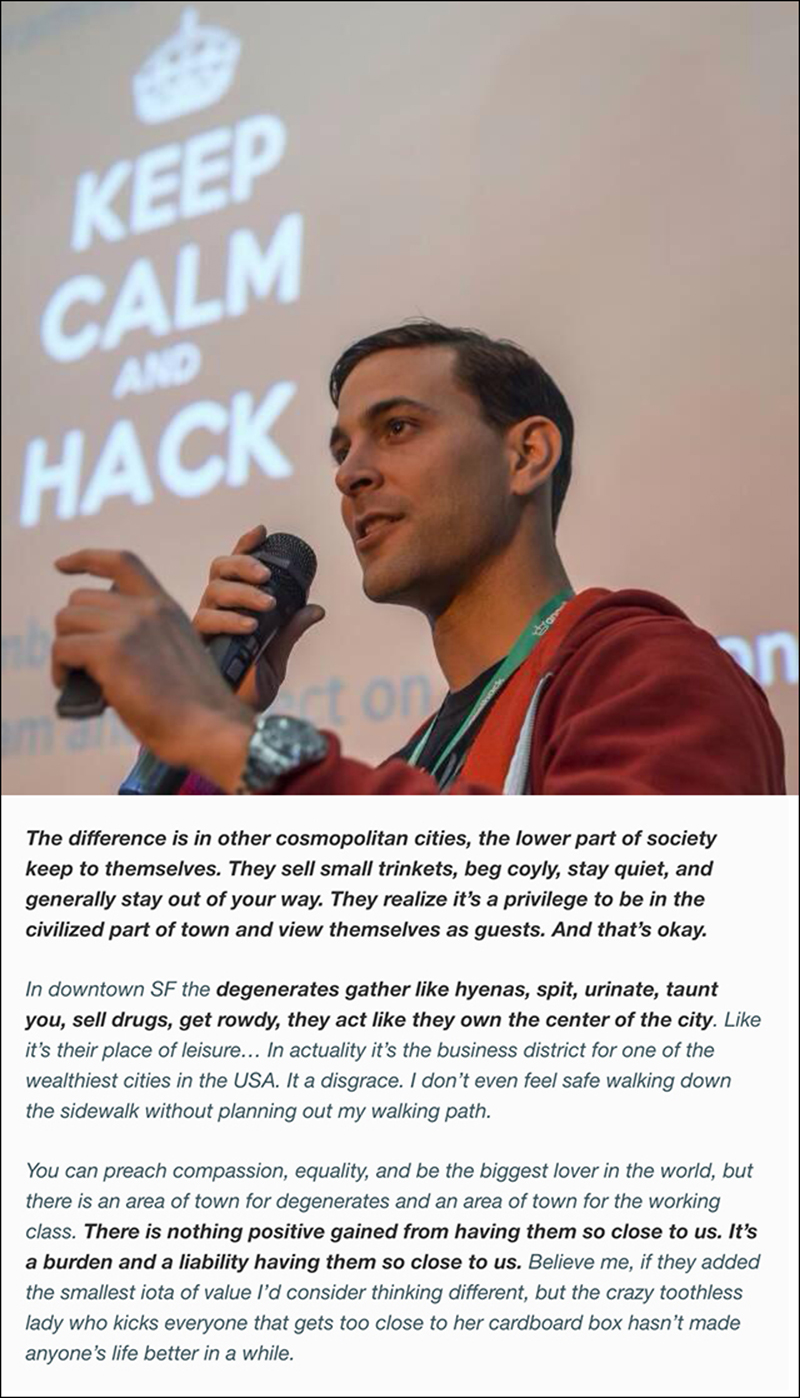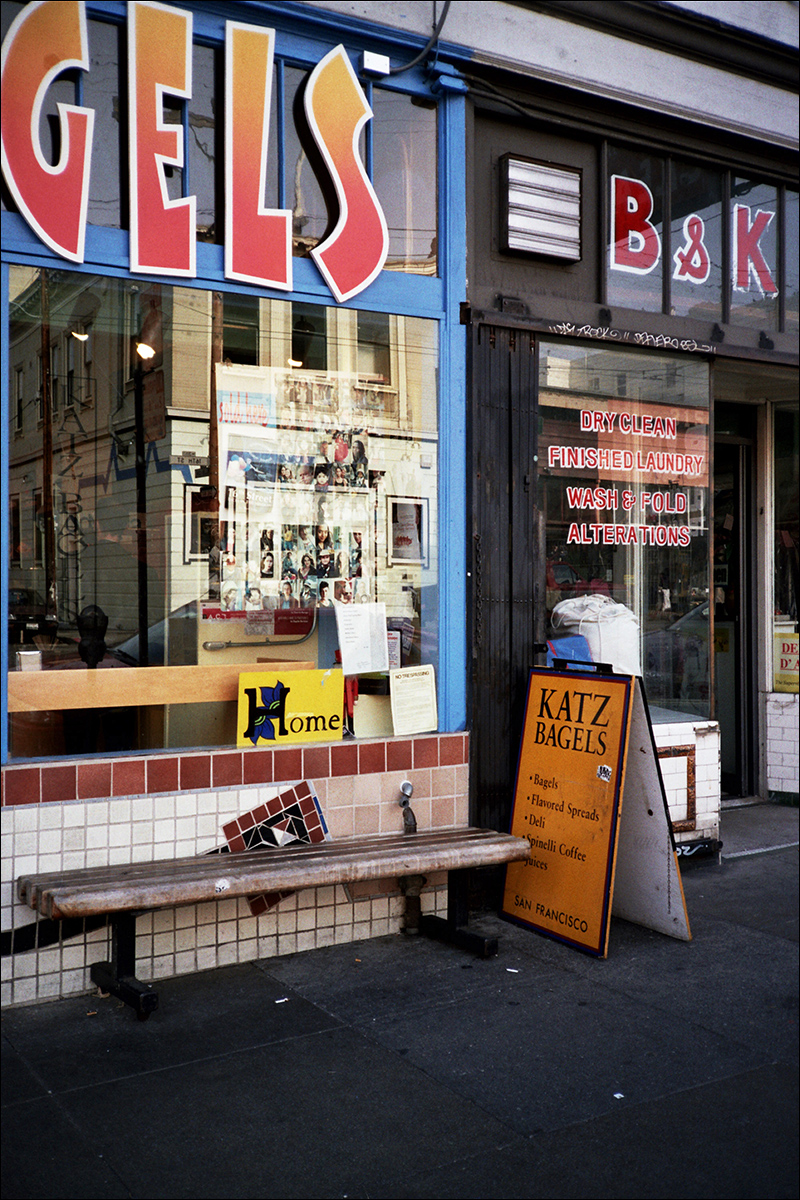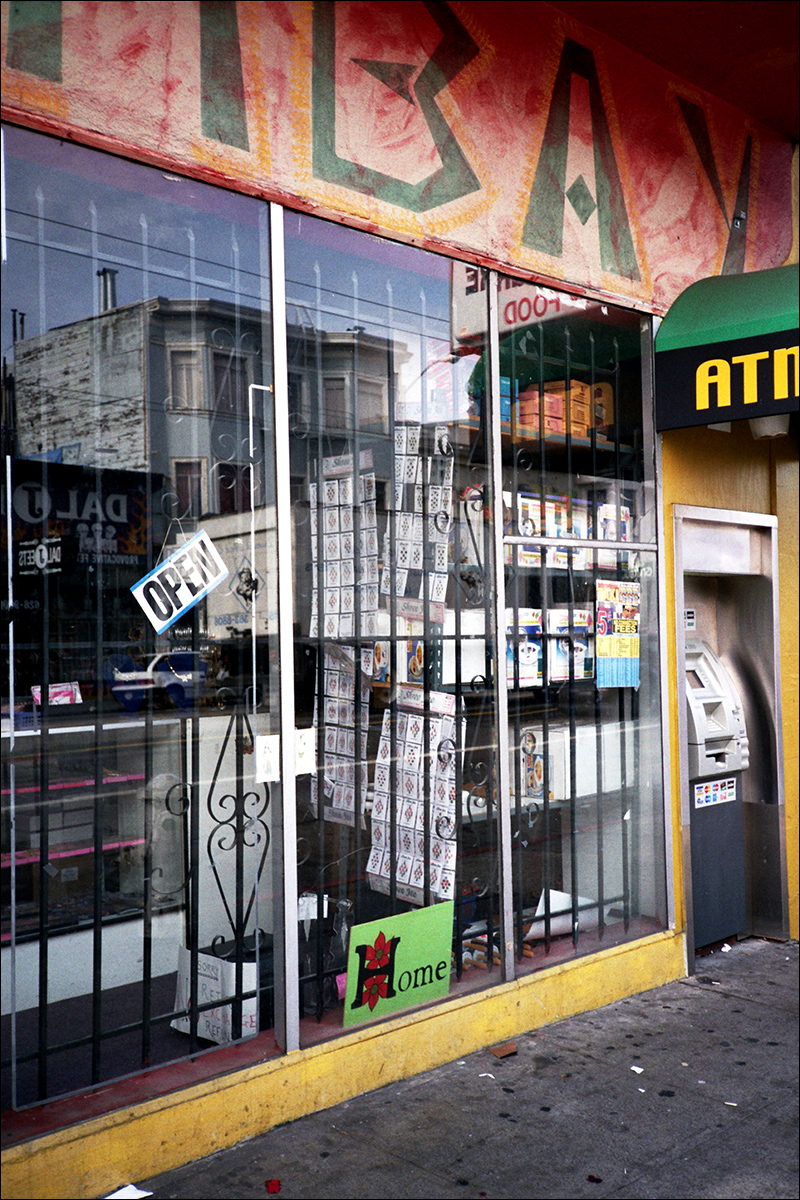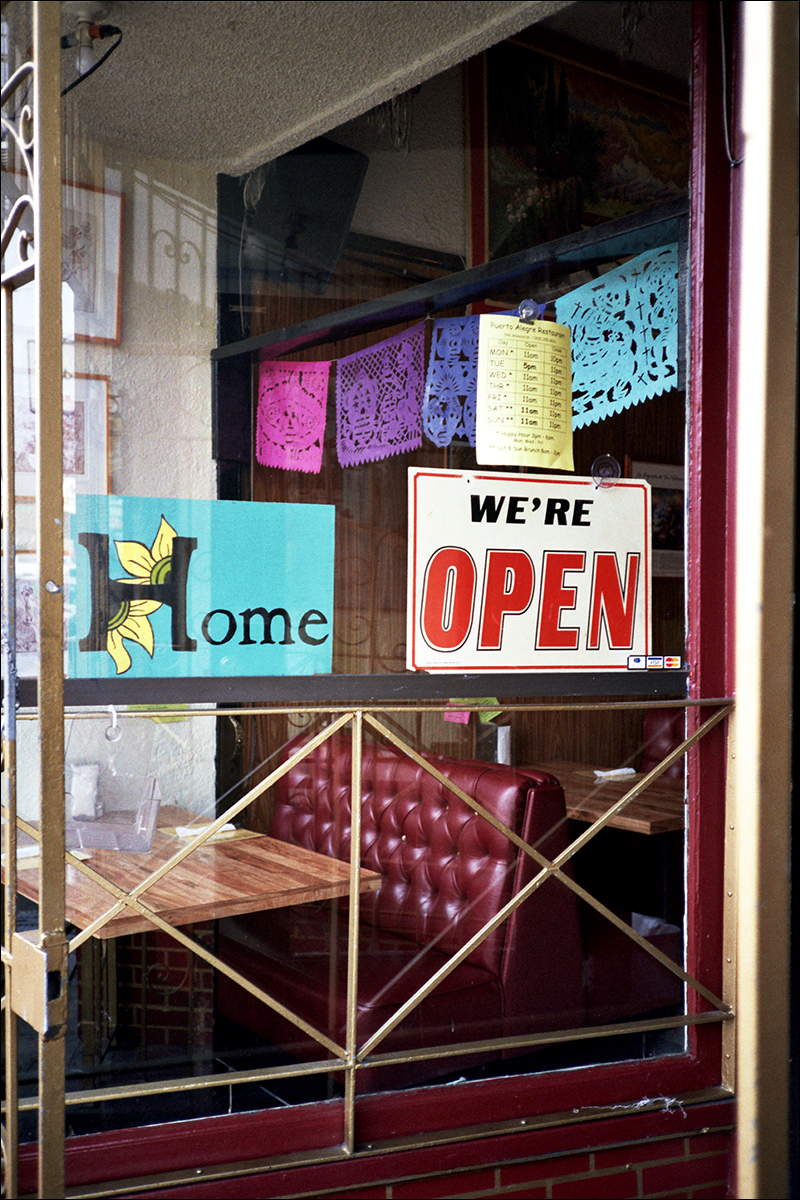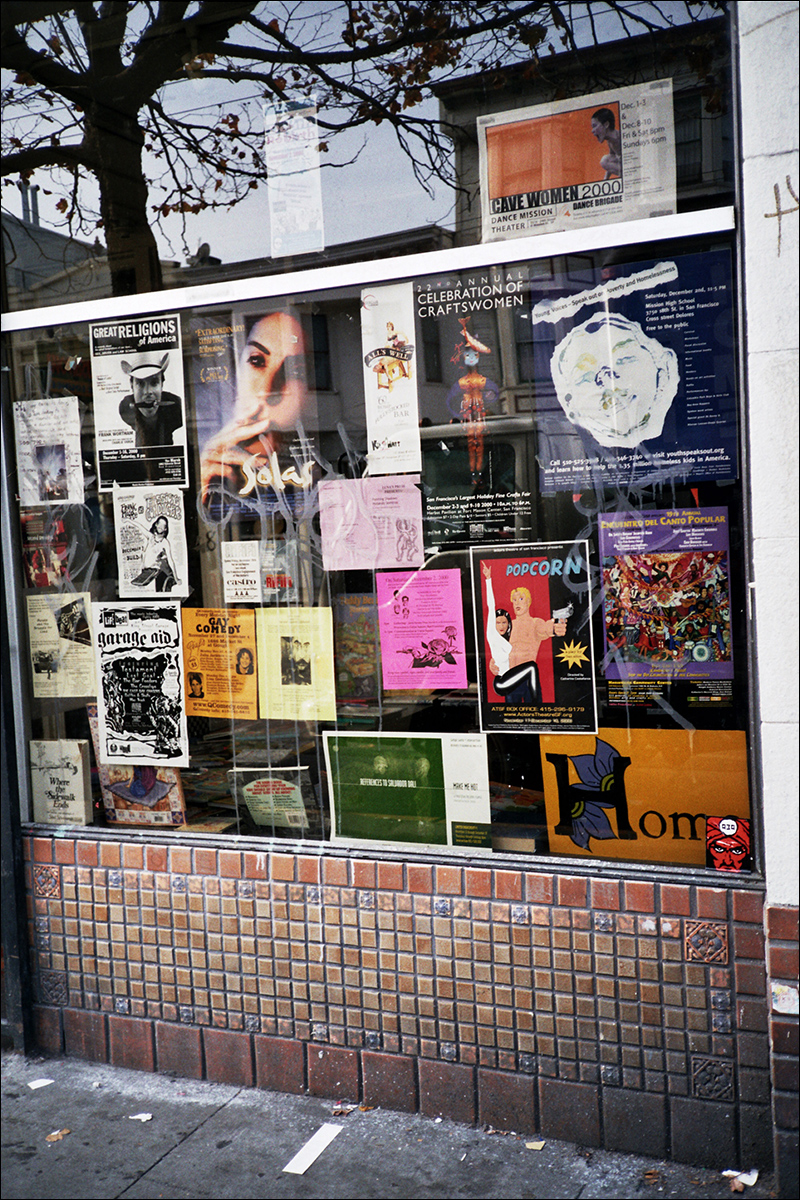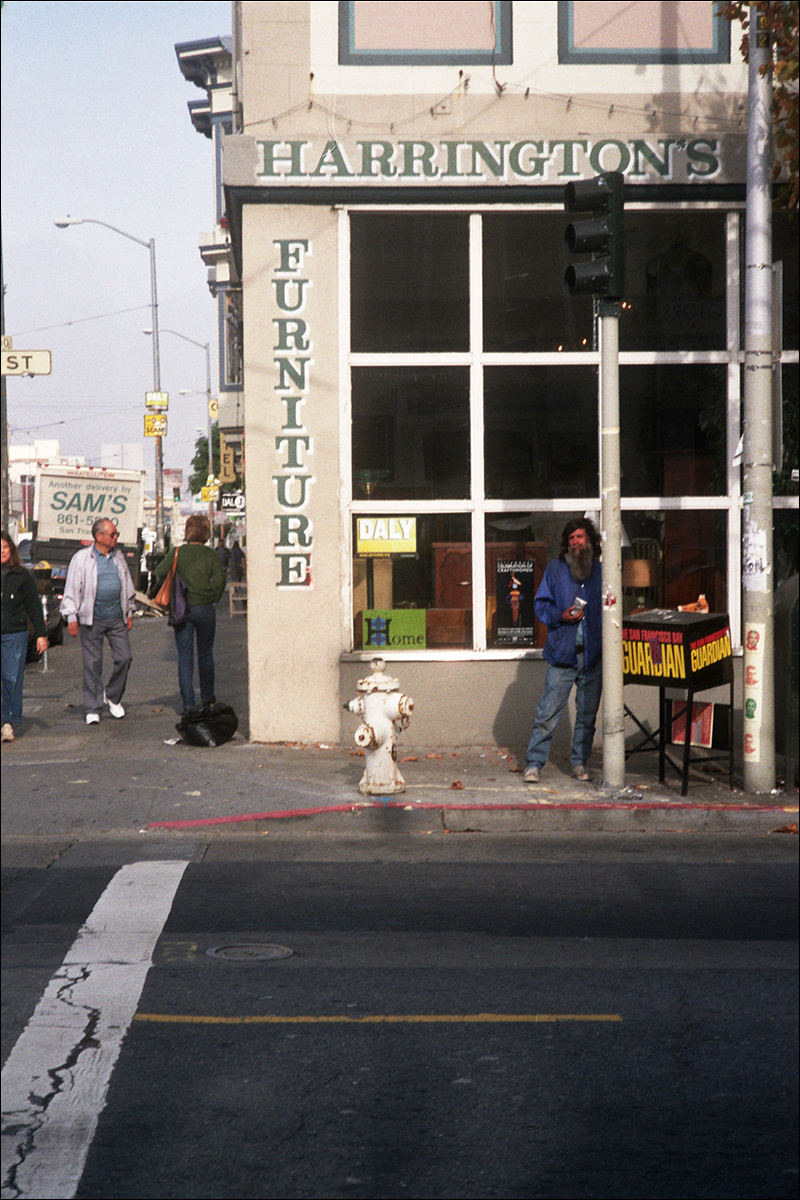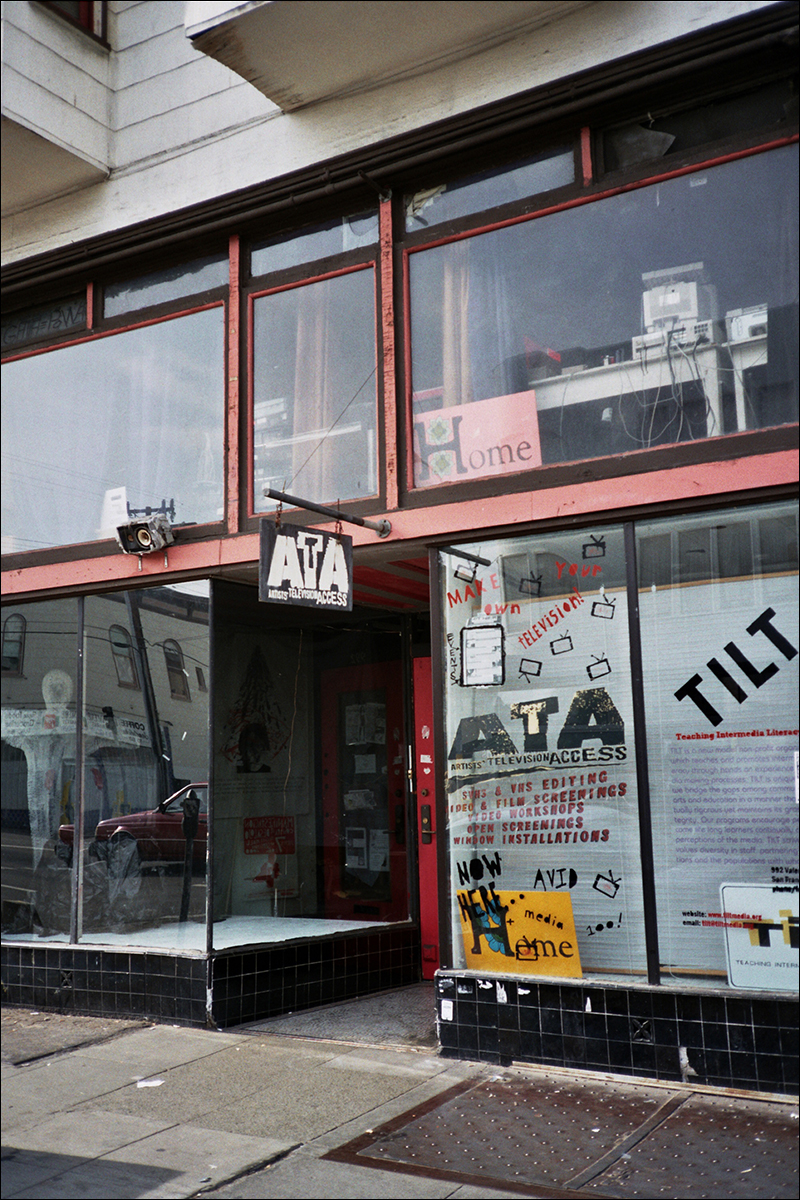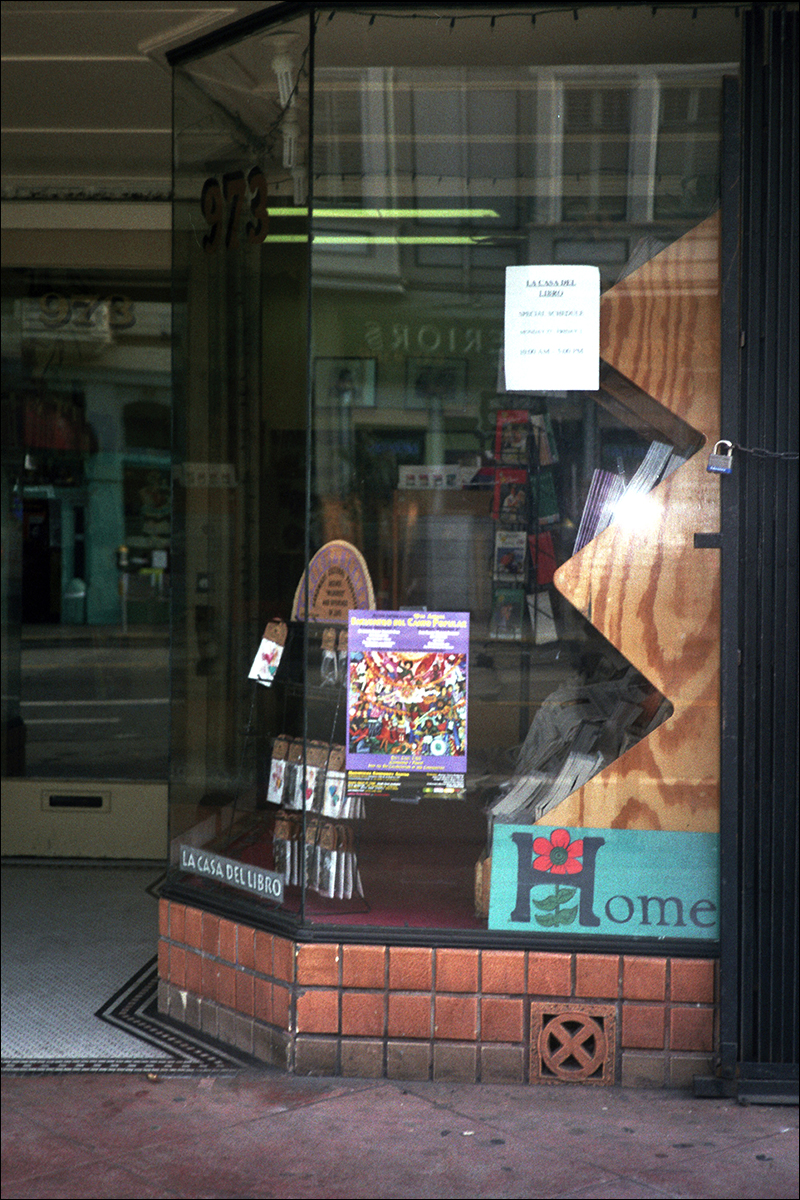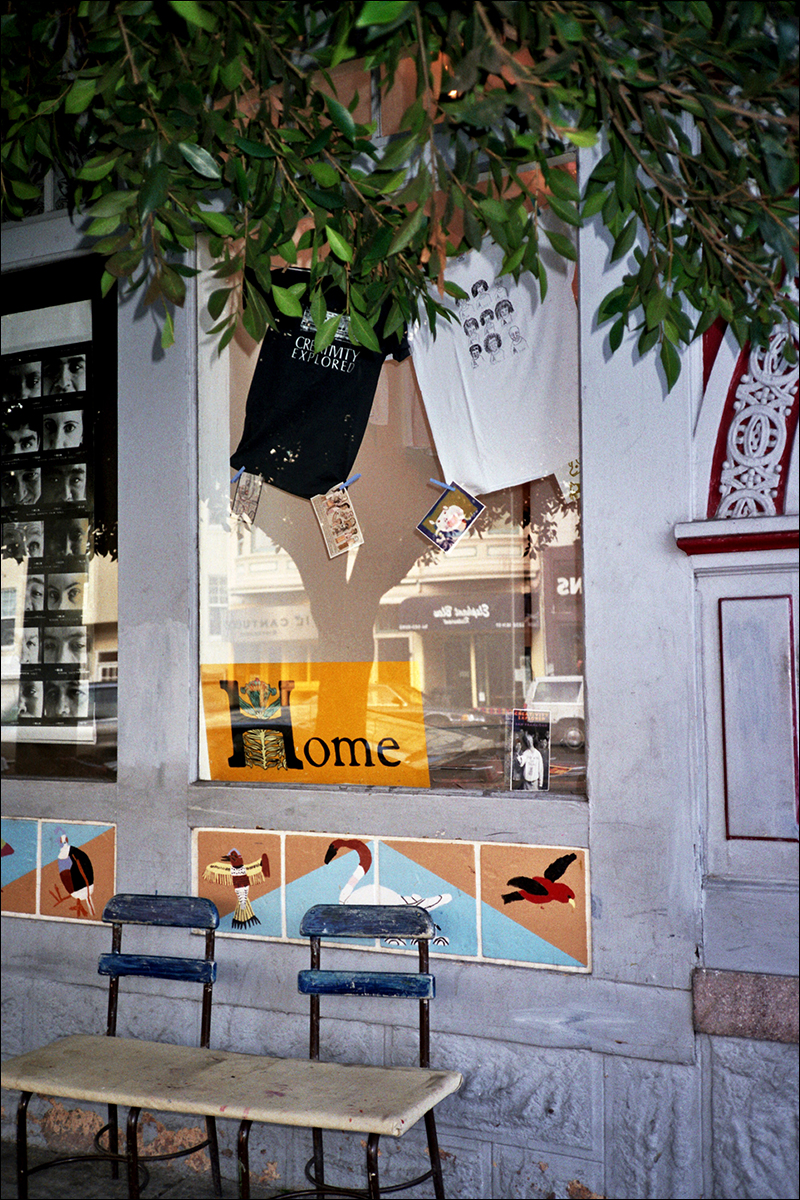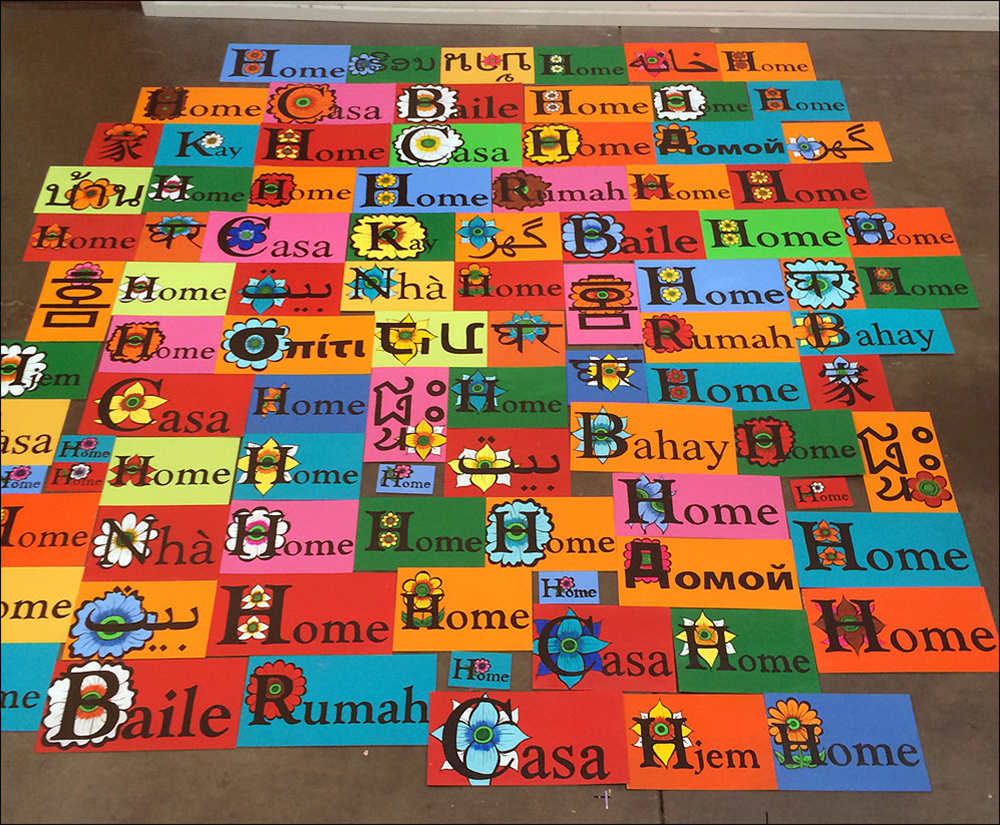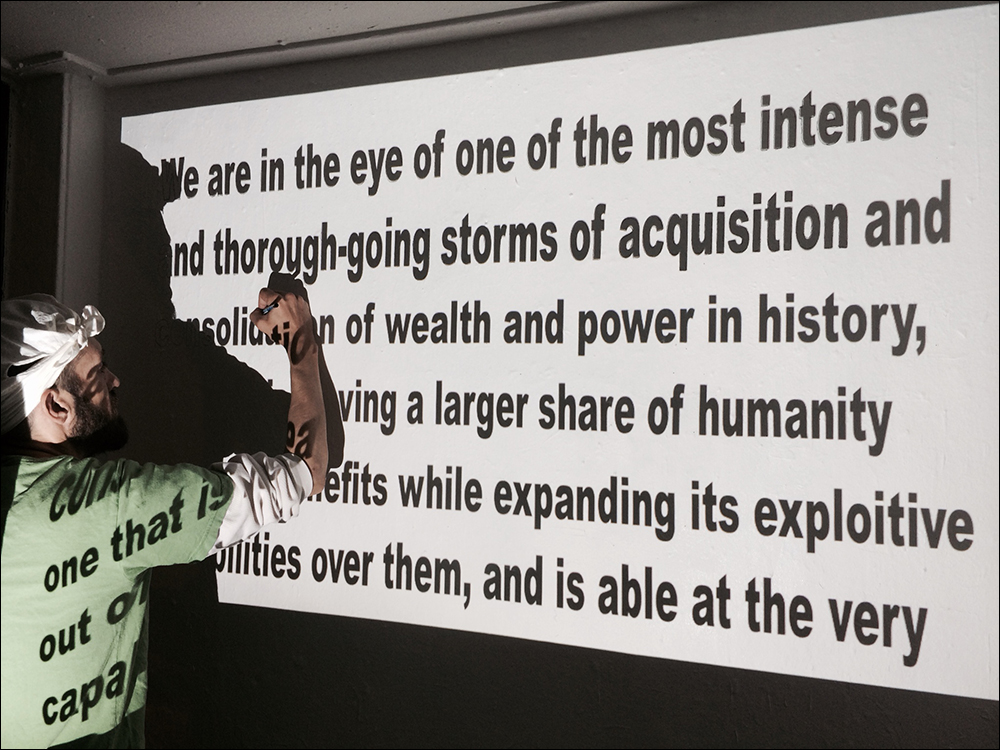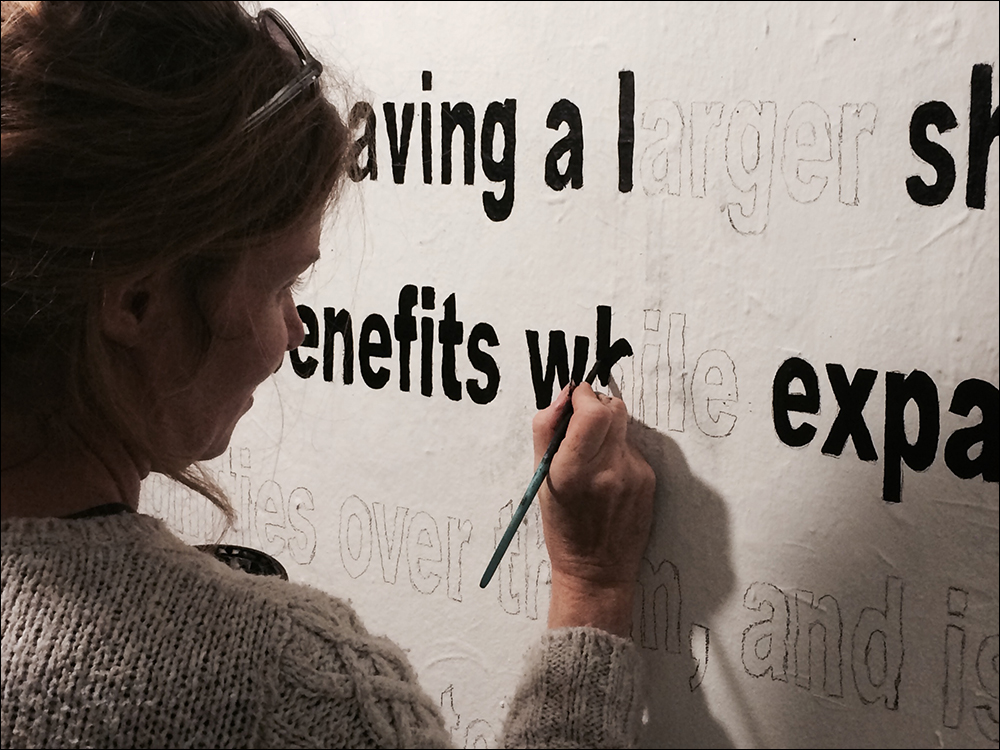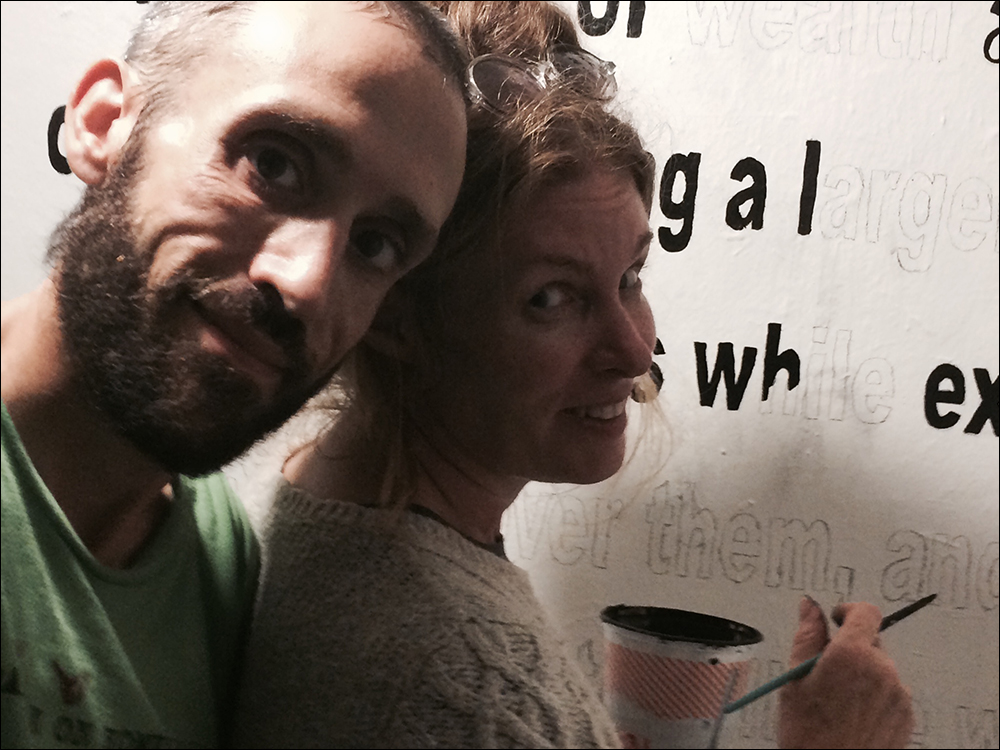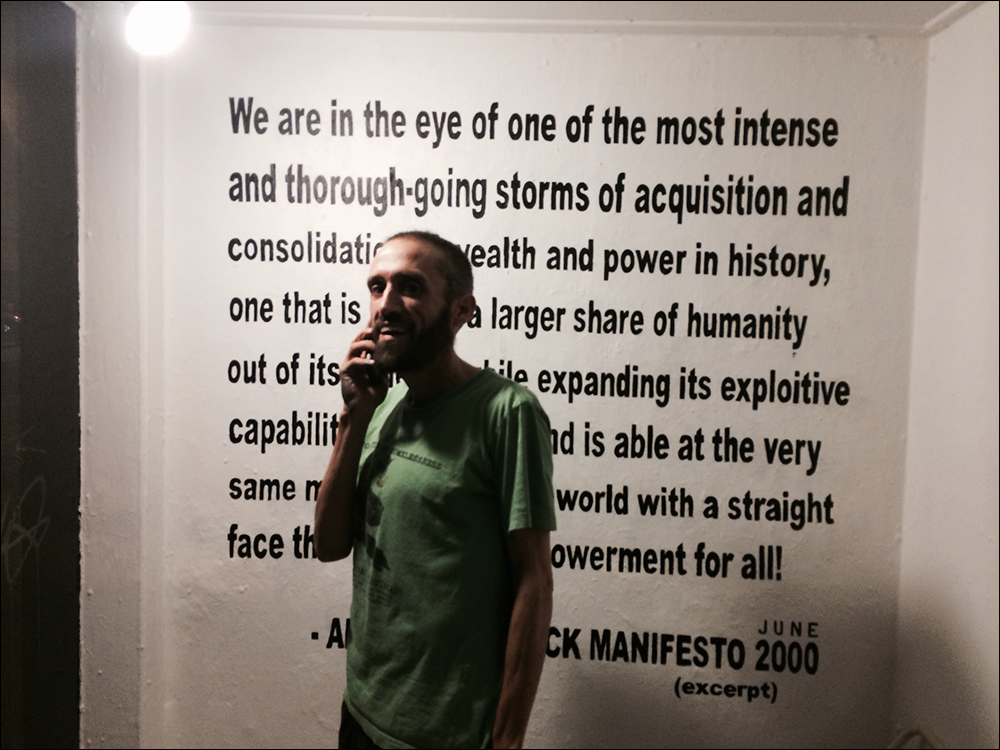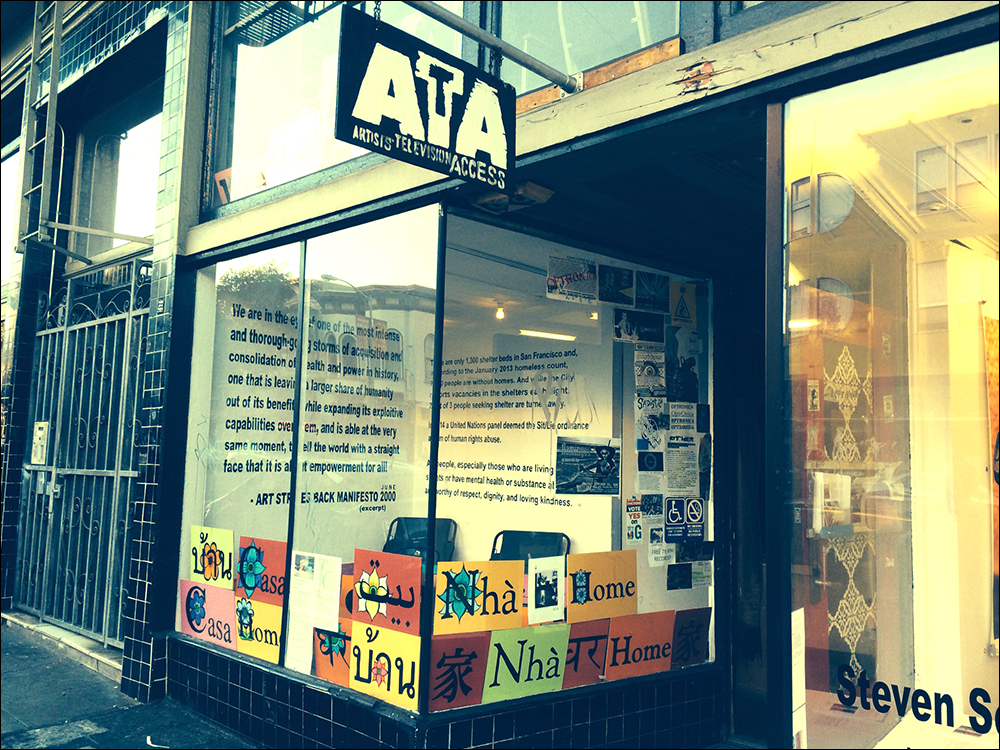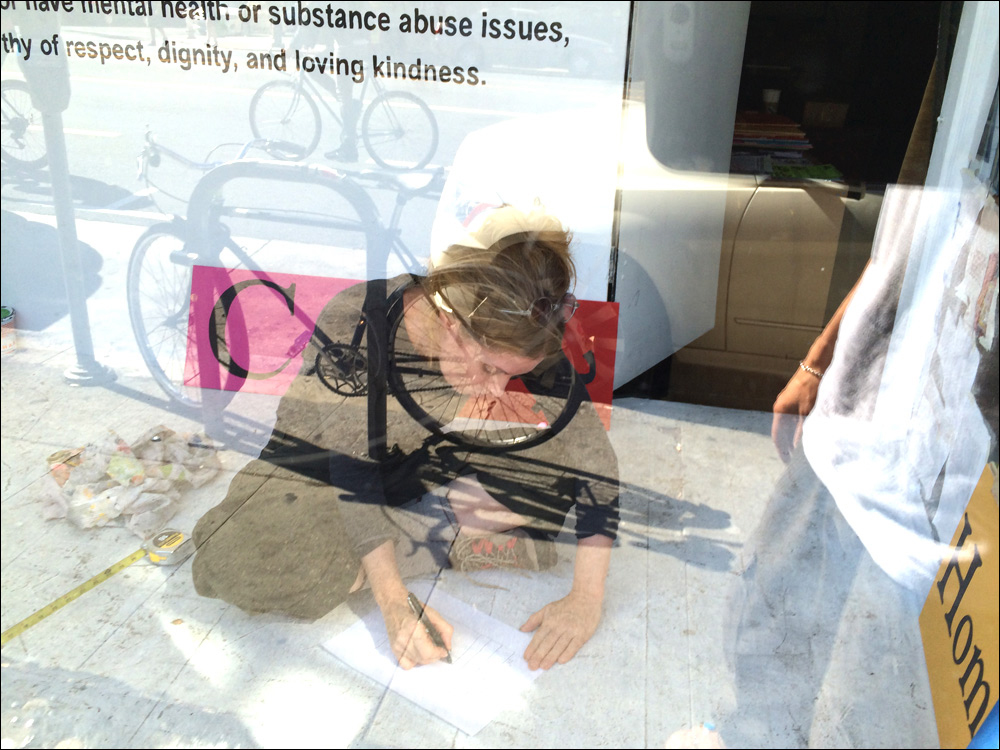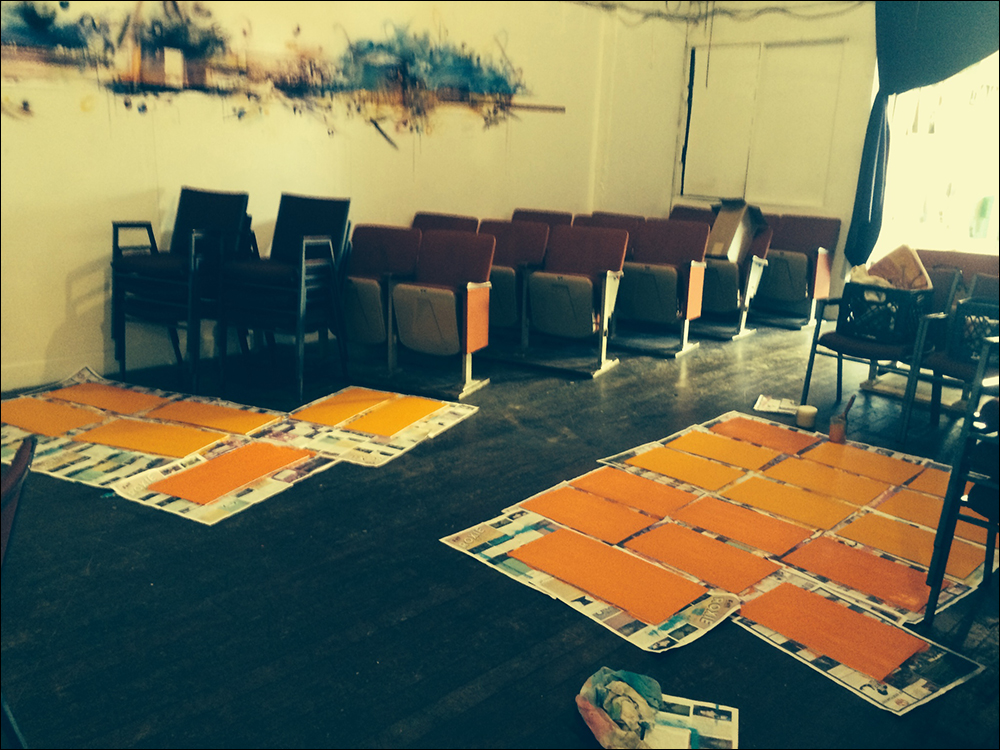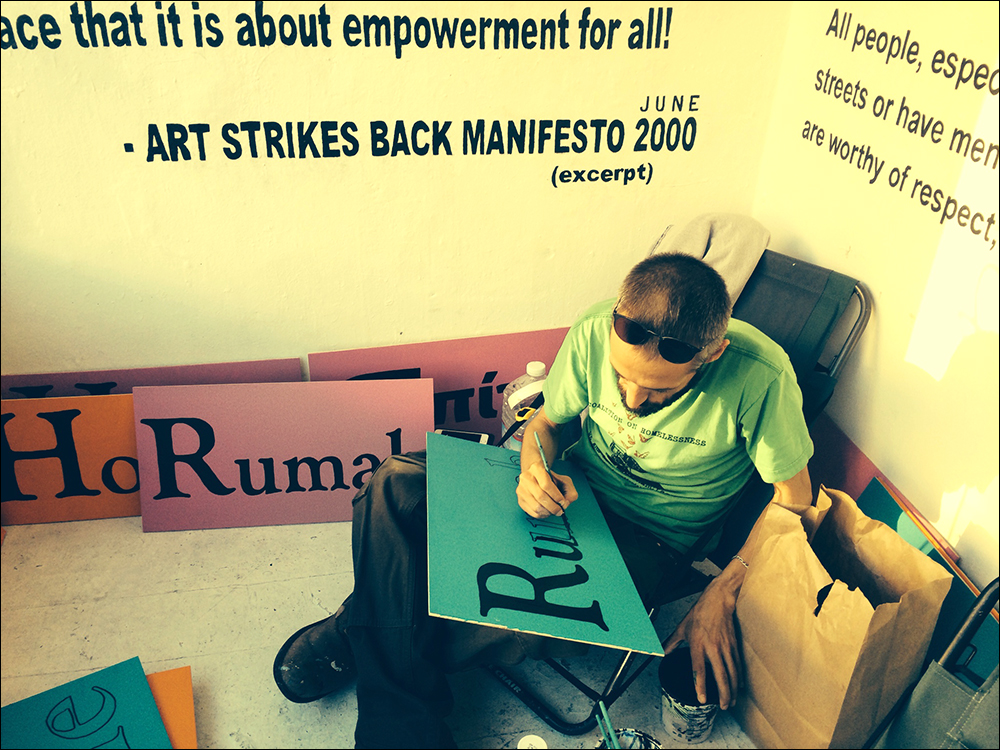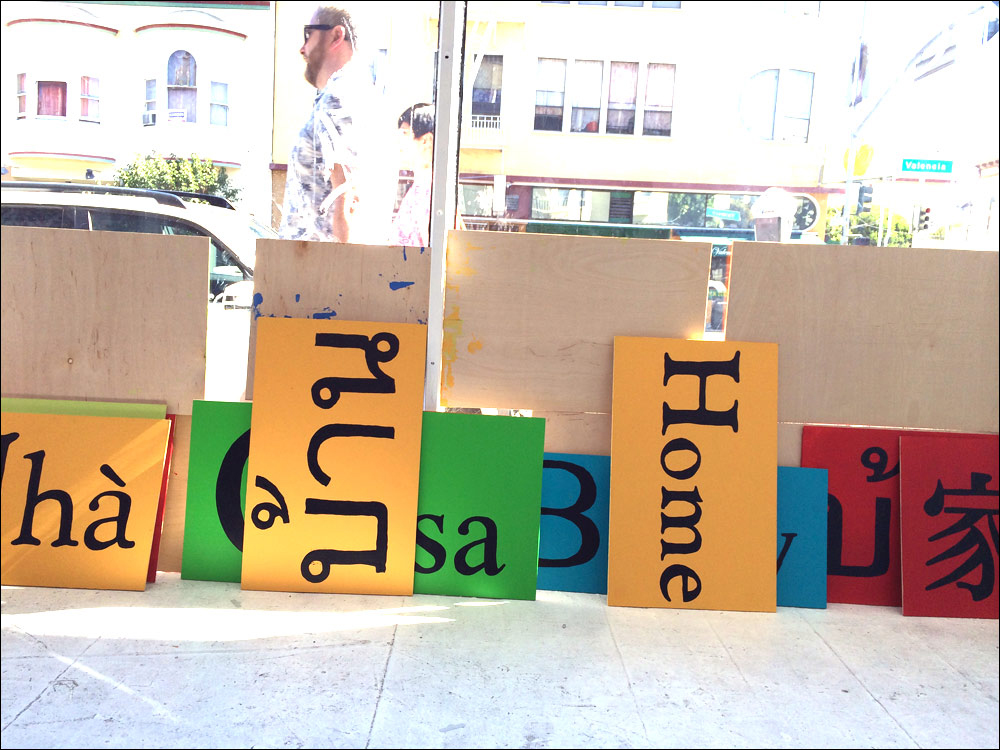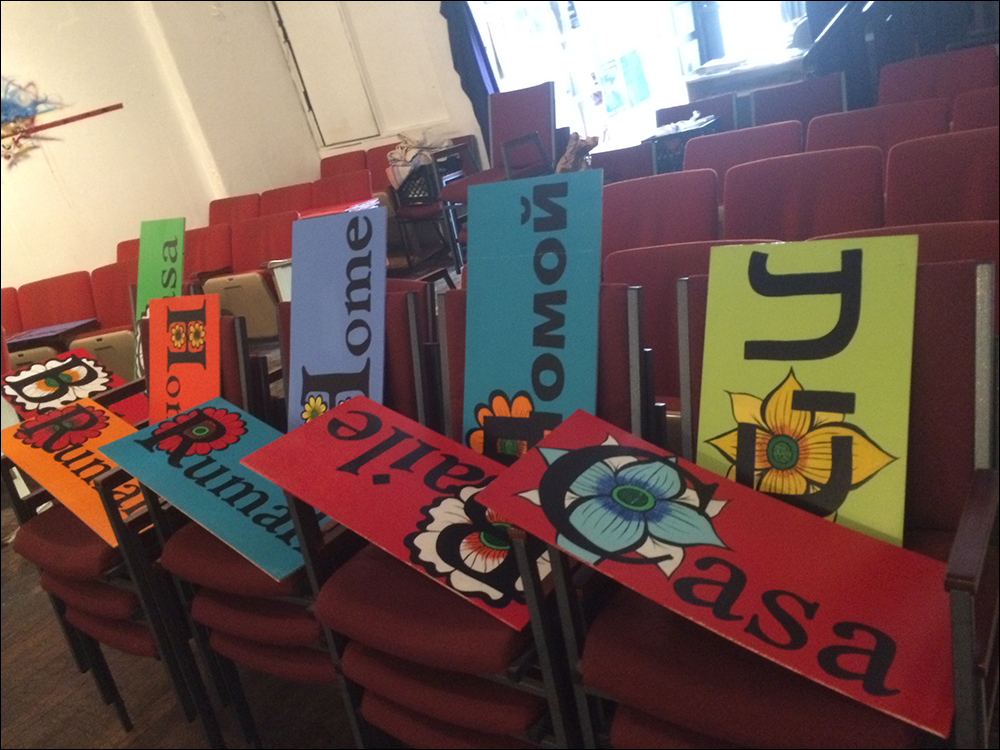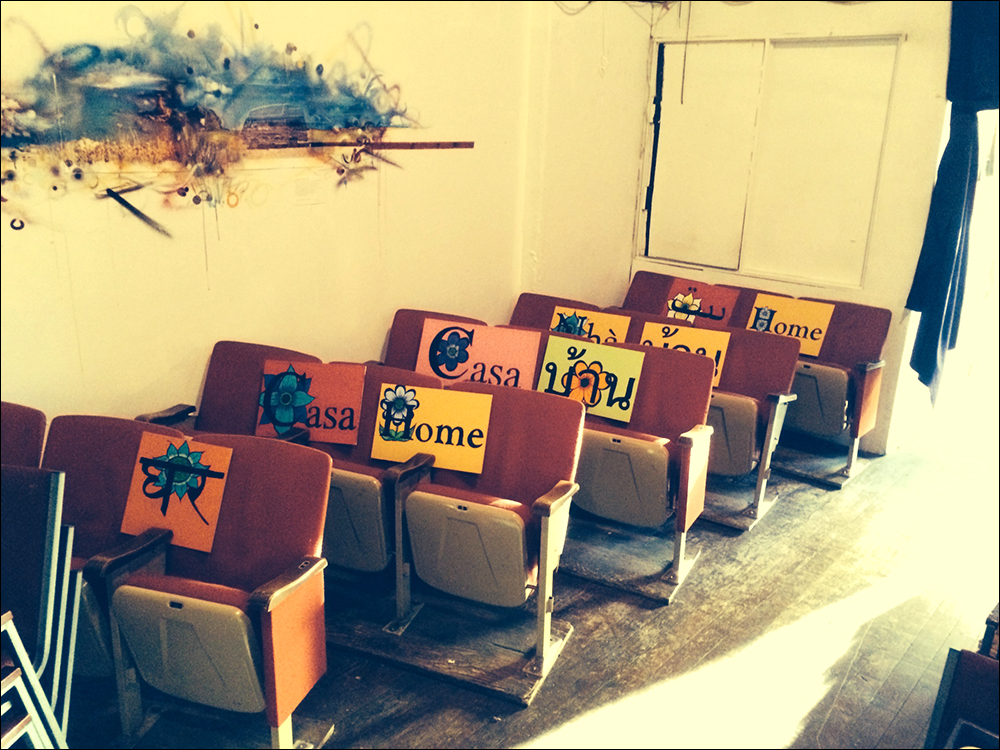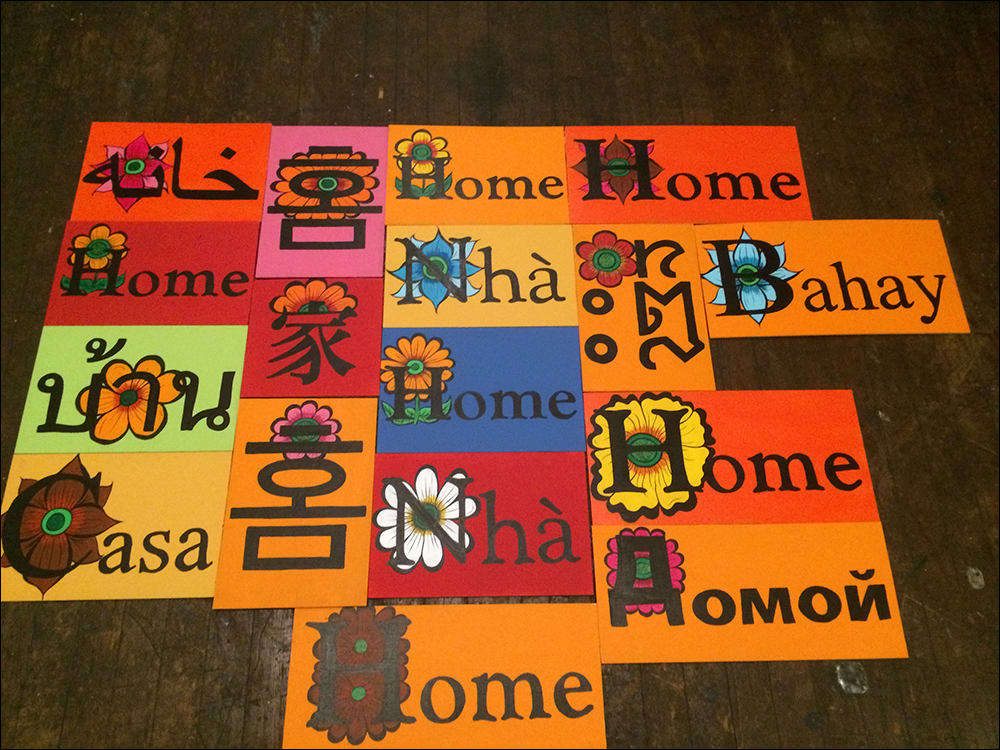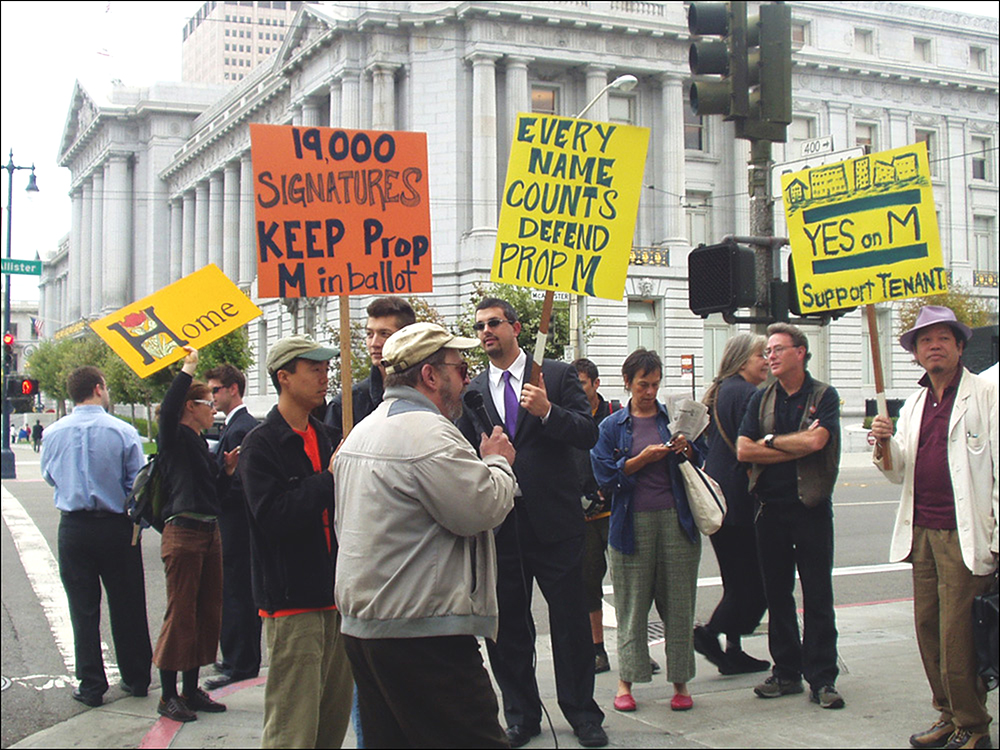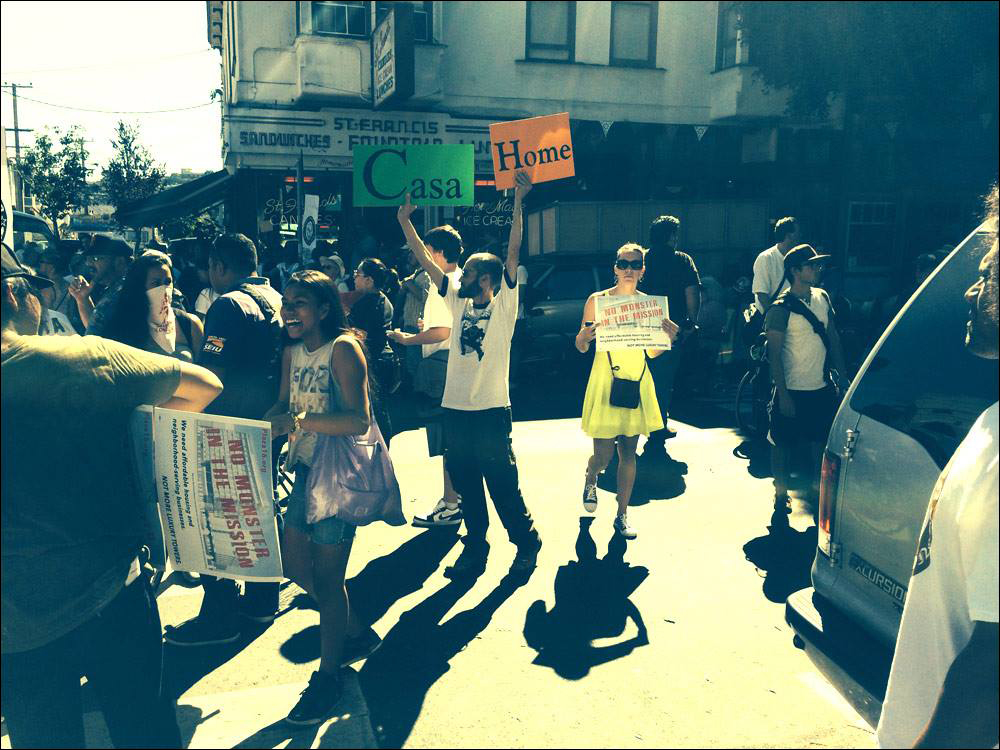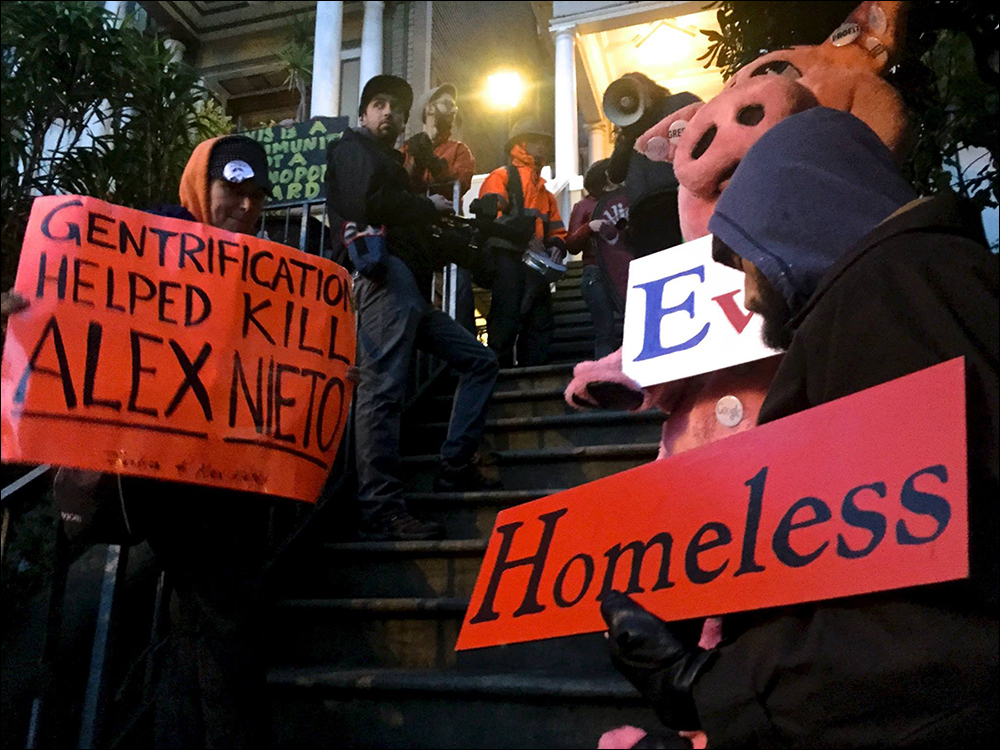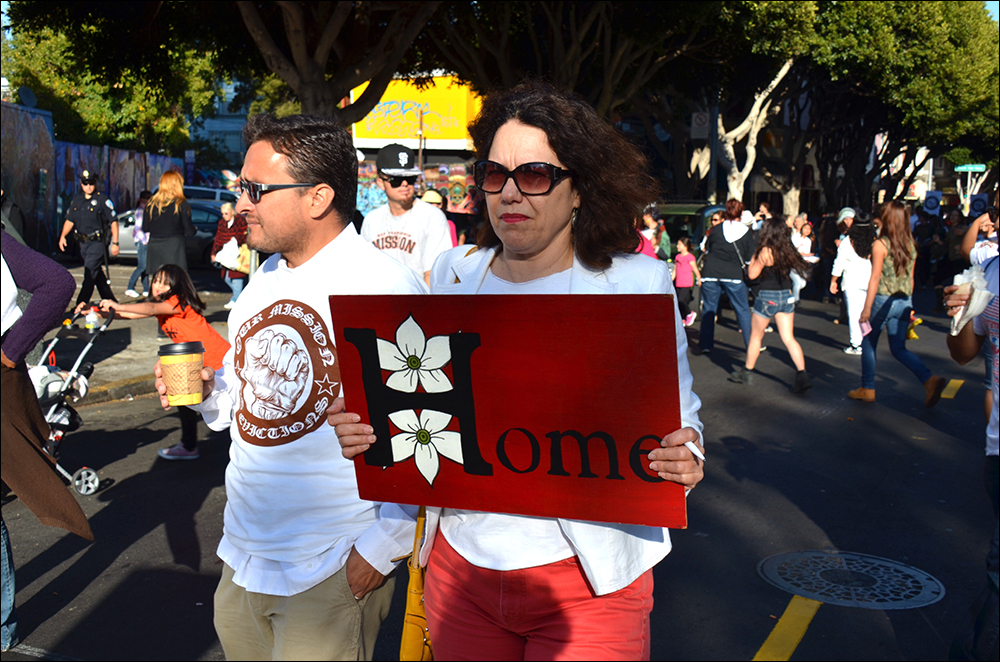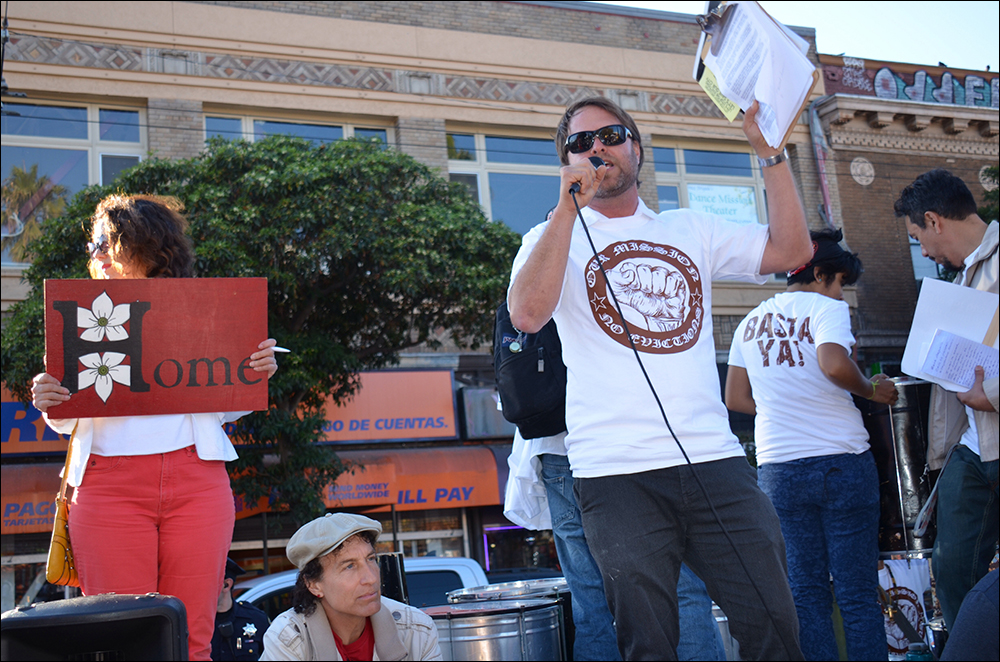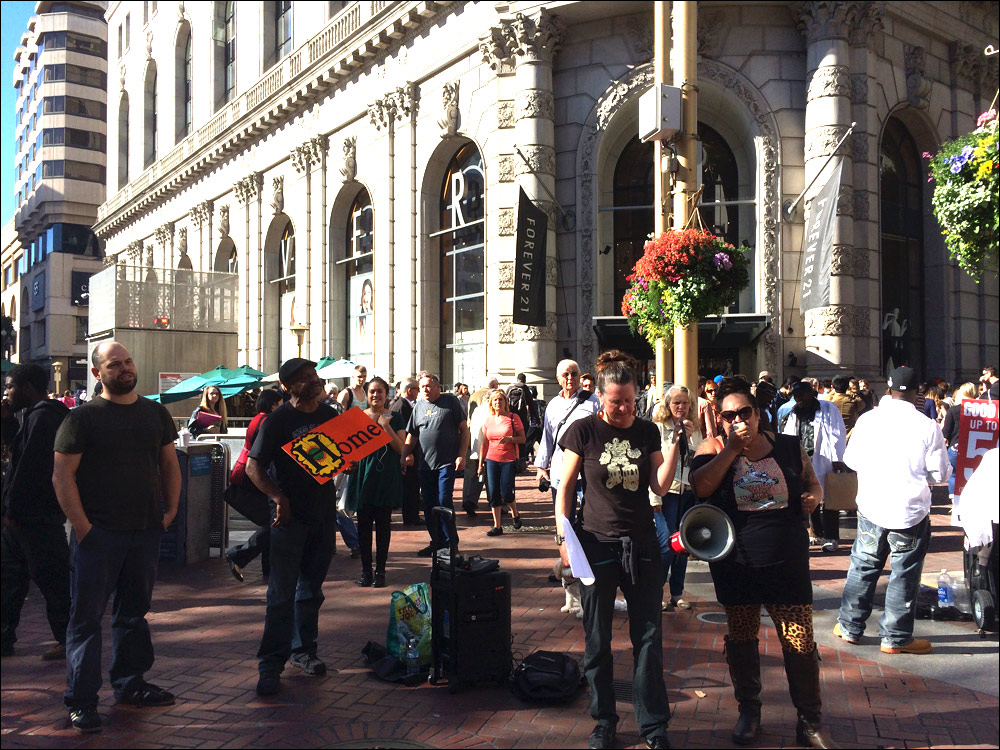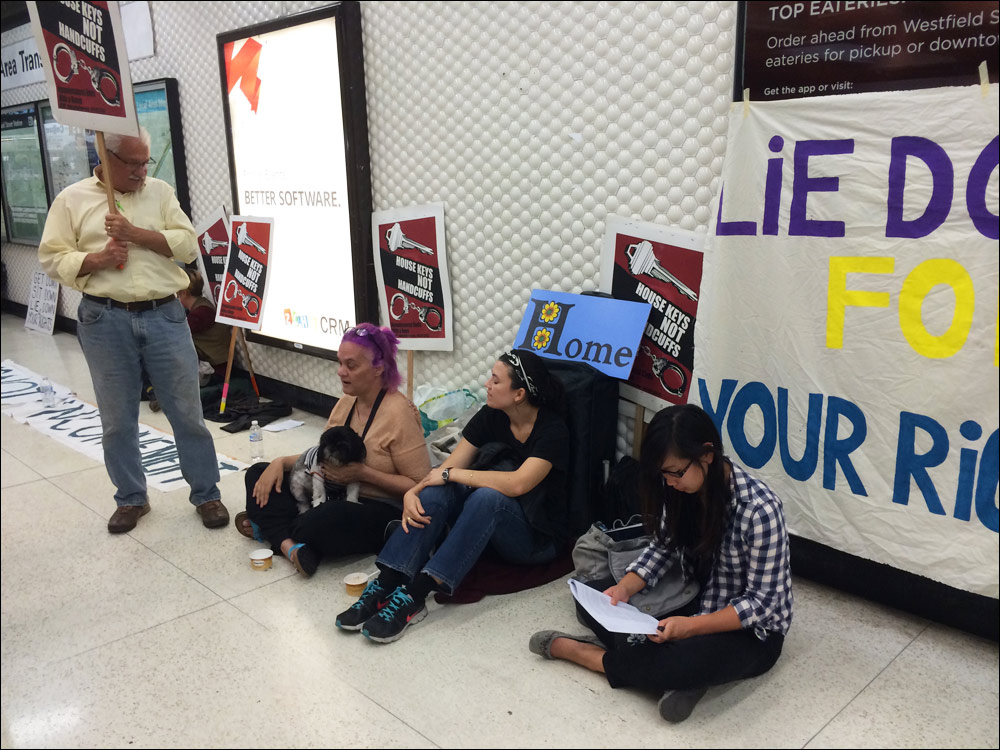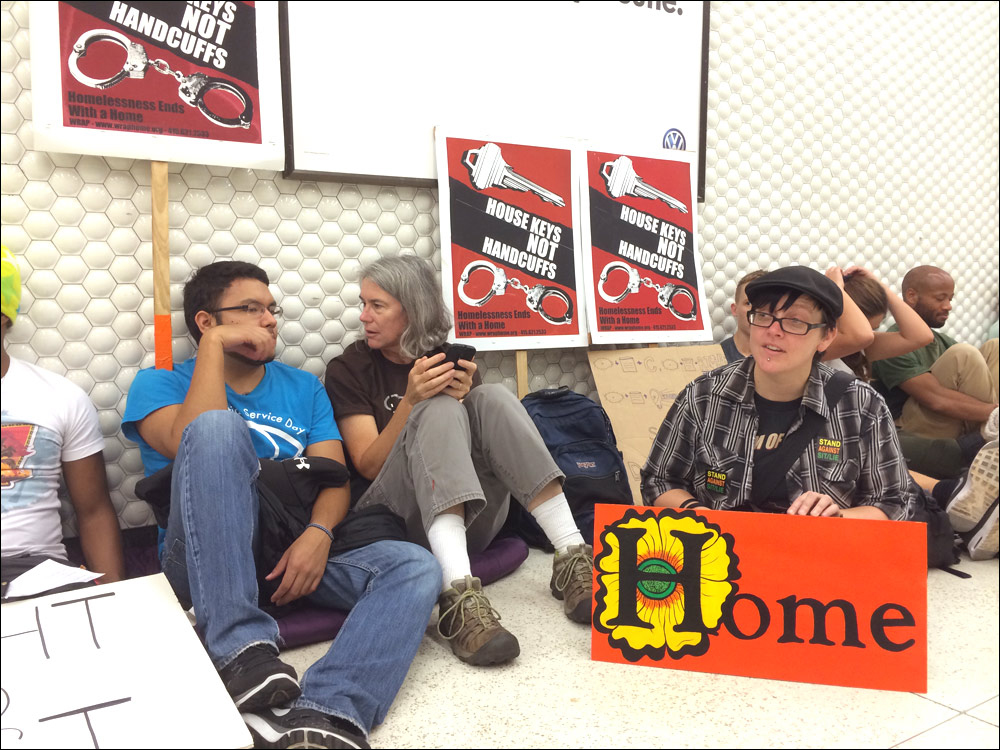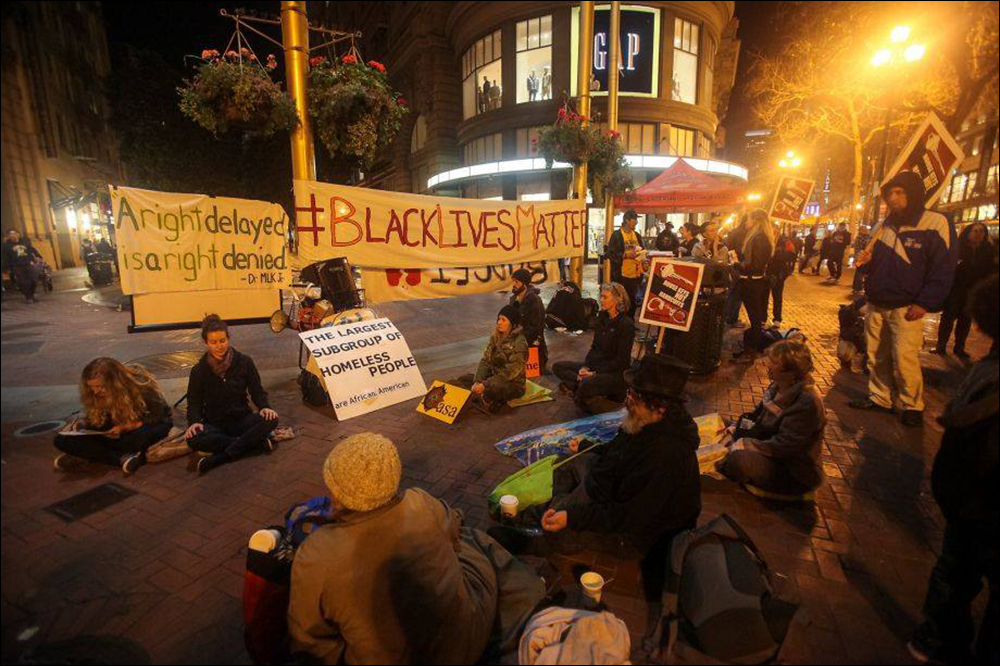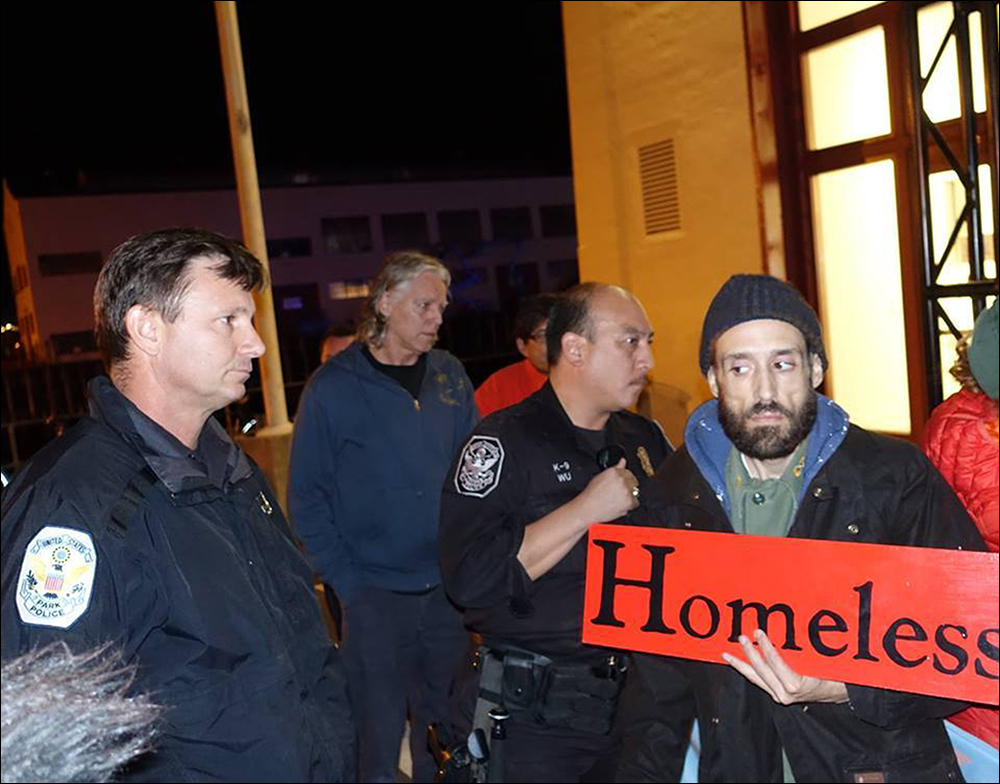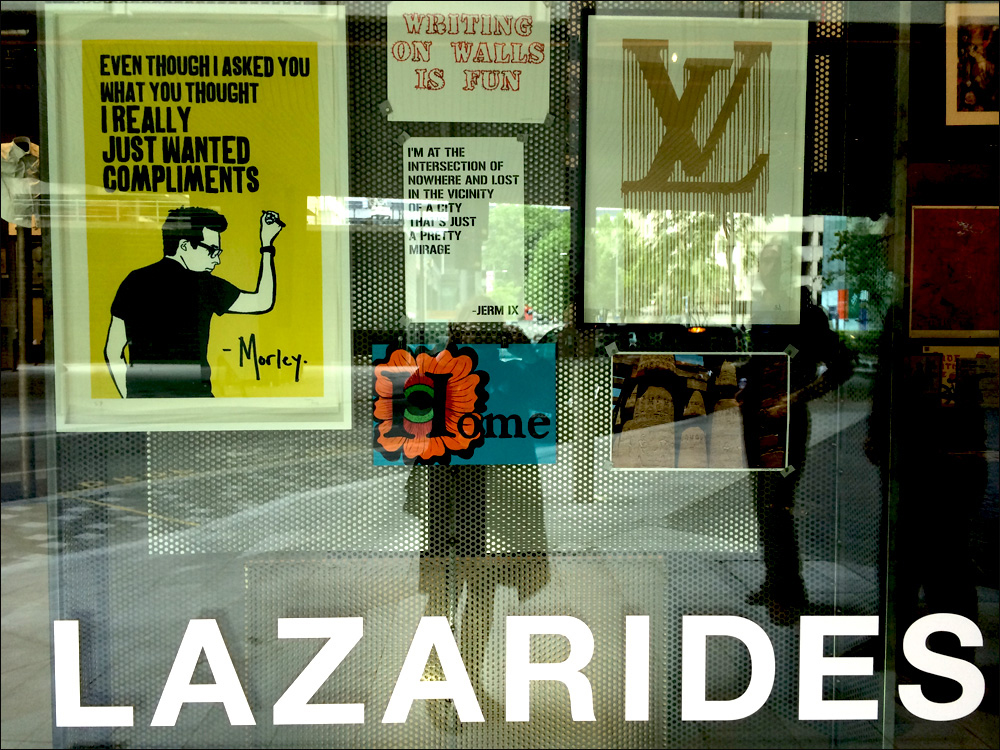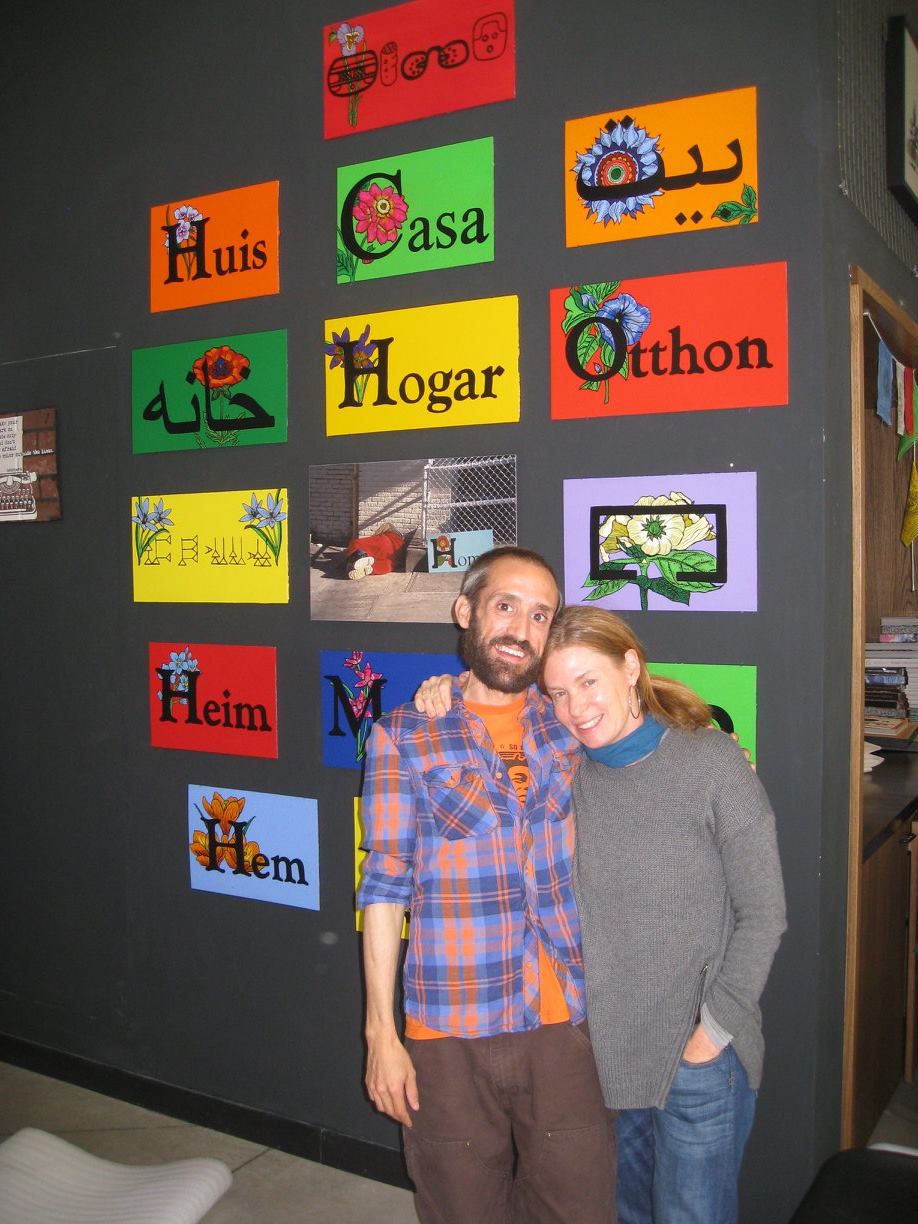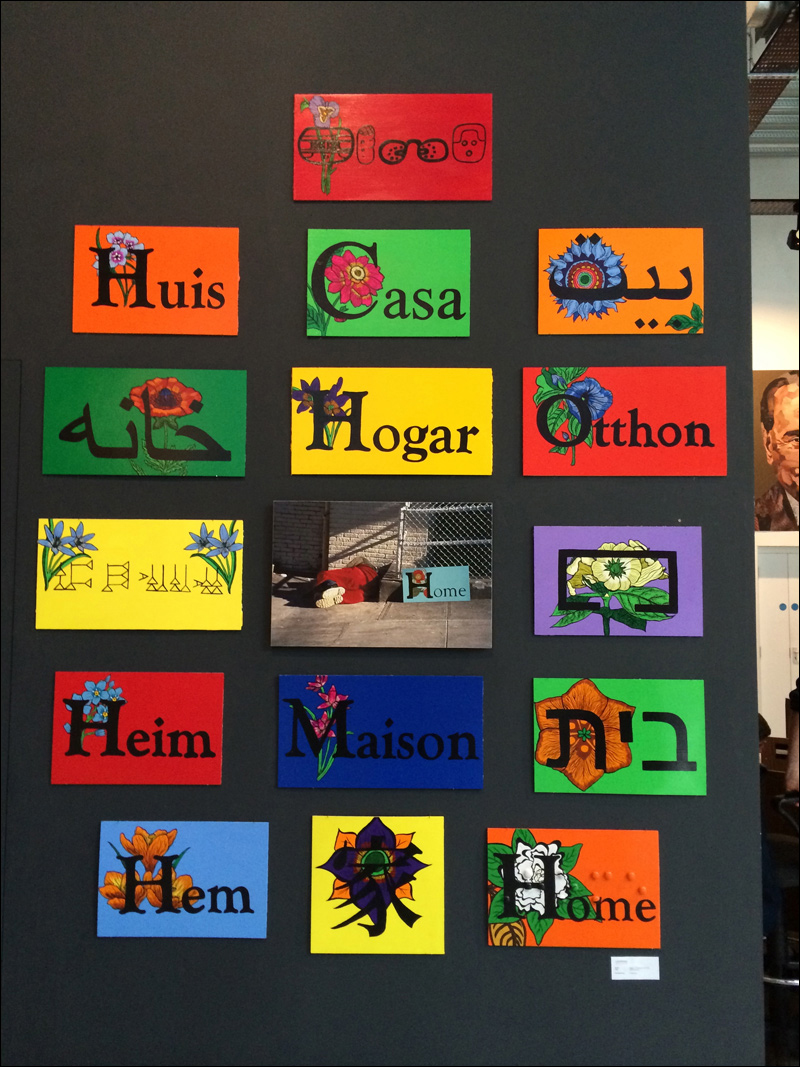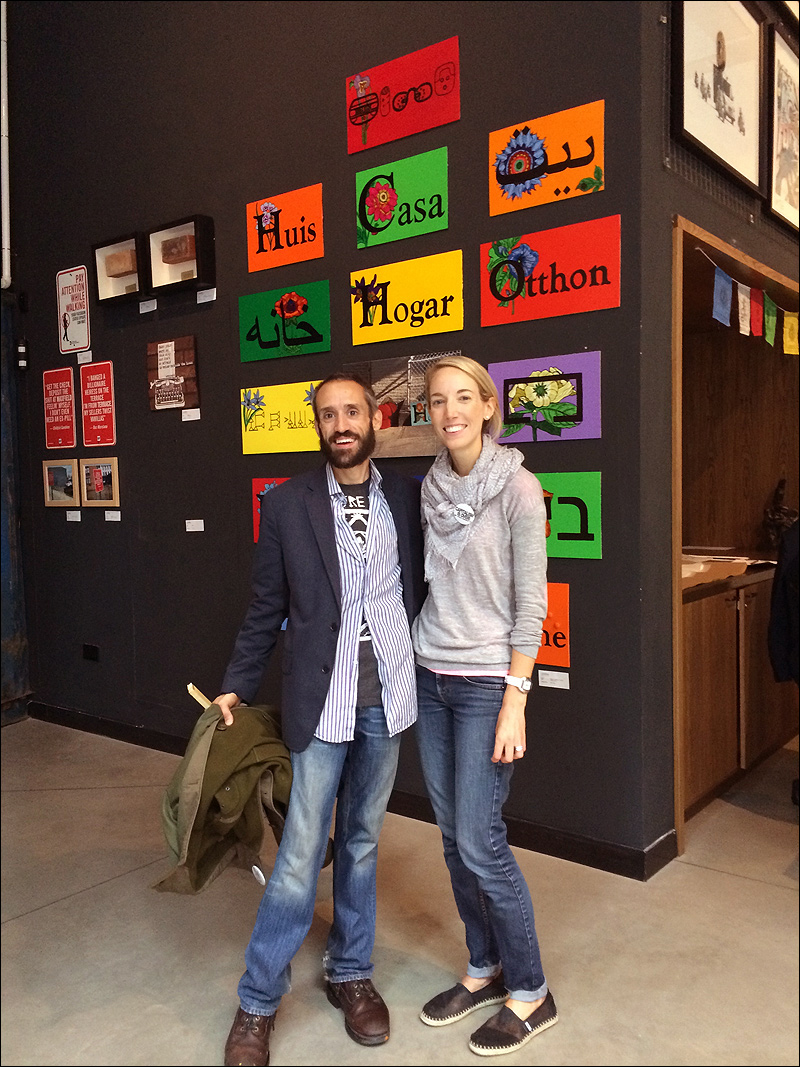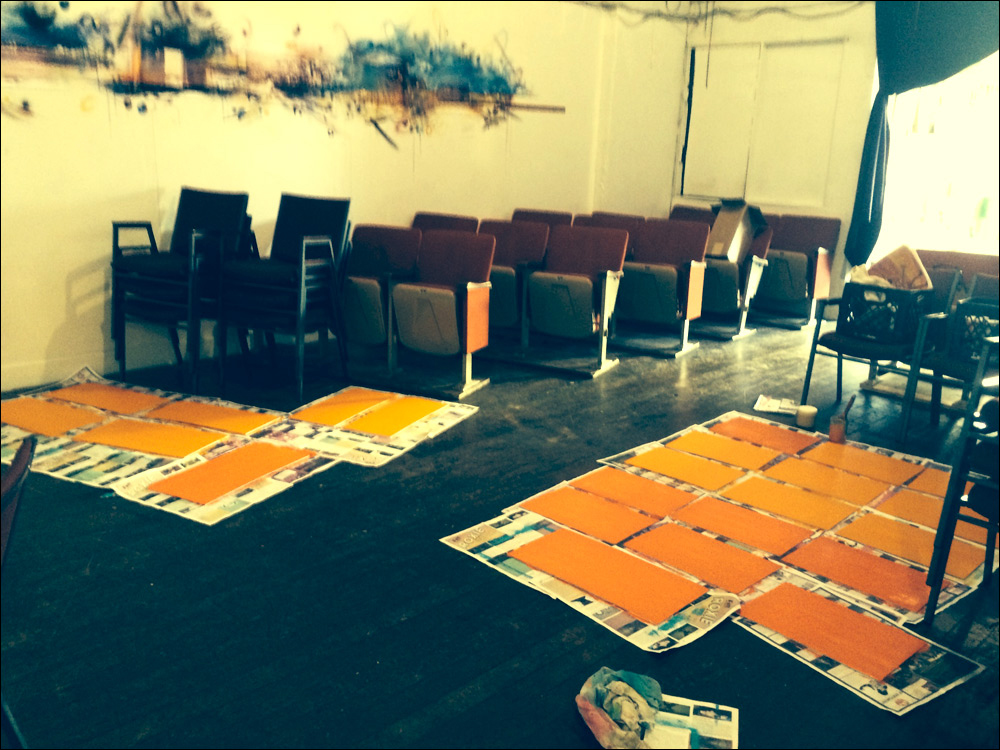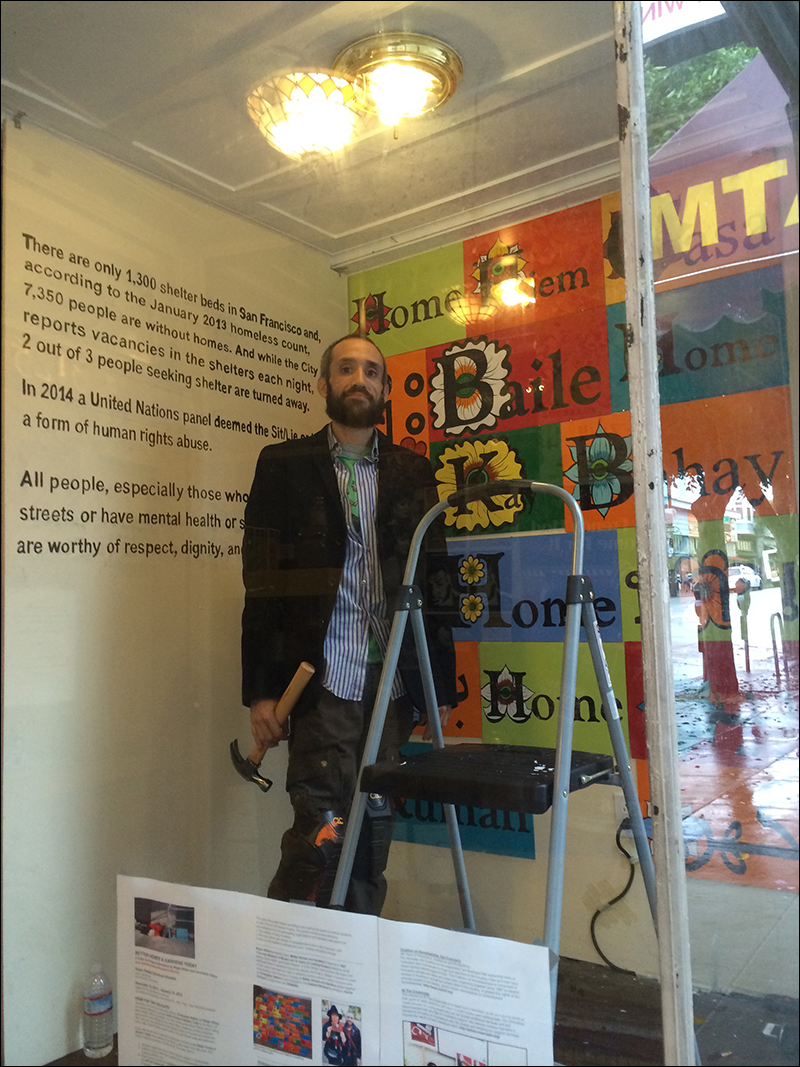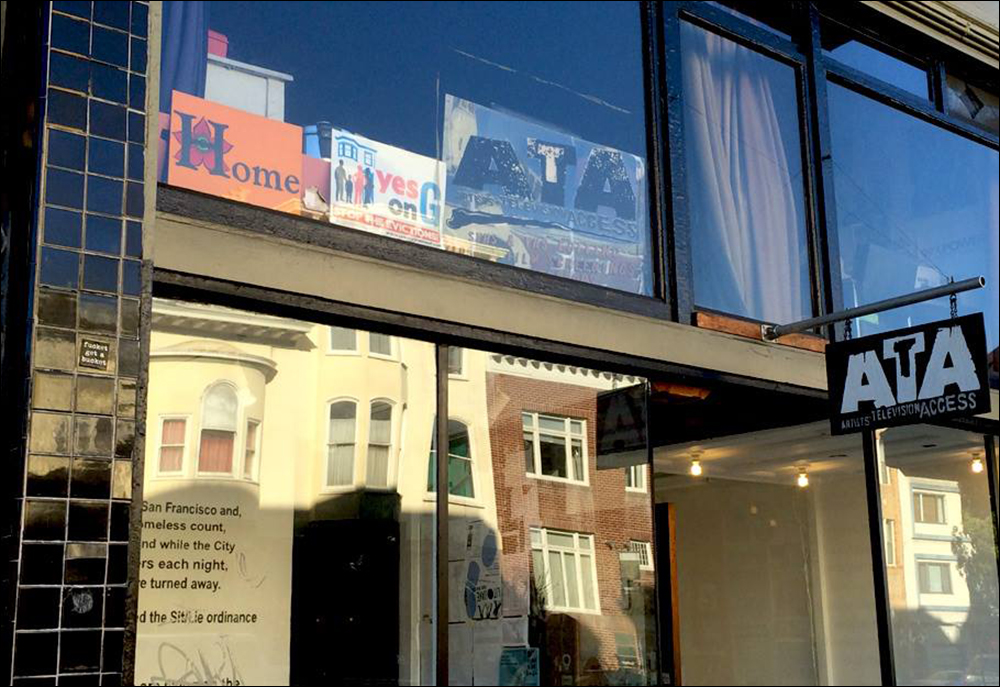Better Homes & Gardens Today
Better Homes & Gardens Today is a public art project by Megan Wilson and Christopher Statton developed to heighten awareness around “home” and the realities of housing instability and homelessness.
Better Homes & Gardens Today, Megan Wilson and Christopher Statton, Public Project, 2014 - present
Better Homes & Gardens Today is a public art project by Megan Wilson and Christopher Statton developed to:
1) Heighten awareness around “home” and the realities of homelessness;
2) Cultivate a dialog within communities and amongst disparate groups about housing instability; and
3) To raise money to benefit The Gubbio Project, the Coalition On Homelessness, and At The Crossroads, organizations working to address homelessness in San Francisco.
Wilson and Statton are creating a limited edition of 300 pairs of hand-painted “Home” signs. The single word for “Home” is painted in black in different languages against a color background and with a flower. The signs are painted on 1⁄4" plywood and range in size from 12"x18" to 16"x30."
The signs are available for purchase for $100/pair. The purchasers will get one sign and the other sign will be donated to one of the three partner organizations to use as they see best fit). Purchasers will also be provided with more information on each of the organizations and how they can further help. All of the proceeds and the signs purchased for the organizations will be divided evenly and go to the three partners (Gubbio Project, Coalition On Homelessness, and At The Crossroads).
Signs are available for purchase on the project's Website at:
www.BetterHomesAndGardensToday.org.
All people, especially those who are living on the streets or have mental health or substance abuse issues, are worthy of respect, dignity, and loving kindness.
ATA
Wilson and Statton have presented the project in the storefront window at ATA (Artists’ Television Access) in 2014 and 2015 and in the storefront window of the Roxie Theater in 2015.
Events
Throughout the project Statton and Wilson have hosted free events at various locations (e.g. ATA and the Roxie):
The Gubbio Project, St. Boniface Church, Tenderloin, San Francisco, CA 2014
Impact of Lack of Sleep
One of the most overlooked, yet greatest health risks for the homeless is the lack of sleep. San Diego-based blogger and self-proclaimed “chronic homeless man” Kevin Barbieux, who writes under the name The Homeless Guy states in the article Homelessness and the Impossibility of a Good Night’s Sleep by Hanna Brooks Olsen in the August 2014 issue of The Atlantic that “Without a doubt, sleep is the biggest issue for homeless people …homeless advocates are always focused on what are believed to be the root causes of homelessness, and providing the basics of food, shelter, and clothing to those who do without, and although those things are important in their own way, they don't affect homeless people with the intensity that sleep does (or the lack thereof).” And yet, says Eowyn Rieke, a physician with Outside In Portland, Oregon, the problem of insufficient sleep is “an unrecognized” one. Even within the medical community that deals directly with the homeless, “we don’t talk enough about these concerns with our patients.” Chronic diseases, such as hypertension, asthma, diabetes, mental health problems and other ongoing conditions, are difficult to manage under stressful circumstances and worsen with lack of sleep. Additionally, acute problems such as infections, injuries, and pneumonia are difficult to heal when there is no place to rest and recuperate.
The Roxie
Hate Crimes Against People Experiencing Housing Instability
Another critical health concern for the homeless is the growing rate-of-hate crimes. Over the past 15 years, the National Coalition on Homelessness (NCH) has recorded 1,437 incidents of crimes committed against the homeless by housed individuals. In 2013 alone, the NCH became aware of 109 attacks, 18 of which resulted in death. The highest percentage of attacks (30%) took place in California. It is important to note that people experiencing homelessness are often treated so poorly by society that attacks are forgotten of or unreported. This reality worsens when one considers that many violent acts against homeless populations go unreported and therefore, the true number of incidents is likely to be substantially higher.
Angelhack founder and CEO Greg Gopman’s comments from his Facebook post in December 2013.
Partners
Since its founding in 2004 The Gubbio Project has offered refuge for thousands of people in the heart of the Tenderloin and encouraged connection between the housed and unhoused. For nine hours each weekday, 6am-3pm, the doors of the sanctuary of St. Boniface are open to all. The mission of The Gubbio Project is to provide a sacred space to sleep or rest and care services for those in need of a safe, compassionate respite that places dignity and respect in the highest regard. Each day, 250 people on average, enter the project, with 95 folks sleeping at any given time in the pews of St. Boniface and others accessing care services. We invite you to visit St. Boniface and see The Gubbio Project firsthand. www.thegubbioproject.org
For decades, the Coalition on Homelessness has developed the leadership skills of homeless San Franciscans to forge true solutions to the housing crisis and beat back mean-spirited attacks against them. The Coalition on Homelessness is comprised of homeless people and allies who have been organizing together since 1987 to expand access to housing in one of the richest cities in the country, to protect the rights of the poorest people in our society, and to create real solutions to contemporary homelessness. http://www.cohsf.org/
The mission of At The Crossroads (ATC) is to reach out to homeless youth and young adults at their point of need, and work with them to build healthy and fulfilling lives. Their innovative model focuses on young people who do not access traditional services and are disconnected from any type of consistent support. ATC remove common barriers to service by bringing our counselors onto the streets and shaping our support services around the needs of each individual client.
http://atthecrossroads.org/
In 2000 Megan Wilson hand painted 250 signs that read “Home” for her project Better Homes and Gardens for which she distributed them to residents living on the streets and those in danger of eviction to place in their carts or windows as a sign of solidarity during a period in which evictions were skyrocketing in San Francisco. Better Homes & Gardens Today is an outgrowth of that project with Christopher Statton.
The Impact of the Tech Community on Housing Instability in the Bay Area
As part of the project Statton and Wilson have been introduced to and reached out to some of the Bay Area's tech corporations and their employees, including Twitter, Facebook, Zendesk, Yammer, Google, Dropbox, and Salesforce to invite them to attend the project's events. The invitation was extended to these corporations, who are relatively new to the area, to provide them with the opportunity to learn about, contribute to, and support a community that is in great need and that they are now working/ living among and having a significant impact on.
The response from these corporations was disappointing. Twitter had signed up to volunteer at The Gubbio Project for its Twitter For Good day - half a day that Twitter gives its employees to volunteer at an organization of their choosing; however they had no idea what they would be volunteering to do. Thirty volunteers from Twitter spent their four hours with the Gubbio learning about the organization, the realities of homelessness, and how they could help support Gubbio through Better Homes & Gardens Today. In the end, only three Twitter employees purchased a sign to support The Gubbio Project.
The five other corporations responded with disinterest. Sadly, this was not surprising given how little support the tech community has provided towards this critical situation; rather, there have been far more instances of cruelty and disregard leveled at people in their communities who are struggling with housing instability.
Twitter For Good half day at The Gubbio Project.
Responses to San Francisco’s Sit/Lie Ordinance and the City’s treatment of Those Experiencing Homelessness/Housing Instability
A 2012 report released by the City Hall Fellows found that San Francisco’s Sit/Lie ordinance has been unequivocally ineffective, citing that the reported citations were issued to the same 19 offenders, who were reported as chronically homeless and incapable of paying the $100 fines. In March, 2014 the U.N. panel that reviews countries' compliance with a human-rights treaty says laws in U.S. communities that subject the homeless to prosecution for everyday activities - including "sit-lie" ordinances like San Francisco's - violate international standards and should be abolished nationwide. The United States, the report said, should "engage with state and local authorities" to eliminate all such laws, withdraw funding from communities that enforce the laws, and work with social service, health care and law enforcement professionals "to intensify efforts to find solutions for the homeless in accordance with human-rights standards."
Margaret Cho
In 2014 Margaret Cho launched a campaign in support of folks experiencing homelessness in San Francisco. In November and December Cho, along with other high profile friends, such as Bob Mould performed free shows in neighborhoods most impacted, collecting donations that were directly distributed to folks living on the streets. Cho also graciously supported the Better Homes & Gardens Today campaign - Thank You Margaret Cho!
Margaret Cho supports Better Homes & Gardens Today with Christopher Statton
Lazarides Gallery, London UK, 2015
In conjunction with the release of the book Street Messages that features murals works by Megan Wilson, author Nicholas Ganz invited Wilson and Statton to be a part of the book launch exhibition at Lazarides Gallery in London. Wilson and Statton created a special edition for the exhibition that featured the ‘Home’ signs in all the languages included in Street Messages.
San Francisco Museum of Modern Art
Megan Wilson's original project Better Homes and Gardens for which she hand-painted 250 signs and distributed them to residents living on the streets and those in danger of eviction to place in their carts or windows as a sign of solidarity during a period in which evictions were skyrocketing in San Francisco, is featured in San Francisco Museum of Modern Art 75 Years of Looking Forward, edited by Janet Bishop, Corey Keller, and Sarah Roberts. Footage of Better Homes and Gardens edited together by Christopher Statton is also included in the Oakland Museum's exhibition Fertile Ground in collaboration with SFMoMA.
Wilson’s project Better Homes and Gardens included in San Francisco Museum of Modern Art 75 Years of Looking Forward
A clip from the feature length documentary Golden City, by Walter Thompson, about how the tech industry is reshaping housing and transportation in San Francisco.



